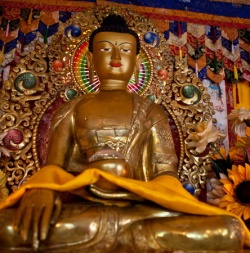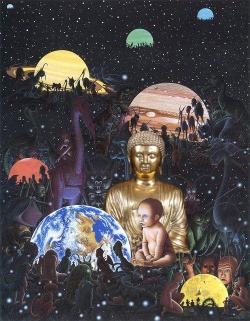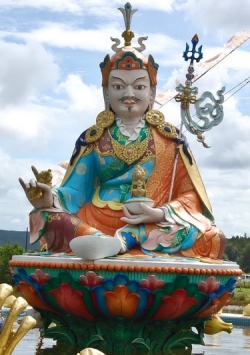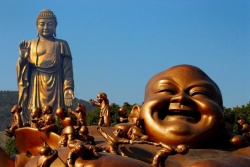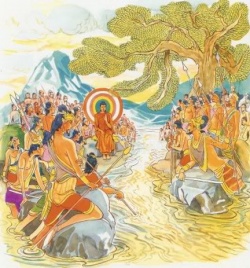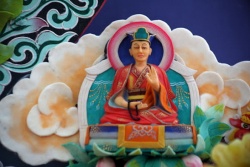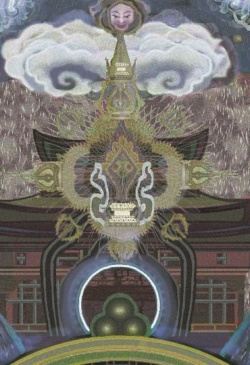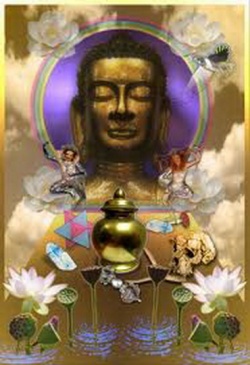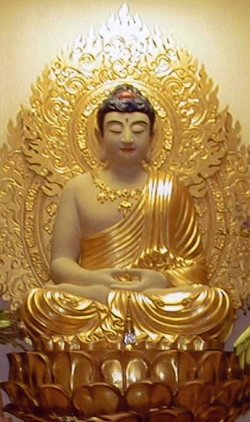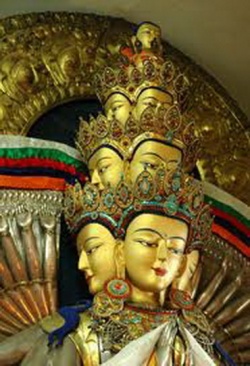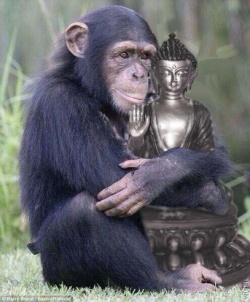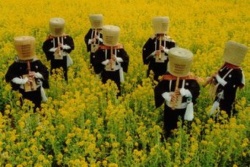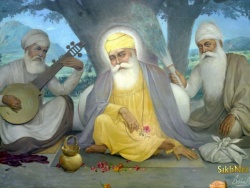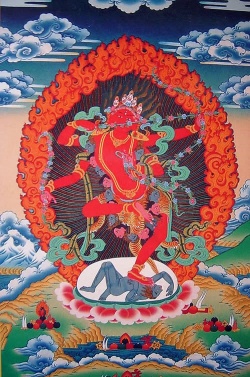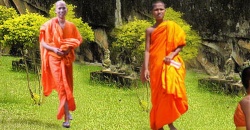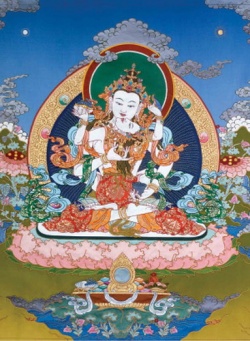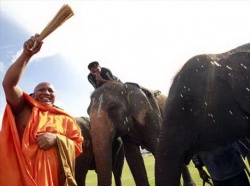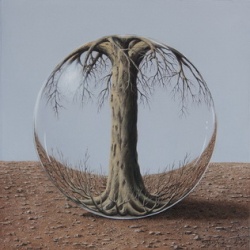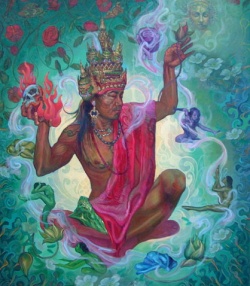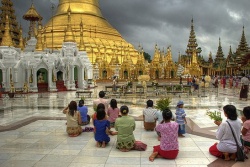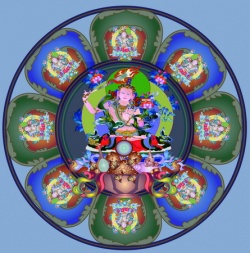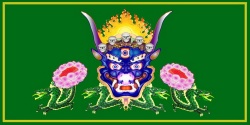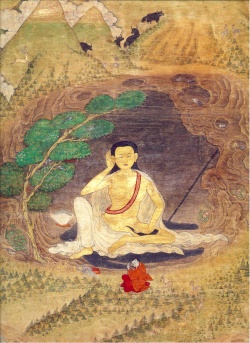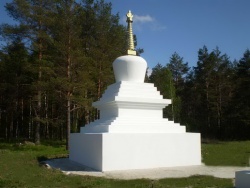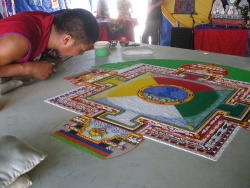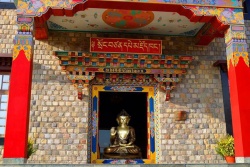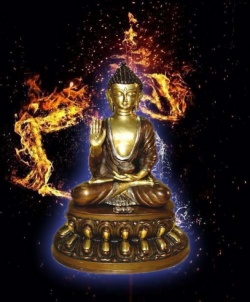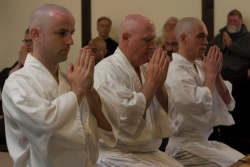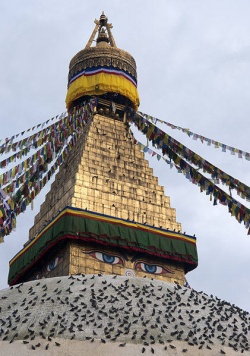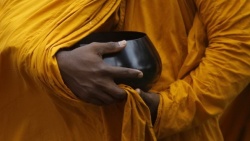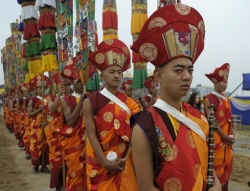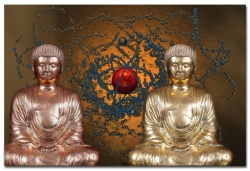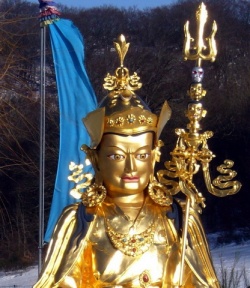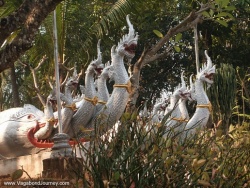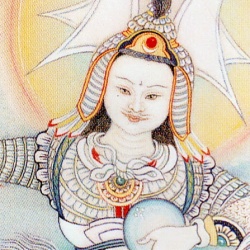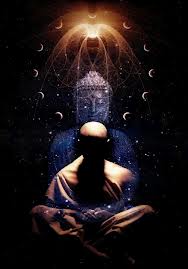Difference between revisions of "Advaita Vedanta"
(Created page with "{{DisplayImages|690|2076|3042|1465|3233|3582|2929|817|1641|321|2075|979|2879|1953|2059|1139|1940|1419|2373|2489|1249|1113|97|2860|2488|1013|599|1877|3479|2159|1981|2055|2874|2...") |
m (Text replacement - "]]]" to "]])") |
||
| (3 intermediate revisions by one other user not shown) | |||
| Line 1: | Line 1: | ||
{{DisplayImages|690|2076|3042|1465|3233|3582|2929|817|1641|321|2075|979|2879|1953|2059|1139|1940|1419|2373|2489|1249|1113|97|2860|2488|1013|599|1877|3479|2159|1981|2055|2874|2820|2194|1283|1913|2253|3330|896|2192|2025|53|2547|3037|2721|1184|2650|1005|3409}} | {{DisplayImages|690|2076|3042|1465|3233|3582|2929|817|1641|321|2075|979|2879|1953|2059|1139|1940|1419|2373|2489|1249|1113|97|2860|2488|1013|599|1877|3479|2159|1981|2055|2874|2820|2194|1283|1913|2253|3330|896|2192|2025|53|2547|3037|2721|1184|2650|1005|3409}} | ||
| − | Advaita Vedanta is a sub-school of the Vedanta school of Vedic or Hindu philosophy and religious practice, giving "a unifying interpretation of the whole body of Upanishads". The principal, though not the first, exponent of the Advaita Vedanta-interpretation was Shankara Bhagavadpada who systematised the works of preceding philosophers. Its teachings have influenced various sects of Hinduism. | + | [[Advaita Vedanta]] is a sub-school of the [[Vedanta]] school of {{Wiki|Vedic}} or {{Wiki|Hindu philosophy}} and [[religious]] practice, giving "a unifying interpretation of the whole [[body]] of [[Upanishads]]". The [[principal]], though not the first, exponent of the [[Advaita]] Vedanta-interpretation was [[Shankara]] Bhagavadpada who systematised the works of preceding [[philosophers]]. Its teachings have influenced various sects of [[Hinduism]]. |
| − | The key source texts for all schools of Vedānta are the Prasthanatrayi, the canonical texts consisting of the Upanishads, the Bhagavad Gita and the Brahma Sutras, of which they give a philosophical interpretation and elucidation. | + | The key source texts for all schools of [[Vedānta]] are the Prasthanatrayi, the [[Wikipedia:canonical|canonical]] texts consisting of the [[Upanishads]], the [[Bhagavad Gita]] and the [[Brahma]] [[Sutras]], of which they give a [[philosophical]] interpretation and elucidation. |
| − | Advaita (not-two in Sanskrit) refers to the identity of the true Self, Atman, which is pure consciousness, and the highest Reality, Brahman, which is also pure consciousness. Followers seek liberation/release by acquiring vidyā (knowledge) of the identity of Atman and Brahman. Attaining this liberation takes a long preparation and training under the guidance of a guru. | + | [[Advaita]] (not-two in [[Sanskrit]]) refers to the [[Wikipedia:Identity (social science)|identity]] of the [[true Self]], [[Atman]], which is [[pure consciousness]], and the [[highest]] [[Reality]], [[Brahman]], which is also [[pure consciousness]]. Followers seek liberation/release by acquiring [[vidyā]] ([[knowledge]]) of the [[Wikipedia:Identity (social science)|identity]] of [[Atman]] and [[Brahman]]. [[Attaining]] this [[liberation]] takes a long preparation and training under the guidance of a [[guru]]. |
| − | Advaita developed in a multi-faceted religious and philosophical landscape. The tradition developed in interaction with the other traditions of India, Buddhism, Vaishnavism and Shaivism, as well as the other schools of Vedanta. In modern times, due to western Orientalism and Perennialism, and its influence on Indian Neo-Vedanta and Hindu nationalism, Advaita Vedanta has acquired a broad acceptance in Indian culture and beyond as the paradigmatic example of Hindu spirituality. | + | [[Advaita]] developed in a multi-faceted [[religious]] and [[philosophical]] landscape. The [[tradition]] developed in interaction with the other [[traditions]] of [[India]], [[Buddhism]], [[Vaishnavism]] and {{Wiki|Shaivism}}, as well as the other schools of [[Vedanta]]. In {{Wiki|modern}} times, due to {{Wiki|western}} {{Wiki|Orientalism}} and [[Wikipedia:Perennial Philosophy|Perennialism]], and its influence on [[Indian]] Neo-Vedanta and [[Hindu]] [[nationalism]], [[Advaita Vedanta]] has acquired a broad [[acceptance]] in [[Indian]] {{Wiki|culture}} and beyond as the paradigmatic example of [[Hindu]] [[spirituality]]. |
| − | ==History of Advaita Vedanta== | + | ==History of [[Advaita Vedanta]]== |
| − | Advaita Vedanta existed prior to Shankara, but found its most influential expounder in Shankara. | + | [[Advaita Vedanta]] existed prior to [[Shankara]], but found its most influential expounder in [[Shankara]]. |
| − | ===Pre-Shankara Advaita=== | + | ===Pre-Shankara [[Advaita]]=== |
| − | Of the Vedanta-school before the composition of the Brahma Sutras (400–450 CE) almost nothing is known. Very little also is known of the period between the Brahmansutras and Shankara (first half of the 8th century CE). Only two writings of this period have survived: the Vākyapadīya, written by Bhartṛhari (second half 5th century), and the Māndūkya-kārikā written by Gaudapada (7th century CE). | + | Of the Vedanta-school before the composition of the [[Brahma]] [[Sutras]] (400–450 CE) almost nothing is known. Very little also is known of the period between the Brahmansutras and [[Shankara]] (first half of the 8th century CE). Only two writings of this period have survived: the Vākyapadīya, written by [[Bhartṛhari]] (second half 5th century), and the Māndūkya-kārikā written by [[Gaudapada]] (7th century CE). |
| − | ====Earliest Vedanta==== | + | ====Earliest [[Vedanta]]==== |
| − | :''See also: {{Wiki|Vedas}}, {{Wiki|Upanishads}}, and {{Wiki|Darsanas}} | + | :''See also: {{Wiki|Vedas}}, {{Wiki|Upanishads}}, and {{Wiki|Darsanas}}<br/> |
| − | According to Balasubramanian, the Vedantic philosophy is as old as the Vedas, arguing that the basic ideas of the Vedanta systems are derived from the Vedas. During the Vedic period (1500–600 BCE) the Rishis formulated their religio-philosophical and poetical visions, which are further explored in the Upanishads, the jnāna-kānda of the Vedas. The Upanishads don't contain "a rigorous philosophical inquiry identifying the doctrines and formulating the supporting arguments". This philosophical inquiry was performed by the darsanas, the various philosophical schools. | + | According to Balasubramanian, the {{Wiki|Vedantic}} [[philosophy]] is as old as the [[Vedas]], arguing that the basic [[ideas]] of the [[Vedanta]] systems are derived from the [[Vedas]]. During the {{Wiki|Vedic}} period (1500–600 BCE) the [[Rishis]] formulated their religio-philosophical and poetical [[visions]], which are further explored in the [[Upanishads]], the jnāna-kānda of the [[Vedas]]. The [[Upanishads]] don't contain "a rigorous [[philosophical]] inquiry identifying the [[doctrines]] and formulating the supporting arguments". This [[philosophical]] inquiry was performed by the {{Wiki|darsanas}}, the various [[philosophical]] schools. |
| − | Deutsch and Dalvi point out that in the Indian context texts "are only part of a tradition which is preserved in its purest form in the oral transmission as it has been going on." The Upanishads form the basic texts, of which Vedanta gives an interpretation. | + | Deutsch and Dalvi point out that in the [[Indian]] context texts "are only part of a [[tradition]] which is preserved in its purest [[form]] in the [[oral transmission]] as it has been going on." The [[Upanishads]] [[form]] the basic texts, of which [[Vedanta]] gives an interpretation. |
| − | ====Bādarāyana's Brahma Sutras==== | + | ====Bādarāyana's [[Brahma]] [[Sutras]]==== |
| − | :''Main article: {{Wiki|Brahma Sutras}} | + | :''Main article: {{Wiki|Brahma Sutras}}<br/> |
| − | The Brahma Sutras of Bādarāyana, also called the Vedanta Sutra, were compiled in its present form around 400–450 CE, but "the great part of the Sutra must have been in existence much earlier than that". Estimates of the date of Bādarāyana's lifetime differ between 200 BCE and 200 CE. | + | The [[Brahma]] [[Sutras]] of Bādarāyana, also called the [[Vedanta]] [[Sutra]], were compiled in its {{Wiki|present}} [[form]] around 400–450 CE, but "the great part of the [[Sutra]] must have been in [[existence]] much earlier than that". Estimates of the date of Bādarāyana's [[lifetime]] differ between 200 BCE and 200 CE. |
| − | The Brahma Sutra is a critical study of the teachings of the Upanishads. It was and is a guide-book for the great teachers of the Vedantic systems. Bādarāyana was not the first person to systematise the teachings of the Upanishads. He refers to seven Vedantic teachers before him: | + | The [[Brahma Sutra]] is a critical study of the teachings of the [[Upanishads]]. It was and is a guide-book for the great [[teachers]] of the {{Wiki|Vedantic}} systems. Bādarāyana was not the first [[person]] to systematise the teachings of the [[Upanishads]]. He refers to seven {{Wiki|Vedantic}} [[teachers]] before him: |
| − | : From the way in which Bādarāyana cites the views of others it is obvious that the teachings of the Upanishads must have been analyzed and interpreted by quite a few before him and that his sytematization of them in 555 sutras arranged in four chapters must have been the last attempt, most probably the best. | + | : From the way in which Bādarāyana cites the [[views]] of others it is obvious that the teachings of the [[Upanishads]] must have been analyzed and interpreted by quite a few before him and that his sytematization of them in 555 [[sutras]] arranged in four chapters must have been the last attempt, most probably the best. |
| − | ====Between Brahma Sutras and Shankara==== | + | ====Between [[Brahma]] [[Sutras]] and [[Shankara]]==== |
| − | According to Nakamura, "there must have been an enormous number of other writings turned out in this period, but unfortunately all of them have been scattered or lost and have not come down to us today". In his commentaries, Shankara mentions 99 different predecessors of his Sampradaya. In the beginning of his commentary on the Brhadaranyaka Upanishad Shankara salutes the teachers of the Brahmavidya Sampradaya. Pre-Shankara doctrines and sayings can be traced in the works of the later schools, which does give insight into the development of early Vedanta philosophy. | + | According to [[Nakamura]], "there must have been an enormous number of other writings turned out in this period, but unfortunately all of them have been scattered or lost and have not come down to us today". In his commentaries, [[Shankara]] mentions 99 different predecessors of his [[Sampradaya]]. In the beginning of his commentary on the Brhadaranyaka [[Upanishad]] [[Shankara]] salutes the [[teachers]] of the Brahmavidya [[Sampradaya]]. Pre-Shankara [[doctrines]] and sayings can be traced in the works of the later schools, which does give [[insight]] into the [[development]] of early [[Vedanta]] [[philosophy]]. |
| − | The names of various important early Vedanta thinkers have been listed in the Siddhitraya by Yamunācārya (c.1050), the Vedārthasamgraha by Rāmānuja (c.1050–1157), and the Yatīndramatadīpikā by Śrīnivāsa-dāsa. Combined together, at least fourteen thinkers are known to have existed between the composition of the Brahman Sutras and Shankara's lifetime. | + | The names of various important early [[Vedanta]] thinkers have been listed in the Siddhitraya by Yamunācārya (c.1050), the Vedārthasamgraha by Rāmānuja (c.1050–1157), and the Yatīndramatadīpikā by Śrīnivāsa-dāsa. Combined together, at least fourteen thinkers are known to have existed between the composition of the [[Brahman]] [[Sutras]] and Shankara's [[lifetime]]. |
| − | Although Shankara is often considered to be the founder of the Advaita Vedanta school, according to Nakamura, comparison of the known teachings of these early Vedantins and Shankara's thought shows that most of the characteristics of Shankara's thought "were advocated by someone before Śankara". Shankara "was the person who synthesized the Advaita-vāda which had previously existed before him". In this synthesis, he was the rejuvenator and defender of ancient learning. He was an unequalled commentator, due to whose efforts and contributions the Advaita Vedanta assumed a dominant position within Indian philosophy. | + | Although [[Shankara]] is often considered to be the founder of the [[Advaita Vedanta]] school, according to [[Nakamura]], comparison of the known teachings of these early {{Wiki|Vedantins}} and Shankara's [[thought]] shows that most of the [[characteristics]] of Shankara's [[thought]] "were advocated by someone before Śankara". [[Shankara]] "was the [[person]] who synthesized the Advaita-vāda which had previously existed before him". In this synthesis, he was the rejuvenator and defender of {{Wiki|ancient}} {{Wiki|learning}}. He was an unequalled commentator, due to whose efforts and contributions the [[Advaita Vedanta]] assumed a dominant position within [[Indian philosophy]]. |
| − | ===Gaudapada=== | + | ===[[Gaudapada]]=== |
| − | :''Main article: {{Wiki|Gaudapada}} | + | :''Main article: {{Wiki|Gaudapada}}<br/> |
| − | Gaudapada (6th century) was the teacher of Govinda Bhagavatpada and the grandteacher of Shankara. | + | [[Gaudapada]] (6th century) was the [[teacher]] of [[Govinda]] Bhagavatpada and the grandteacher of [[Shankara]]. |
| − | ====Māṇḍukya Kārikā==== | + | ====Māṇḍukya [[Kārikā]]==== |
| − | Gaudapada wrote or compiled the Māṇḍukya Kārikā, also known as the Gauḍapāda Kārikā and as the Āgama Śāstra. The Māṇḍukya Kārikā is a commentary in verse form on the Mandukya Upanishad, one of the shortest but most profound Upanishads, or mystical Vedas, consisting of just 13 prose sentences. In Shankara's time it was considered to be a Śruti, but not particularly important. In later periods it acquired a higher status, and eventually it was regarded as expressing the essence of the Upanisad philosophy. | + | [[Gaudapada]] wrote or compiled the Māṇḍukya [[Kārikā]], also known as the [[Gauḍapāda]] [[Kārikā]] and as the [[Āgama]] [[Śāstra]]. The Māṇḍukya [[Kārikā]] is a commentary in verse [[form]] on the {{Wiki|Mandukya Upanishad}}, one of the shortest but most profound [[Upanishads]], or [[mystical]] [[Vedas]], consisting of just 13 prose sentences. In Shankara's [[time]] it was considered to be a [[Śruti]], but not particularly important. In later periods it acquired a higher {{Wiki|status}}, and eventually it was regarded as expressing the [[essence]] of the [[Upanisad]] [[philosophy]]. |
| − | The Māṇḍukya Kārikā is the earliest extent systematic treatise on Advaita Vedānta, though it is not the oldest work to present Advaita views, nor the only pre-Sankara work with the same type of teachings. | + | The Māṇḍukya [[Kārikā]] is the earliest extent systematic treatise on [[Advaita Vedānta]], though it is not the oldest work to {{Wiki|present}} [[Advaita]] [[views]], nor the only pre-Sankara work with the same type of teachings. |
| − | ====Buddhist influences==== | + | ====[[Buddhist]] [[influences]]==== |
| − | According to B.N.K. Sharma, the early commentators on the Brahma Sutras were all realists, or pantheist realists. During the same period, the 2nd-5th century CE, there was a great idealist revival in Buddhism, which countered the criticisms of the Hindu realists. The works of Buddhist thinkers like Nagasena, Buddhaghosa and Nagarjuna, all of them Brahmin converts to Buddhism, "created a great sensation and compelled admiration all around". Other Brahmins, faithful to Brahminism but equally impressed by these developments in Buddhist thought, looked for and found in some portions of the Upanishads "many striking approaches to the metaphysical idealism of the Buddhists". During the 5th and 6th centuries there was a further development of Buddhist thought with the development of the Yogacara school. | + | According to B.N.K. Sharma, the early commentators on the [[Brahma]] [[Sutras]] were all realists, or pantheist realists. During the same period, the 2nd-5th century CE, there was a great {{Wiki|idealist}} revival in [[Buddhism]], which countered the criticisms of the [[Hindu]] realists. The works of [[Buddhist]] thinkers like [[Nagasena]], [[Buddhaghosa]] and [[Nagarjuna]], all of them [[Brahmin]] converts to [[Buddhism]], "created a great [[sensation]] and compelled admiration all around". Other [[Brahmins]], faithful to {{Wiki|Brahminism}} but equally impressed by these developments in [[Buddhist]] [[thought]], looked for and found in some portions of the [[Upanishads]] "many striking approaches to the [[metaphysical]] {{Wiki|idealism}} of the [[Buddhists]]". During the 5th and 6th centuries there was a further [[development]] of [[Buddhist]] [[thought]] with the [[development]] of the [[Yogacara]] school. |
| − | It was Gaudapada who further bridged Buddhism and Vedanta. He took over the Buddhist doctrines that ultimate reality is pure consciousness (vijñapti-mātra) and "that the nature of the world is the four-cornered negation". Gaudapada "wove [both doctrines] into a philosophy of the Mandukaya Upanisad, which was further developed by Shankara". At the same time, Gaudapada emphatically rejected the epistemic idealism of the Buddhists, arguing that there was a difference between objects seen in dreams and real objects in the world, although both were ultimately unreal. He also rejected the pluralism and momentariness of consciousnesses, which were core doctrines of the Vijnanavada school, and their techniques for achieving liberation. | + | It was [[Gaudapada]] who further bridged [[Buddhism and Vedanta]]. He took over the [[Buddhist]] [[doctrines]] that [[ultimate reality]] is [[pure consciousness]] ([[vijñapti-mātra]]) and "that the [[nature]] of the [[world]] is the four-cornered {{Wiki|negation}}". [[Gaudapada]] "wove [both [[doctrines]]) into a [[philosophy]] of the Mandukaya [[Upanisad]], which was further developed by [[Shankara]]". At the same [[time]], [[Gaudapada]] emphatically rejected the epistemic {{Wiki|idealism}} of the [[Buddhists]], arguing that there was a difference between [[objects]] seen in [[dreams]] and real [[objects]] in the [[world]], although both were ultimately unreal. He also rejected the {{Wiki|pluralism}} and momentariness of [[consciousnesses]], which were core [[doctrines]] of the [[Vijnanavada school]], and their techniques for achieving [[liberation]]. |
| − | Gaudapada also took over the Buddhist concept of "ajāta" from Nagarjuna's Madhyamaka philosophy, which uses the term "anutpāda". "Ajātivāda", "the Doctrine of no-origination" or non-creation, is the fundamental philosophical doctrine of Gaudapada. | + | [[Gaudapada]] also took over the [[Buddhist]] {{Wiki|concept}} of "ajāta" from [[Nagarjuna's]] [[Madhyamaka philosophy]], which uses the term "[[anutpāda]]". "Ajātivāda", "the [[Doctrine]] of no-origination" or non-creation, is the fundamental [[philosophical]] [[doctrine]] of [[Gaudapada]]. |
| − | Richard King has noted that Ajativada has a radically different meaning in the context of respectively Vedanta and Buddhism. Buddhist writers take Ajativada to imply that there are no essences in factors, and therefore change is possible. Gaudapada made the opposite interpretation, advocating the absolutist position that origination and cessation were unreal, the only Ultimate reality (Brahman) being unoriginated and unchanging. | + | Richard [[King]] has noted that Ajativada has a radically different meaning in the context of respectively [[Vedanta]] and [[Buddhism]]. [[Buddhist]] writers take Ajativada to imply that there are no [[essences]] in factors, and therefore change is possible. [[Gaudapada]] made the opposite interpretation, advocating the [[absolutist]] position that origination and [[cessation]] were unreal, the only [[Ultimate reality]] ([[Brahman]]) being unoriginated and [[unchanging]]. |
| − | According to Gaudapada, the Absolute is not subject to birth, change and death. The Absolute is aja, the unborn eternal. The empirical world of appearances is considered unreal, and not absolutely existent. | + | According to [[Gaudapada]], the [[Absolute]] is not [[subject]] to [[birth]], change and [[death]]. The [[Absolute]] is [[aja]], the {{Wiki|unborn}} [[eternal]]. The [[empirical]] [[world]] of [[appearances]] is considered unreal, and not absolutely [[existent]]. |
| − | ====Shri Gaudapadacharya Math==== | + | ====[[Shri]] Gaudapadacharya Math==== |
| − | :''Main article: {{Wiki|Shri Gaudapadacharya Math}} | + | :''Main article: {{Wiki|Shri Gaudapadacharya Math}}<br/> |
| − | Around 740 AD Gaudapada founded Shri Gaudapadacharya Math, also known as Kavaḷē maṭha. It is located in Kavale, Ponda, Goa, and is the oldest matha of the South Indian Saraswat Brahmins. | + | Around 740 AD [[Gaudapada]] founded [[Shri]] Gaudapadacharya Math, also known as Kavaḷē [[maṭha]]. It is located in Kavale, Ponda, Goa, and is the oldest matha of the [[South]] [[Indian]] Saraswat [[Brahmins]]. |
| − | Unlike other mathas, Shri Gaudapadacharya matha is not a polemical center established to influence the faith of all Hindus, its jurisdiction is limited to only Dakshinatya Saraswat Brahmins. | + | Unlike other [[mathas]], [[Shri]] Gaudapadacharya matha is not a polemical center established to influence the [[faith]] of all [[Hindus]], its jurisdiction is limited to only Dakshinatya Saraswat [[Brahmins]]. |
| − | ===Adi Shankara=== | + | ==={{Wiki|Adi Shankara}}=== |
| − | :''Main article: {{Wiki|Adi Shankara}} | + | :''Main article: {{Wiki|Adi Shankara}}<br/> |
| − | Adi Shankara (788–820), also known as Śaṅkara Bhagavatpādācārya and Ādi Śaṅkarācārya, synthesised and rejuvenated the doctrine of Advaita. It was Shankara who succeeded in reading Gaudapada's mayavada into Badarayana's Brahma Sutras, "and give it a locus classicus", against the realistic strain of the Brahma Sutras. His interpretation, including works ascribed to him, has become the normative interpretation of Advaita Vedanta. | + | {{Wiki|Adi Shankara}} (788–820), also known as [[Śaṅkara]] Bhagavatpādācārya and [[Ādi]] [[Śaṅkarācārya]], synthesised and rejuvenated the [[doctrine]] of [[Advaita]]. It was [[Shankara]] who succeeded in reading Gaudapada's mayavada into Badarayana's [[Brahma]] [[Sutras]], "and give it a locus classicus", against the {{Wiki|realistic}} strain of the [[Brahma]] [[Sutras]]. His interpretation, including works ascribed to him, has become the normative interpretation of [[Advaita Vedanta]]. |
| − | ====Late-Classical Hinduism==== | + | ====Late-Classical [[Hinduism]]==== |
:''See also [[Wikipedia:History of India#Late Middle Kingdoms - The Late-Classical Age|Late-Classical Age]] and [[Wikipedia:History of Hinduism#Middle Ages|Hinduism Middle Ages]] | :''See also [[Wikipedia:History of India#Late Middle Kingdoms - The Late-Classical Age|Late-Classical Age]] and [[Wikipedia:History of Hinduism#Middle Ages|Hinduism Middle Ages]] | ||
| − | Shankara lived in the time of the so-called "Late classical Hinduism", which lasted from 650 till 1100 CE. The previous period was the "Golden Age of Hinduism" (ca. 320–650 CE), which flourished during the Gupta Empire (320 to 550 CE) until the fall of the Harsha Empire (606 to 647 CE). | + | [[Shankara]] lived in the [[time]] of the so-called "Late classical [[Hinduism]]", which lasted from 650 till 1100 CE. The previous period was the "Golden Age of [[Hinduism]]" (ca. 320–650 CE), which flourished during the {{Wiki|Gupta Empire}} (320 to 550 CE) until the fall of the [[Harsha]] [[Empire]] (606 to 647 CE). |
| − | Prior to this "Golden Age" the "classical synthesis" or "Hindu synthesis" emerged, which incorporated shramanic and Buddhist influences and the emerging bhakti tradition into the Brahmanical fold via the smriti literature. This synthesis emerged under the pressure of the success of Buddhism and Jainism. | + | Prior to this "Golden Age" the "classical synthesis" or "[[Hindu]] synthesis" emerged, which incorporated shramanic and [[Buddhist]] [[influences]] and the [[emerging]] [[bhakti]] [[tradition]] into the [[Brahmanical]] fold via the [[smriti]] {{Wiki|literature}}. This synthesis emerged under the pressure of the [[success]] of [[Buddhism]] and [[Jainism]]. |
| − | During the classical period, power was centralised, along with a growth of far distance trade, standardizarion of legal procedures, and general spread of literacy. Mahayana Buddhism flourished, but the orthodox Brahmana culture began to be rejuvenated by the patronage of the Gupta Dynasty. The position of the Brahmans was reinforced, and the first Hindu temples emerged during the late Gupta age. | + | During the classical period, power was centralised, along with a growth of far distance trade, standardizarion of legal procedures, and general spread of literacy. [[Mahayana Buddhism]] flourished, but the {{Wiki|orthodox}} [[Brahmana]] {{Wiki|culture}} began to be rejuvenated by the {{Wiki|patronage}} of the {{Wiki|Gupta Dynasty}}. The position of the [[Brahmans]] was reinforced, and the first {{Wiki|Hindu temples}} emerged during the late Gupta age. |
| − | After the end of the Gupta Empire and the collapse of the Harsha Empire, power became decentralised in India. Several larger kingdoms emerged, with "countless vasal states". The kingdoms were ruled via a feudal system. Smaller kingdoms were dependent on the protection of the larger kingdoms. "The great king was remote, was exalted and deified", as reflected in the Tantric Mandala, which could also depict the king as the centre of the mandala. | + | After the end of the {{Wiki|Gupta Empire}} and the collapse of the [[Harsha]] [[Empire]], power became decentralised in [[India]]. Several larger {{Wiki|kingdoms}} emerged, with "countless vasal states". The {{Wiki|kingdoms}} were ruled via a [[Wikipedia:Feudalism|feudal]] system. Smaller {{Wiki|kingdoms}} were dependent on the [[protection]] of the larger {{Wiki|kingdoms}}. "The great [[king]] was remote, was [[exalted]] and deified", as reflected in the [[Tantric]] [[Mandala]], which could also depict the [[king]] as the centre of the [[mandala]]. |
| − | The disintegration of central power also lead to regionalisation of religiosity, and religious rivalry. Local cults and languages were enhanced, and the influence of "Brahmanic ritualistic Hinduism" was diminished. Rural and devotional movements arose, along with Shaivism, Vaisnavism, Bhakti and Tantra, though "sectarian groupings were only at the beginning of their development". Religious movements had to compete for recognition by the local lords. Buddhism lost its position, and began to disappear in India. | + | The {{Wiki|disintegration}} of central power also lead to regionalisation of religiosity, and [[religious]] rivalry. Local {{Wiki|cults}} and [[languages]] were enhanced, and the influence of "[[Brahmanic]] [[ritualistic]] [[Hinduism]]" was diminished. Rural and devotional movements arose, along with {{Wiki|Shaivism}}, {{Wiki|Vaisnavism}}, [[Bhakti]] and [[Tantra]], though "{{Wiki|sectarian}} groupings were only at the beginning of their [[development]]". [[Religious]] movements had to compete for [[recognition]] by the local [[lords]]. [[Buddhism]] lost its position, and began to disappear in [[India]]. |
| − | Buddhism, which was supported by the ancient Indian urban civilisation lost influence to the traditional religions, which were rooted in the countryside. In Bengal, Buddhism was even prosecuted. But at the same time, Buddhism was incorporated into Hinduism, when Gaudapada used Buddhist philosophy to reinterpret the Upanishads. This also marked a shift from Atman and Brahman as a "living substance" to "maya-vada", where Atman and Brahman are seen as "pure knowledge-consciousness". According to Scheepers, it is this "maya-vada" view which has come to dominate Indian thought. | + | [[Buddhism]], which was supported by the {{Wiki|ancient Indian}} urban {{Wiki|civilisation}} lost influence to the [[traditional]] [[religions]], which were rooted in the countryside. In {{Wiki|Bengal}}, [[Buddhism]] was even prosecuted. But at the same [[time]], [[Buddhism]] was incorporated into [[Hinduism]], when [[Gaudapada]] used [[Buddhist philosophy]] to reinterpret the [[Upanishads]]. This also marked a shift from [[Atman]] and [[Brahman]] as a "living [[substance]]" to "[[maya-vada]]", where [[Atman]] and [[Brahman]] are seen as "[[pure]] knowledge-consciousness". According to Scheepers, it is this "[[maya-vada]]" [[view]] which has come to dominate [[Indian]] [[thought]]. |
| − | ====Philosophical system==== | + | ====[[Philosophical]] system==== |
| − | Shankara systematised the works of preceding philosophers. His system marks a turn from realism to idealism. | + | [[Shankara]] systematised the works of preceding [[philosophers]]. His system marks a turn from {{Wiki|realism}} to {{Wiki|idealism}}. |
| − | Shankara's synthesis of Advaita Vedanta is summarised in this quote from the Vivekacūḍāmaṇi, one of his Prakaraṇa graṃthas (philosophical treatises): | + | Shankara's synthesis of [[Advaita Vedanta]] is summarised in this quote from the Vivekacūḍāmaṇi, one of his [[Prakaraṇa]] graṃthas ([[philosophical]] treatises): |
: In half a couplet I state, what has been stated by crores of texts; | : In half a couplet I state, what has been stated by crores of texts; | ||
| − | : that is Brahman alone is real, the world is mithyā (not independently existent), | + | : that is [[Brahman]] alone is real, the [[world]] is [[mithyā]] (not {{Wiki|independently}} [[existent]]), |
| − | : and the individual self is nondifferent from Brahman. | + | : and the {{Wiki|individual}} [[self]] is nondifferent from [[Brahman]]. |
According to Sringeri Math, Shankara's message can be summarised even shorter: | According to Sringeri Math, Shankara's message can be summarised even shorter: | ||
| − | : The eternal, impersonal, consciousness Absolute is the Brahman, the one without a second. | + | : The [[eternal]], impersonal, [[consciousness]] [[Absolute]] is the [[Brahman]], the one without a second. |
====Writings==== | ====Writings==== | ||
| − | :''Main article: {{Wiki|Adi Shankara bibliography}} | + | :''Main article: {{Wiki|Adi Shankara bibliography}}<br/> |
| − | Adi Shankara's main works are his commentaries on the Prasthana Trayi, which consist of the Brahma Sūtras, Bhagavad Gītā and the Upanishads. According to Nakamura, Shankara's Brahma-sūtra-bhāsya, his commentary on the Brahma Sūtra, is "the most authoritative and best known work in the Vedānta philosophy". Shankara also wrote a major independent treatise, called "Upadeśa Sāhasrī", expounding his philosophy. | + | Adi Shankara's main works are his commentaries on the Prasthana Trayi, which consist of the [[Brahma]] [[Sūtras]], {{Wiki|Bhagavad Gītā}} and the [[Upanishads]]. According to [[Nakamura]], Shankara's Brahma-sūtra-bhāsya, his commentary on the [[Brahma]] [[Sūtra]], is "the most authoritative and best known work in the [[Vedānta]] [[philosophy]]". [[Shankara]] also wrote a major {{Wiki|independent}} treatise, called "[[Upadeśa]] Sāhasrī", expounding his [[philosophy]]. |
| − | The authenticity of the "Vivekachudamani", a well-known work ascribed to Shankara, is doubtful, though it is "so closely interwoven into the spiritual heritage of Shankara that any analysis of his perspective which fails to consider [this work] would be incomplete". | + | The authenticity of the "Vivekachudamani", a well-known work ascribed to [[Shankara]], is [[doubtful]], though it is "so closely interwoven into the [[spiritual]] heritage of [[Shankara]] that any analysis of his {{Wiki|perspective}} which fails to consider [this work] would be incomplete". |
| − | The authorship of Shankara of his Mandukya Upanishad Bhasya and his supplementary commentary on Gaudapada's Māṇḍukya Kārikā is also disputed. | + | The authorship of [[Shankara]] of his {{Wiki|Mandukya Upanishad}} [[Bhasya]] and his supplementary commentary on Gaudapada's Māṇḍukya [[Kārikā]] is also disputed. |
| − | ====Advaita Mathas==== | + | ====[[Advaita]] [[Mathas]]==== |
| − | :''See also: {{Wiki|Dashanami Sampradaya}} | + | :''See also: {{Wiki|Dashanami Sampradaya}}<br/> |
| − | Advaita Vedanta is, at least in the west, primarily known as a philosophical system. But it is also a tradition of renunciation. Philosophy and renunciation are closely related: | + | [[Advaita Vedanta]] is, at least in the [[west]], primarily known as a [[philosophical]] system. But it is also a [[tradition]] of [[renunciation]]. [[Philosophy]] and [[renunciation]] are closely related: |
| − | : Most of the notable authors in the advaita tradition were members of the sannyasa tradition, and both sides of the tradition share the same values, attitudes and metaphysics. | + | : Most of the notable authors in the [[advaita]] [[tradition]] were members of the sannyasa [[tradition]], and both sides of the [[tradition]] share the same values, attitudes and [[metaphysics]]. |
| − | Shankara, himself considered to be an incarnation of Shiva, established the Dashanami Sampradaya, organizing a section of the Ekadandi monks under an umbrella grouping of ten names. Several other Hindu monastic and Ekadandi traditions remained outside the organisation of the Dasanāmis. | + | [[Shankara]], himself considered to be an [[incarnation]] of [[Shiva]], established the Dashanami [[Sampradaya]], organizing a section of the Ekadandi [[monks]] under an [[umbrella]] grouping of ten names. Several other [[Hindu]] [[monastic]] and Ekadandi [[traditions]] remained outside the organisation of the Dasanāmis. |
| − | Adi Sankara organised the Hindu monks of these ten sects or names under four Maṭhas (Sanskrit: मठ) (monasteries), with the headquarters at Dvārakā in the West, Jagannatha Puri in the East, Sringeri in the South and Badrikashrama in the North. Each math was headed by one of his four main disciples, who each continues the Vedanta Sampradaya. | + | Adi [[Sankara]] organised the [[Hindu]] [[monks]] of these ten sects or names under four Maṭhas ([[Sanskrit]]: मठ) ([[monasteries]]), with the headquarters at {{Wiki|Dvārakā}} in the [[West]], [[Jagannatha]] Puri in the [[East]], Sringeri in the [[South]] and Badrikashrama in the [[North]]. Each math was headed by one of his four main [[disciples]], who each continues the [[Vedanta]] [[Sampradaya]]. |
| − | According to Pandey, these Mathas were not established by Shankara himself, but were originally ashrams established by Vibhāņdaka and his son Ŗșyaśŗnga. Shankara inherited the ashrams at Dvārakā and Sringeri, and shifted the ashram at Śŗngaverapura to Badarikāśrama, and the ashram at Angadeśa to Jagannātha Purī. | + | According to Pandey, these [[Mathas]] were not established by [[Shankara]] himself, but were originally ashrams established by Vibhāņdaka and his son Ŗșyaśŗnga. [[Shankara]] inherited the ashrams at {{Wiki|Dvārakā}} and Sringeri, and shifted the ashram at Śŗngaverapura to Badarikāśrama, and the ashram at Angadeśa to [[Jagannātha]] Purī. |
| − | Monks of these ten orders differ in part in their beliefs and practices, and a section of them is not considered to be restricted to specific changes made by Shankara. While the dasanāmis associated with the Sankara maths follow the procedures enumerated by Adi Śankara, some of these orders remained partly or fully independent in their belief and practices; and outside the official control of the Sankara maths. | + | [[Monks]] of these ten orders differ in part in their [[beliefs]] and practices, and a section of them is not considered to be restricted to specific changes made by [[Shankara]]. While the dasanāmis associated with the [[Sankara]] maths follow the procedures enumerated by Adi Śankara, some of these orders remained partly or fully {{Wiki|independent}} in their [[belief]] and practices; and outside the official control of the [[Sankara]] maths. |
| − | The advaita sampradaya is not a Saiva sect, despite the historical links with Shaivism: | + | The [[advaita]] [[sampradaya]] is not a {{Wiki|Saiva}} [[sect]], despite the historical links with {{Wiki|Shaivism}}: |
| − | : Advaitins are non-sectarian, and they advocate worship of Siva and Visnu equally with that of the other deities of Hinduism, like Sakti, Ganapati and others. | + | : Advaitins are [[non-sectarian]], and they advocate {{Wiki|worship}} of {{Wiki|Siva}} and {{Wiki|Visnu}} equally with that of the other [[deities]] of [[Hinduism]], like [[Sakti]], [[Ganapati]] and others. |
| − | Nevertheless, contemporary Sankaracaryas have more influence among Saiva communities than among Vaisnava communities. The greatest influence of the gurus of the advaita tradition has been among followers of the Smartha Tradition, who integrate the domestic Vedic ritual with devotional aspects of Hinduism. | + | Nevertheless, contemporary Sankaracaryas have more influence among {{Wiki|Saiva}} communities than among Vaisnava communities. The greatest influence of the [[gurus]] of the [[advaita]] [[tradition]] has been among followers of the Smartha [[Tradition]], who integrate the domestic {{Wiki|Vedic}} [[ritual]] with devotional aspects of [[Hinduism]]. |
| − | According to Nakamura, these mathas contributed to the influence of Shankara, which was "due to institutional factors". The mathas which he built exist until today, and preserve the teachings and influence of Shankara, "while the writings of other scholars before him came to be forgotten with the passage of time". | + | According to [[Nakamura]], these [[mathas]] contributed to the influence of [[Shankara]], which was "due to institutional factors". The [[mathas]] which he built [[exist]] until today, and preserve the teachings and influence of [[Shankara]], "while the writings of other [[scholars]] before him came to be forgotten with the passage of [[time]]". |
| − | The table below gives an overview of the four Amnaya Mathas founded by Adi Shankara, and their details. | + | The table below gives an overview of the four Amnaya [[Mathas]] founded by {{Wiki|Adi Shankara}}, and their details. |
{| class="wikitable" | {| class="wikitable" | ||
|- | |- | ||
| − | ![[Guru-shishya tradition|Shishya]]<br>(lineage) | + | ![[Guru-shishya tradition|Shishya]]<br>([[lineage]]) |
![[Wikipedia:Relative direction|Direction]] | ![[Wikipedia:Relative direction|Direction]] | ||
![[Wikipedia:Matha|Maṭha]] | ![[Wikipedia:Matha|Maṭha]] | ||
| Line 149: | Line 149: | ||
|- | |- | ||
|{{Wiki|Padmapāda}} | |{{Wiki|Padmapāda}} | ||
| − | !East | + | ![[East]] |
|[[Wikipedia:Govardhana matha|Govardhana Pīṭhaṃ]] | |[[Wikipedia:Govardhana matha|Govardhana Pīṭhaṃ]] | ||
| − | |Prajñānam brahma (''Consciousness is Brahman'') | + | |Prajñānam [[brahma]] (''[[Consciousness]] is [[Brahman]]'') |
|{{Wiki|Rig Veda}} | |{{Wiki|Rig Veda}} | ||
|Bhogavala | |Bhogavala | ||
|- | |- | ||
|{{Wiki|Sureśvara}} | |{{Wiki|Sureśvara}} | ||
| − | !South | + | ![[South]] |
|[[Wikipedia:Sringeri Sharada Peetham|Sringeri Śārada Pīṭhaṃ]] | |[[Wikipedia:Sringeri Sharada Peetham|Sringeri Śārada Pīṭhaṃ]] | ||
| − | |Aham brahmāsmi (''I am Brahman'') | + | |Aham brahmāsmi (''I am [[Brahman]]'') |
|{{Wiki|Yajur Veda}} | |{{Wiki|Yajur Veda}} | ||
|Bhūrivala | |Bhūrivala | ||
|- | |- | ||
|[[Wikipedia:Hastamalakacharya|Hastāmalakācārya]] | |[[Wikipedia:Hastamalakacharya|Hastāmalakācārya]] | ||
| − | !West | + | ![[West]] |
|[[Wikipedia:Dvaraka Pitha|Dvāraka Pīṭhaṃ]] | |[[Wikipedia:Dvaraka Pitha|Dvāraka Pīṭhaṃ]] | ||
| − | |Tattvamasi (''That thou art'') | + | |Tattvamasi (''That thou [[art]]'') |
|{{Wiki|Sama Veda}} | |{{Wiki|Sama Veda}} | ||
|Kitavala | |Kitavala | ||
|- | |- | ||
|[[Wikipedia:Totakacharya|Toṭakācārya]] | |[[Wikipedia:Totakacharya|Toṭakācārya]] | ||
| − | !North | + | ![[North]] |
|[[Wikipedia:Jyotirmath|Jyotirmaṭha Pīṭhaṃ]] | |[[Wikipedia:Jyotirmath|Jyotirmaṭha Pīṭhaṃ]] | ||
| − | |Ayamātmā brahma (''This Atman is Brahman'') | + | |Ayamātmā [[brahma]] (''This [[Atman]] is [[Brahman]]'') |
|{{Wiki|Atharva Veda}} | |{{Wiki|Atharva Veda}} | ||
|Nandavala | |Nandavala | ||
|} | |} | ||
| − | According to the tradition in Kerala, after Sankara's [[samadhi]] at Vadakkunnathan Temple, his disciples founded four mathas in Thrissur, namely [[Wikipedia:Naduvil Madhom, Thrissur|Naduvil Madhom]], Thekke Madhom, Idayil Madhom and Vadakke Madhom. | + | According to the [[tradition]] in {{Wiki|Kerala}}, after Sankara's [[samadhi]] at Vadakkunnathan [[Temple]], his [[disciples]] founded four [[mathas]] in Thrissur, namely [[Wikipedia:Naduvil Madhom, Thrissur|Naduvil Madhom]], Thekke Madhom, Idayil Madhom and Vadakke Madhom. |
| − | ====Smarta Tradition==== | + | ====[[Smarta]] [[Tradition]]==== |
| − | :''Main article: {{Wiki|Smarta Tradition}} | + | :''Main article: {{Wiki|Smarta Tradition}}<br/> |
| − | Traditionally, Shankara is regarded as the greatest teacher and reformer of the Smartha. According to Hunduism-guide.com: | + | [[Traditionally]], [[Shankara]] is regarded as the greatest [[teacher]] and reformer of the Smartha. According to Hunduism-guide.com: |
| − | : Not all Brahmins specialized in this Smriti tradition. Some were influenced by Buddhism, Jainism or Charvaka tradition and philosophy. This did not mean that all these people rejected the authority of Vedas, but only that their tradition of worship and philosophy was based not on smriti texts. In time, Shankaracharya brought all the Vedic communities together. He tried to remove the non-smriti aspects that had crept into the Hindu communities. He also endeavoured to unite them by arguing that any of the different Hindu gods could be worshipped, according to the prescriptions given in the smriti texts. He established that worship of various deities are compatible with Vedas and is not contradictory, since all are different manifestations of one nirguna Brahman. Shankaracharya was instrumental in reviving interest in the smritis. | + | : Not all [[Brahmins]] specialized in this [[Smriti]] [[tradition]]. Some were influenced by [[Buddhism]], [[Jainism]] or [[Wikipedia:Cārvāka|Charvaka]] [[tradition]] and [[philosophy]]. This did not mean that all these [[people]] rejected the authority of [[Vedas]], but only that their [[tradition]] of {{Wiki|worship}} and [[philosophy]] was based not on [[smriti]] texts. In [[time]], [[Shankaracharya]] brought all the {{Wiki|Vedic}} communities together. He tried to remove the non-smriti aspects that had crept into the [[Hindu]] communities. He also endeavoured to unite them by arguing that any of the different [[Hindu]] [[gods]] could be worshipped, according to the prescriptions given in the [[smriti]] texts. He established that {{Wiki|worship}} of various [[deities]] are compatible with [[Vedas]] and is not contradictory, since all are different [[manifestations]] of one [[nirguna]] [[Brahman]]. [[Shankaracharya]] was instrumental in reviving [[interest]] in the [[smritis]]. |
| − | According to Hiltebeitel, Shankara established the nondualist interpretation of the Upanishads as the touchstone of a revived smarta tradition: | + | According to Hiltebeitel, [[Shankara]] established the nondualist interpretation of the [[Upanishads]] as the touchstone of a revived [[smarta]] [[tradition]]: |
| − | : Practically, Shankara fostered a rapprochement between Advaita and smarta orthodoxy, which by his time had not only continued to defend the varnasramadharma theory as defining the path of karman, but had developed the practice of pancayatanapuja ("five-shrine worship") as a solution to varied and conflicting devotional practices. Thus one could worship any one of five deities (Vishnu, Siva, Durga, Surya, Ganesa) as one's istadevata ("deity of choice"). | + | : Practically, [[Shankara]] fostered a rapprochement between [[Advaita]] and [[smarta]] {{Wiki|orthodoxy}}, which by his [[time]] had not only continued to defend the varnasramadharma {{Wiki|theory}} as defining the [[path]] of [[karman]], but had developed the practice of pancayatanapuja ("five-shrine {{Wiki|worship}}") as a solution to varied and conflicting devotional practices. Thus one could {{Wiki|worship}} any one of [[five deities]] ([[Vishnu]], {{Wiki|Siva}}, {{Wiki|Durga}}, [[Surya]], Ganesa) as one's istadevata ("[[deity]] of choice"). |
| − | The Sringeri monastery is still the centre of the Smarta sect. In recent times bhakti cults have increasingly become popular with the smartas, and Shiva is particularly favored. In modern times Smarta-views have been highly influential in both the Indian and western understanding of Hinduism via Neo-Vedanta. Vivekananda was an advocate of Smarta-views, and Radhakrishnan was himself a Smarta-Brahman. According to iskcon.org, | + | The Sringeri [[monastery]] is still the centre of the [[Smarta]] [[sect]]. In recent times [[bhakti]] {{Wiki|cults}} have increasingly become popular with the {{Wiki|smartas}}, and [[Shiva]] is particularly favored. In {{Wiki|modern}} times Smarta-views have been highly influential in both the [[Indian]] and {{Wiki|western}} [[understanding]] of [[Hinduism]] via Neo-Vedanta. [[Vivekananda]] was an advocate of Smarta-views, and [[Radhakrishnan]] was himself a Smarta-Brahman. According to iskcon.org, |
| − | : Many Hindus may not strictly identify themselves as Smartas but, by adhering to Advaita Vedanta as a foundation for non-sectarianism, are indirect followers. | + | : Many [[Hindus]] may not strictly identify themselves as {{Wiki|Smartas}} but, by adhering to [[Advaita Vedanta]] as a foundation for [[non-sectarianism]], are indirect followers. |
| − | Advaita Vedanta sub-schools | + | [[Advaita Vedanta]] sub-schools |
| − | After Shankara's death several subschools developed. Two of them still exist today, the Bhāmatī and the Vivarana. Perished schools are the Pancapadika and Istasiddhi. | + | After Shankara's [[death]] several subschools developed. Two of them still [[exist]] today, the Bhāmatī and the Vivarana. Perished schools are the Pancapadika and Istasiddhi. |
| − | These schools worked out the logical implications of various Advaita doctrines. Two of the problems they encountered were the further interpretations to the concepts of maya and avidhya. | + | These schools worked out the [[logical]] implications of various [[Advaita]] [[doctrines]]. Two of the problems they encountered were the further interpretations to the [[Wikipedia:concept|concepts]] of [[maya]] and avidhya. |
====Bhamati==== | ====Bhamati==== | ||
| − | :''Main article: {{Wiki|Bhamati}} | + | :''Main article: {{Wiki|Bhamati}}<br/> |
| − | The name of the Bhamati-subschool is derived from Vachaspati Misra's commentary on Adi Shankara's Brahmasutra Bhashya. According to legend, Misra's commentary was named after his wife to praise, since he neglected her during the writing of his commentary. | + | The [[name]] of the Bhamati-subschool is derived from Vachaspati Misra's commentary on Adi Shankara's Brahmasutra Bhashya. According to legend, Misra's commentary was named after his wife to praise, since he neglected her during the [[writing]] of his commentary. |
| − | Vachaspati Misra Bhamati attempts to harmonise Sankara's thought with that of Mandana Misra. The Bhamati-school takes an ontological approach. It sees the Jiva as the source of avidya. | + | Vachaspati Misra Bhamati attempts to harmonise Sankara's [[thought]] with that of Mandana Misra. The Bhamati-school takes an [[Wikipedia:Ontology|ontological]] approach. It sees the [[Jiva]] as the source of [[avidya]]. |
====Vivarana==== | ====Vivarana==== | ||
| − | The name of the Vivarana-school is derived from Prakasatman's Pancapadika-Vivarana, a commentary on the Pancapadika by Padmapadacharya. | + | The [[name]] of the Vivarana-school is derived from Prakasatman's Pancapadika-Vivarana, a commentary on the Pancapadika by Padmapadacharya. |
| − | Prakasatman was the first to propound the theory of mulavidhya or maya as being of "positive beginningless nature". | + | Prakasatman was the first to propound the {{Wiki|theory}} of mulavidhya or [[maya]] as being of "positive beginningless [[nature]]". |
| − | The Vivarana-school takes an epistemological approach. It sees Brahman as the source of avidhya. Critics object that Brahman is pure consciousness, so it can't be the source of avidya. Another problem is that contradictory qualities, namely knowledge and ignorance, are attributed to Brahman. | + | The Vivarana-school takes an {{Wiki|epistemological}} approach. It sees [[Brahman]] as the source of avidhya. Critics [[object]] that [[Brahman]] is [[pure consciousness]], so it can't be the source of [[avidya]]. Another problem is that contradictory qualities, namely [[knowledge]] and [[ignorance]], are attributed to [[Brahman]]. |
===Later developments=== | ===Later developments=== | ||
| − | The prominent names in the later Advaita tradition are Prakāsātman (tenth century), Vimuktātman (tenth century), Sarvajñātman (tenth century), Śrī Harṣa (twelfth century), Citsukha (twelfth century), ānandagiri (thirteenth century), Amalānandā (thirteenth century), Vidyāraņya (fourteenth century), Śaṅkarānandā (fourteenth century), Sadānandā (fifteenth century), Prakāṣānanda (sixteenth century), Nṛsiṁhāśrama (sixteenth century), Madhusūdhana Sarasvati (seventeenth century), Dharmarāja Advarindra (seventeenth century), Appaya Dīkśita (seventeenth century), Sadaśiva Brahmendra (eighteenth century), Candraśekhara Bhārati (twentieth century), and Sacchidānandendra Saraswati (twentieth century). | + | The prominent names in the later [[Advaita]] [[tradition]] are Prakāsātman (tenth century), Vimuktātman (tenth century), Sarvajñātman (tenth century), Śrī Harṣa (twelfth century), Citsukha (twelfth century), ānandagiri (thirteenth century), Amalānandā (thirteenth century), Vidyāraņya (fourteenth century), Śaṅkarānandā (fourteenth century), Sadānandā (fifteenth century), Prakāṣānanda (sixteenth century), Nṛsiṁhāśrama (sixteenth century), Madhusūdhana [[Sarasvati]] (seventeenth century), [[Dharmarāja]] Advarindra (seventeenth century), Appaya Dīkśita (seventeenth century), Sadaśiva Brahmendra (eighteenth century), Candraśekhara Bhārati (twentieth century), and Sacchidānandendra [[Saraswati]] (twentieth century). |
==Influence== | ==Influence== | ||
| Line 223: | Line 223: | ||
:''According to {{Wiki|Richard E. King}}, | :''According to {{Wiki|Richard E. King}}, | ||
| − | : Although it is common to find Western scholars and Hindus arguing that Sankaracarya was the most influential and important figure in the history of Hindu intellectual thought, this does not seem to be justified by the historical evidence. | + | : Although it is common to find {{Wiki|Western}} [[scholars]] and [[Hindus]] arguing that Sankaracarya was the most influential and important figure in the history of [[Hindu]] [[intellectual]] [[thought]], this does not seem to be justified by the historical {{Wiki|evidence}}. |
| − | According to King, until the 10th century Sankara was overshadowed by his older contemporary Mandana-Misra. In the centuries after Sankara it was Maṇḍana Miśra who was considered to be the most important representative of Vedanta. | + | According to [[King]], until the 10th century [[Sankara]] was overshadowed by his older contemporary Mandana-Misra. In the centuries after [[Sankara]] it was Maṇḍana [[Miśra]] who was considered to be the most important representative of [[Vedanta]]. |
| − | Prior to Shankara, views similar to his already existed, but did not occupy a dominant position within the Vedanta. The early Vedanta scholars were from the upper classes of society, well-educated in traditional culture. They formed a social elite, "sharply distinguished from the general practitioners and theologians of Hinduism." Their teachings were "transmitted among a small number of selected intellectuals". Works of the early Vedanta schools do not contain references to Vishnu or Shiva. It was only after Shankara that "the theologians of the various sects of Hinduism utilized Vedanta philosophy to a greater or lesser degree to form the basis of their doctrines," whereby "its theoretical influence upon the whole of Indian society became final and definitive." | + | Prior to [[Shankara]], [[views]] similar to his already existed, but did not occupy a dominant position within the [[Vedanta]]. The early [[Vedanta]] [[scholars]] were from the upper classes of {{Wiki|society}}, well-educated in [[traditional]] {{Wiki|culture}}. They formed a {{Wiki|social}} {{Wiki|elite}}, "sharply distinguished from the general practitioners and {{Wiki|theologians}} of [[Hinduism]]." Their teachings were "transmitted among a small number of selected intellectuals". Works of the early [[Vedanta]] schools do not contain references to [[Vishnu]] or [[Shiva]]. It was only after [[Shankara]] that "the {{Wiki|theologians}} of the various sects of [[Hinduism]] utilized [[Vedanta]] [[philosophy]] to a greater or lesser [[degree]] to [[form]] the basis of their [[doctrines]]," whereby "its {{Wiki|theoretical}} influence upon the whole of [[Indian]] {{Wiki|society}} became final and definitive." |
===Popularization=== | ===Popularization=== | ||
| − | ====Indian nationalism and Hindu Universalism==== | + | ====[[Indian]] [[nationalism]] and [[Hindu]] [[Universalism]]==== |
| − | :''Main articles: {{Wiki|Hindu nationalism}} and {{Wiki|Hindu reform movements}} | + | :''Main articles: {{Wiki|Hindu nationalism}} and {{Wiki|Hindu reform movements}}<br/> |
| − | With the onset of the British Raj, the colonialisation of India by the British, there also started a Hindu renaissance in the 19th century, which profoundly changed the understanding of Hinduism in both India and the west. Western orientalist searched for the "essence" of the Indian religions, discerning this in the Vedas, and meanwhile creating the notion of "Hinduism" as a unified body of religious praxis and the popular picture of 'mystical India'. This idea of a Vedic essence was taken over by the Hindu reformers, together with the ideas of Universalism and Perennialism, the idea that all religions share a common mystic ground. The Brahmo Samaj, who was supported for a while by the Unitarian Church, played an essential tole in the introduction and spread of this new understanding of Hinduism. | + | With the onset of the {{Wiki|British}} Raj, the colonialisation of [[India]] by the {{Wiki|British}}, there also started a [[Hindu]] {{Wiki|renaissance}} in the 19th century, which profoundly changed the [[understanding]] of [[Hinduism]] in both [[India]] and the [[west]]. {{Wiki|Western}} [[orientalist]] searched for the "[[essence]]" of the [[Indian]] [[religions]], discerning this in the [[Vedas]], and meanwhile creating the notion of "[[Hinduism]]" as a unified [[body]] of [[religious]] praxis and the popular picture of '[[mystical]] [[India]]'. This [[idea]] of a {{Wiki|Vedic}} [[essence]] was taken over by the [[Hindu]] reformers, together with the [[ideas]] of [[Universalism]] and [[Wikipedia:Perennial Philosophy|Perennialism]], the [[idea]] that all [[religions]] share a common [[mystic]] ground. The Brahmo Samaj, who was supported for a while by the Unitarian {{Wiki|Church}}, played an [[essential]] tole in the introduction and spread of this new [[understanding]] of [[Hinduism]]. |
| − | Vedanta came to be regarded as the essence of Hinduism, and Advaita Vedanta came to be regarded as "then paradigmatic example of the mystical nature of the Hindu religion". These notions served well for the Hindu nationalists, who further popularised this notion of Advaita Vedanta as the pinnacle of Indian religions. It "provided an opportunity for the construction of a nationalist ideology that could unite HIndus in their struggle against colonial oppression". | + | [[Vedanta]] came to be regarded as the [[essence]] of [[Hinduism]], and [[Advaita Vedanta]] came to be regarded as "then paradigmatic example of the [[mystical]] [[nature]] of the [[Hindu]] [[religion]]". These notions served well for the [[Hindu]] {{Wiki|nationalists}}, who further popularised this notion of [[Advaita Vedanta]] as the pinnacle of [[Indian]] [[religions]]. It "provided an opportunity for the construction of a nationalist ideology that could unite HIndus in their struggle against colonial oppression". |
====Vivekananda's Neo-Vedanta==== | ====Vivekananda's Neo-Vedanta==== | ||
| − | :''Main articles: {{Wiki|Neo-Vedanta}}, {{Wiki|Swami Vivekananda}}, and {{Wiki|Ramakrishna Mission}} | + | :''Main articles: {{Wiki|Neo-Vedanta}}, {{Wiki|Swami Vivekananda}}, and {{Wiki|Ramakrishna Mission}}<br/> |
| − | A major proponent in the popularisation of this Universalist and Perennialist interpretation of Advaita Vedanta was Vivekananda, who played a major role in the revival of Hinduism, and the spread of Advaita Vedanta to the west via the Ramakrishna Mission. His interpretation of Advaita Vedanta has been called "Neo-Vedanta". In a talk on "The absolute and manifestation" given in at London in 1896 Swami Vivekananda said, | + | A major proponent in the popularisation of this Universalist and Perennialist interpretation of [[Advaita Vedanta]] was [[Vivekananda]], who played a major role in the revival of [[Hinduism]], and the spread of [[Advaita Vedanta]] to the [[west]] via the {{Wiki|Ramakrishna}} [[Mission]]. His interpretation of [[Advaita Vedanta]] has been called "Neo-Vedanta". In a talk on "The [[absolute]] and [[manifestation]]" given in at {{Wiki|London}} in 1896 [[Swami Vivekananda]] said, |
| − | : I may make bold to say that the only religion which agrees with, and even goes a little further than modern researchers, both on physical and moral lines is the Advaita, and that is why it appeals to modern scientists so much. They find that the old dualistic theories are not enough for them, do not satisfy their necessities. A man must have not only faith, but intellectual faith too". | + | : I may make bold to say that the only [[religion]] which agrees with, and even goes a little further than {{Wiki|modern}} researchers, both on [[physical]] and [[moral]] lines is the [[Advaita]], and that is why it appeals to {{Wiki|modern}} [[scientists]] so much. They find that the old [[dualistic]] theories are not enough for them, do not satisfy their necessities. A man must have not only [[faith]], but [[intellectual]] [[faith]] too". |
| − | Vivekananda emphasised samadhi as a means to attain liberation. Yet this emphasis is not to be found in the Upanishads nor with Shankara. For Shankara, meditation and Nirvikalpa Samadhi are means to gain knowledge of the already existing unity of Brahman and Atman, not the highest goal itself: | + | [[Vivekananda]] emphasised [[samadhi]] as a means to attain [[liberation]]. Yet this emphasis is not to be found in the [[Upanishads]] nor with [[Shankara]]. For [[Shankara]], [[meditation]] and [[Nirvikalpa Samadhi]] are means to gain [[knowledge]] of the already [[existing]] {{Wiki|unity}} of [[Brahman]] and [[Atman]], not the [[highest]] goal itself: |
| − | : [Y]oga is a meditative exercise of withdrawal from the particular and identification with the universal, leading to contemplation of oneself as the most universal, namely, Consciousness. This approach is different from the classical Yoga of complete thought suppression. | + | : [Y]oga is a [[meditative]] exercise of withdrawal from the particular and identification with the [[universal]], leading to contemplation of oneself as the most [[universal]], namely, [[Consciousness]]. This approach is different from the classical [[Yoga]] of complete [[thought]] suppression. |
Vivekenanda's modernisation has been criticised: | Vivekenanda's modernisation has been criticised: | ||
| − | : Without calling into question the right of any philosopher to interpret Advaita according to his own understanding of it, ... the process of Westernization has obscured the core of this school of thought. The basic correlation of renunciation and Bliss has been lost sight of in the attempts to underscore the cognitive structure and the realistic structure which according to Samkaracarya should both belong to, and indeed constitute the realm of māyā. | + | : Without calling into question the right of any [[philosopher]] to interpret [[Advaita]] according to his own [[understanding]] of it, ... the process of Westernization has obscured the core of this school of [[thought]]. The basic correlation of [[renunciation]] and [[Bliss]] has been lost [[sight]] of in the attempts to underscore the [[Wikipedia:cognition|cognitive]] structure and the {{Wiki|realistic}} structure which according to Samkaracarya should both belong to, and indeed constitute the [[realm]] of [[māyā]]. |
===Neo-Advaita=== | ===Neo-Advaita=== | ||
| − | :''Main article: {{Wiki|Neo-Advaita}} | + | :''Main article: {{Wiki|Neo-Advaita}}<br/> |
| − | Neo-Advaita is a New Religious Movement based on a popularised, western interpretation of Advaita Vedanta and the teachings of Ramana Maharshi. Neo-Advaita is being criticised for discarding the traditional prerequisites of knowledge of the scriptures and "renunciation as necessary preparation for the path of jnana-yoga". Notable neo-advaita teachers are H. W. L. Poonja, his students Gangaji Andrew Cohen, and Eckhart Tolle. | + | Neo-Advaita is a New [[Religious]] {{Wiki|Movement}} based on a popularised, {{Wiki|western}} interpretation of [[Advaita Vedanta]] and the teachings of [[Ramana Maharshi]]. Neo-Advaita is being criticised for discarding the [[traditional]] prerequisites of [[knowledge]] of the [[scriptures]] and "[[renunciation]] as necessary preparation for the [[path]] of jnana-yoga". Notable neo-advaita [[teachers]] are H. W. L. Poonja, his students Gangaji Andrew Cohen, and [[Wikipedia: Meister Eckhart|Eckhart]] Tolle. |
| − | ===Non-dualism=== | + | ===[[Non-dualism]]=== |
| − | :''Main article: {{Wiki|Nondualism}} | + | :''Main article: {{Wiki|Nondualism}}<br/> |
| − | Advaita Vedanta has gained attention in western spirituality and New Age, where various traditions are seen as driven by the same non-dual experience. Nonduality points to "a primordial, natural awareness without subject or object". It is also used to refer to interconnectedness, "the sense that all things are interconnected and not separate, while at the same time all things retain their individuality". | + | [[Advaita Vedanta]] has gained [[attention]] in {{Wiki|western}} [[spirituality]] and {{Wiki|New Age}}, where various [[traditions]] are seen as driven by the same [[non-dual]] [[experience]]. [[Nonduality]] points to "a [[primordial]], natural [[awareness]] without [[subject]] or [[object]]". It is also used to refer to interconnectedness, "the [[sense]] that all things are interconnected and not separate, while at the same [[time]] all things retain their [[individuality]]". |
| − | Georg Feuerstein is quoted by nonduality-adepts as summarizing the Advaita Vedanta-realization as follows: | + | Georg Feuerstein is quoted by nonduality-adepts as summarizing the [[Advaita]] Vedanta-realization as follows: |
| − | : The manifold universe is, in truth, a Single Reality. There is only one Great Being, which the sages call Brahman, in which all the countless forms of existence reside. That Great Being is utter Consciousness, and It is the very Essence, or Self (Atman) of all beings." | + | : The manifold [[universe]] is, in [[truth]], a Single [[Reality]]. There is only one [[Great Being]], which the [[sages]] call [[Brahman]], in which all the countless [[forms]] of [[existence]] reside. That [[Great Being]] is utter [[Consciousness]], and It is the very [[Essence]], or [[Self]] ([[Atman]]) of all [[beings]]." |
==Texts== | ==Texts== | ||
| − | :''See also: {{Wiki|Works of Adi Shankara}} | + | :''See also: {{Wiki|Works of Adi Shankara}}<br/> |
| − | Advaita Vedanta is based on the inquiry into the sacred texts of the Upanishads, Bhagavad Gita and Brahma Sutras. Adi Shankara gave a systematisation and philosophical underpinning of this inquiry in his commentaries. The subsequent Advaita-tradition has further elaborated on these sruti and commentaries. | + | [[Advaita Vedanta]] is based on the inquiry into the [[sacred]] texts of the [[Upanishads]], [[Bhagavad Gita]] and [[Brahma]] [[Sutras]]. {{Wiki|Adi Shankara}} gave a systematisation and [[philosophical]] underpinning of this inquiry in his commentaries. The subsequent Advaita-tradition has further elaborated on these sruti and commentaries. |
===Textual authority=== | ===Textual authority=== | ||
| − | The order of precedance regarding authority of Vedic Scriptures is as follows, | + | The order of precedance regarding authority of {{Wiki|Vedic}} [[Scriptures]] is as follows, |
| − | * '''Śruti,''' literally "hearing, listening", are the sacred texts comprising the central canon of Hinduism and is one of the three main sources of dharma and therefore is also influential within Hindu Law. | + | * '''[[Śruti]],''' literally "hearing, listening", are the [[sacred]] texts comprising the central [[canon]] of [[Hinduism]] and is one of the three main sources of [[dharma]] and therefore is also influential within [[Hindu]] Law. |
| − | * '''Smṛti''', literally "that which is remembered (or recollected)", refers to a specific body of Hindu scripture, and is a codified component of Hindu customary law. Post Vedic scriptures such as Ramayana, Mahabharata and traditions of the rules on dharma such as Manu Smriti, Yaagnyavalkya Smriti etc. Smrti also denotes tradition in the sense that it portrays the traditions of the rules on dharma, especially those of lawful virtuous persons.) | + | * '''[[Smṛti]]''', literally "that which is remembered (or recollected)", refers to a specific [[body]] of [[Hindu]] [[scripture]], and is a codified component of [[Hindu]] customary law. Post {{Wiki|Vedic}} [[scriptures]] such as [[Ramayana]], [[Mahabharata]] and [[traditions]] of the rules on [[dharma]] such as [[Manu]] [[Smriti]], Yaagnyavalkya [[Smriti]] etc. [[Smrti]] also denotes [[tradition]] in the [[sense]] that it portrays the [[traditions]] of the rules on [[dharma]], especially those of lawful [[virtuous]] persons.) |
| − | * '''Purāṇa''', literally "of ancient times", are post-vedic scriptures notably consisting of narratives of the history of the universe from creation to destruction, genealogies of kings, heroes, sages, and demigods, and descriptions of Hindu cosmology, philosophy, and geography. | + | * '''[[Purāṇa]]''', literally "of {{Wiki|ancient}} times", are post-vedic [[scriptures]] notably consisting of [[Wikipedia:narrative|narratives]] of the history of the [[universe]] from creation to destruction, genealogies of [[kings]], heroes, [[sages]], and [[demigods]], and descriptions of [[Hindu cosmology]], [[philosophy]], and {{Wiki|geography}}. |
* '''Śiṣṭāchāra''', literally "that which is followed by good (in recent times)". | * '''Śiṣṭāchāra''', literally "that which is followed by good (in recent times)". | ||
| − | * '''Atmatuṣṭi''', literally "that which satisfies oneself (or self validation)", according to which one has to decide whether or not to do with bona fide. Initially this was not considered in the order of precedence but Manu and Yājñavalkya considered it as last one. | + | * '''Atmatuṣṭi''', literally "that which satisfies oneself (or [[self]] validation)", according to which one has to decide whether or not to do with bona fide. Initially this was not considered in the order of precedence but [[Manu]] and [[Yājñavalkya]] considered it as last one. |
| − | If anyone of them contradicts the preceding one, then it is disqualified as an authority to judge. There is a well known Indian saying that Smṛti follows Śruti. So it was considered that in order to establish any Theistic Philosophical theory (Astika Siddhanta) one ought not contradict Śruti (Vedas). | + | If anyone of them contradicts the preceding one, then it is disqualified as an authority to judge. There is a well known [[Indian]] saying that [[Smṛti]] follows [[Śruti]]. So it was considered that in order to establish any {{Wiki|Theistic}} [[Philosophical]] {{Wiki|theory}} ([[Astika]] [[Siddhanta]]) one ought not contradict [[Śruti]] ([[Vedas]]). |
===Prasthānatrayī – Three standards=== | ===Prasthānatrayī – Three standards=== | ||
| − | :''Main article: {{Wiki|Prasthanatrayi}} | + | :''Main article: {{Wiki|Prasthanatrayi}}<br/> |
| − | Adi Sankara has chosen three standards, called Prasthānatrayī, literally, three points of departure (three standards). Later these were referred to as the three canonical texts of reference of Hindu philosophy by other Vedanta schools. | + | Adi [[Sankara]] has chosen three standards, called Prasthānatrayī, literally, three points of departure (three standards). Later these were referred to as the three [[Wikipedia:canonical|canonical]] texts of reference of {{Wiki|Hindu philosophy}} by other [[Vedanta]] schools. |
They are: | They are: | ||
| − | # The Upanishads, known as Upadesha prasthāna (injunctive texts), (part of Śruti) | + | # The [[Upanishads]], known as [[Upadesha]] prasthāna (injunctive texts), (part of [[Śruti]]) |
| − | # The Bhagavad Gita, known as Sādhana prasthāna (practical text), (part of Smṛti) | + | # The [[Bhagavad Gita]], known as [[Sādhana]] prasthāna (practical text), (part of [[Smṛti]]) |
| − | # The Brahma Sutras, known as Nyāya prasthāna or Yukti prasthana (part of darśana of Uttarā Mīmāṃsā) | + | # The [[Brahma]] [[Sutras]], known as [[Nyāya]] prasthāna or [[Yukti]] prasthana (part of [[darśana]] of [[Uttarā]] [[Mīmāṃsā]]) |
| − | The Upanishads consist of twelve or thirteen major texts, with many minor texts. The Bhagavad Gītā is part of the Mahabhārata. The Brahma Sūtras (also known as the Vedānta Sūtras), systematise the doctrines taught in the Upanishads and the Gītā. | + | The [[Upanishads]] consist of twelve or thirteen major texts, with many minor texts. The {{Wiki|Bhagavad Gītā}} is part of the {{Wiki|Mahabhārata}}. The [[Brahma]] [[Sūtras]] (also known as the [[Vedānta]] [[Sūtras]]), systematise the [[doctrines]] taught in the [[Upanishads]] and the [[Gītā]]. |
| − | Sankara Bhagavadpāda has written Bhāshyas (commentaries) on the Prasthānatrayī. These texts are thus considered to be the basic texts of the Advaita-parampara. | + | [[Sankara]] Bhagavadpāda has written Bhāshyas (commentaries) on the Prasthānatrayī. These texts are thus considered to be the basic texts of the Advaita-parampara. |
===Siddhi-granthas=== | ===Siddhi-granthas=== | ||
| Line 303: | Line 303: | ||
# Brahmasiddhi by Mandana Mishra (750–850), | # Brahmasiddhi by Mandana Mishra (750–850), | ||
| − | # Naishkarmasiddhi by Sureswara (8th century, disciple of Sankara), | + | # Naishkarmasiddhi by Sureswara (8th century, [[disciple]] of [[Sankara]]), |
# Ishtasiddhi by Vimuktananda (1200), | # Ishtasiddhi by Vimuktananda (1200), | ||
| − | # Advaita Siddhi, written by Madhusudana Saraswati - 1565-1665. | + | # [[Advaita]] [[Siddhi]], written by Madhusudana [[Saraswati]] - 1565-1665. |
===Introductory texts=== | ===Introductory texts=== | ||
| − | Introductory texts from the Advaita Vedanta tradition include: | + | Introductory texts from the [[Advaita Vedanta]] [[tradition]] include: |
| − | * Ashtavakra Samhita (pre-Sankara), with traces of Advaitism. | + | * Ashtavakra [[Samhita]] (pre-Sankara), with traces of Advaitism. |
| − | * Tattvabodha (Shankara), an introductory text explaining the terminologies used in Advaita Vedanta. | + | * Tattvabodha ([[Shankara]]), an introductory text explaining the terminologies used in [[Advaita Vedanta]]. |
| − | * Atmabodha, A Treatise on the knowledge of Atma (Shankara). | + | * Atmabodha, A Treatise on the [[knowledge]] of [[Atma]] ([[Shankara]]). |
| − | * Vedantasara (of Sadananda) (Bhagavad Ramanuja, 1017 to 1137 A.D.) | + | * Vedantasara (of [[Sadananda]]) (Bhagavad [[Ramanuja]], 1017 to 1137 A.D.) |
* Vakyavrtti | * Vakyavrtti | ||
* Laghu-Vakyavrtti | * Laghu-Vakyavrtti | ||
* Drg-Drsya-Viveka | * Drg-Drsya-Viveka | ||
* Panchikaranam | * Panchikaranam | ||
| − | * Vedanta-Paribhasha (of Dharmaraja Adhvarindra) | + | * Vedanta-Paribhasha (of [[Dharmaraja]] Adhvarindra) |
* Advaita-Makaranda (of Lakshmidhara Kavi) | * Advaita-Makaranda (of Lakshmidhara Kavi) | ||
* Aparoksha-Anubhuti | * Aparoksha-Anubhuti | ||
| Line 329: | Line 329: | ||
* Dasasloki | * Dasasloki | ||
| − | ===Modern texts=== | + | ==={{Wiki|Modern}} texts=== |
| − | Treatises on Advaita Vedanta are still being written. The works of Swami Vivekananda, such as his writings on Jnana yoga, have been influential in the spread of Advaita Vedanta in the west. | + | Treatises on [[Advaita Vedanta]] are still being written. The works of [[Swami Vivekananda]], such as his writings on [[Jnana]] [[yoga]], have been influential in the spread of [[Advaita Vedanta]] in the [[west]]. |
| − | ==Philosophy== | + | ==[[Philosophy]]== |
| − | :''Main article: {{Wiki|Hindu philosophy}} | + | :''Main article: {{Wiki|Hindu philosophy}}<br/> |
| − | The philosophy of Advaita Vedanta is based on the sacred texts of the Upanishads, Bhagavad Gita and Brahma Sutras. Adi Shankara gave a systematisation and philosophical underpinning of this inquiry in his commentaries, which have become central texts in the Advaita Vedanta tradition. | + | The [[philosophy]] of [[Advaita Vedanta]] is based on the [[sacred]] texts of the [[Upanishads]], [[Bhagavad Gita]] and [[Brahma]] [[Sutras]]. {{Wiki|Adi Shankara}} gave a systematisation and [[philosophical]] underpinning of this inquiry in his commentaries, which have become central texts in the [[Advaita Vedanta]] [[tradition]]. |
| − | ===Puruṣārtha – Chief aims of human life=== | + | ===[[Puruṣārtha]] – Chief aims of [[human]] [[life]]=== |
| − | Indian philosophy emphasises that "every acceptable philosophy should aid man in realising the Purusarthas, the chief aims of human life: | + | [[Indian philosophy]] emphasises that "every acceptable [[philosophy]] should aid man in realising the Purusarthas, the chief aims of [[human]] [[life]]: |
| − | * Dharma: the right way to life, the "duties and obligations of the individual toward himself and the society as well as those of the society toward the individual"; | + | * [[Dharma]]: the right way to [[life]], the "duties and obligations of the {{Wiki|individual}} toward himself and the {{Wiki|society}} as well as those of the {{Wiki|society}} toward the {{Wiki|individual}}"; |
| − | * Artha: the means to support and sustain one's life; | + | * [[Artha]]: the means to support and sustain one's [[life]]; |
| − | * Kāma: pleasure and enjoyment; | + | * [[Kāma]]: [[pleasure]] and [[enjoyment]]; |
| − | * Mokṣa: liberation, release. | + | * [[Mokṣa]]: [[liberation]], release. |
According to Puligandla: | According to Puligandla: | ||
| − | : Any philosophy worthy of its title should not be a mere intellectual exercise but should have practical application in enabling man to live an enlightened life. A philosophy which makes no difference to the quality and style of our life is no philosophy, but an empty intellectual construction. | + | : Any [[philosophy]] [[worthy]] of its title should not be a mere [[intellectual]] exercise but should have practical application in enabling man to live an [[enlightened]] [[life]]. A [[philosophy]] which makes no difference to the quality and style of our [[life]] is no [[philosophy]], but an [[empty]] [[intellectual]] construction. |
| − | Advaita Vedanta gives an elaborate path to attain moksha. It entails more than self-inquiry or bare insight into one's real nature. Practice, especially Jnana Yoga, is needed to "destroy one's tendencies (vAasanA-s)" before real insight can be attained. | + | [[Advaita Vedanta]] gives an elaborate [[path]] to attain [[moksha]]. It entails more than self-inquiry or bare [[insight]] into one's real [[nature]]. Practice, especially [[Jnana]] [[Yoga]], is needed to "destroy one's {{Wiki|tendencies}} (vAasanA-s)" before real [[insight]] can be [[attained]]. |
| − | ===Soteriology – Liberation=== | + | ==={{Wiki|Soteriology}} – [[Liberation]]=== |
| − | :''Main article: [[Moksha]] | + | :''Main article: [[Moksha]]<br/> |
| − | The aim of Advaita Vedanta is liberation, by knowledge of the identity of atman and Brahman. According to Adi Śankara, knowledge of Brahman springs from inquiry into the sacred texts of the Upanishads, Bhagavad Gita and Brahma Sutras. It is obtained by following the four stages of samanyasa (self-cultivation), sravana, listening to the teachings of the sages, Manana, reflection on the teachings, and Dhyana, contemplation of the truth "that art Thou". | + | The aim of [[Advaita Vedanta]] is [[liberation]], by [[knowledge]] of the [[Wikipedia:Identity (social science)|identity]] of [[atman]] and [[Brahman]]. According to Adi Śankara, [[knowledge of Brahman]] springs from inquiry into the [[sacred]] texts of the [[Upanishads]], [[Bhagavad Gita]] and [[Brahma]] [[Sutras]]. It is obtained by following the four stages of samanyasa (self-cultivation), [[sravana]], listening to the teachings of the [[sages]], [[Manana]], {{Wiki|reflection}} on the teachings, and [[Dhyana]], contemplation of the [[truth]] "that [[art]] Thou". |
| − | ====Identity of Atman and Brahman==== | + | ===={{Wiki|Identity}} of [[Atman]] and [[Brahman]]==== |
:''See also [[Jnana]], [[Prajna]] and {{Wiki|Prajñānam Brahma}} | :''See also [[Jnana]], [[Prajna]] and {{Wiki|Prajñānam Brahma}} | ||
| − | Moksha is attained by realizing the identity of Atman and Brahman. According to Potter, | + | [[Moksha]] is [[attained]] by [[realizing]] the [[Wikipedia:Identity (social science)|identity]] of [[Atman]] and [[Brahman]]. According to Potter, |
| − | : 8. The true Self is itself just that pure consciousness, without which nothing can be known in any way. | + | : 8. The [[true Self]] is itself just that [[pure consciousness]], without which nothing can be known in any way. |
| − | : 9. And that same true Self, pure consciousness, is not different from the ultimate world Principle, Brahman ... | + | : 9. And that same [[true Self]], [[pure consciousness]], is not different from the [[Wikipedia:Absolute (philosophy)|ultimate]] [[world]] [[Principle]], [[Brahman]] ... |
| − | : 11. ... Brahman (=the true Self, pure consciousness) is the only Reality (sat), since It is untinged by difference, the mark of ignorance, and since It is the one thing that is not sublimatable. | + | : 11. ... [[Brahman]] (=the [[true Self]], [[pure consciousness]]) is the only [[Reality]] (sat), since It is untinged by difference, the mark of [[ignorance]], and since It is the one thing that is not sublimatable. |
| − | "Pure consciousness" is the translation of jnanam. Although the common translation of jnanam is "consciousness", the term has a broader meaning of "knowing"; "becoming acquainted with", "knowledge about anything", "awareness", "higher knowledge". | + | "[[Pure consciousness]]" is the translation of jnanam. Although the common translation of jnanam is "[[consciousness]]", the term has a broader meaning of "[[knowing]]"; "becoming acquainted with", "[[knowledge]] about anything", "[[awareness]]", "[[higher knowledge]]". |
| − | "Brahman" too has a broader meaning than "pure consciousness". According to Paul Deussen, Brahman is: | + | "[[Brahman]]" too has a broader meaning than "[[pure consciousness]]". According to Paul Deussen, [[Brahman]] is: |
| − | * Satyam, "the true reality, which, however, is not the empirical one | + | * Satyam, "the [[true reality]], which, however, is not the [[empirical]] one |
| − | * Jñãnam, "Knowledge which, however, is not split into the subject and the object" | + | * Jñãnam, "[[Knowledge]] which, however, is not split into the [[subject]] and the [[object]]" |
| − | * anantam, "boundless or infinite" | + | * anantam, "[[boundless]] or [[infinite]]" |
According to David Loy, | According to David Loy, | ||
| − | : The knowledge of Brahman ... is not intuition of Brahman but itself is Brahman. | + | : The [[knowledge of Brahman]] ... is not {{Wiki|intuition}} of [[Brahman]] but itself is [[Brahman]]. |
| − | The same nuance can be found in satcitananda, the qualities of Brahman, which are usually translated as "Eternal Bliss Consciousness", "Absolute Bliss Consciousness", or "Consisting of existence and thought and joy". Satcitananda is composed of three Sanskrit words: | + | The same {{Wiki|nuance}} can be found in satcitananda, the qualities of [[Brahman]], which are usually translated as "[[Eternal]] [[Bliss]] [[Consciousness]]", "[[Absolute]] [[Bliss]] [[Consciousness]]", or "Consisting of [[existence]] and [[thought]] and [[joy]]". Satcitananda is composed of three [[Sanskrit]] words: |
| − | * sat सत् (present participle); (Sanskrit root as, "to be"): "Truth", "Absolute Being", "a palpable force of virtue and truth". Sat describes an essence that is pure and timeless, that never changes. | + | * sat सत् ({{Wiki|present}} participle); ([[Sanskrit]] [[root]] as, "to be"): "[[Truth]]", "[[Absolute Being]]", "a palpable force of [[virtue]] and [[truth]]". Sat describes an [[essence]] that is [[pure]] and timeless, that never changes. |
| − | * cit चित् (noun): "consciousness", "true consciousness", "to be consciousness of", "to understand", "to comprehend". | + | * cit चित् ({{Wiki|noun}}): "[[consciousness]]", "true [[consciousness]]", "to be [[consciousness]] of", "to understand", "to comprehend". |
| − | * ānanda आनन्द (noun): "bliss", "true bliss", "happiness", "joy", "delight", "pleasure" | + | * [[ānanda]] आनन्द ({{Wiki|noun}}): "[[bliss]]", "true [[bliss]]", "[[happiness]]", "[[joy]]", "[[delight]]", "[[pleasure]]" |
| − | This knowledge is intuitive knowledge, a spontaneous type of knowing, as rendered in the prefix pra of prajnanam Brahman, | + | This [[knowledge]] is [[intuitive knowledge]], a spontaneous type of [[knowing]], as rendered in the prefix pra of prajnanam [[Brahman]], |
| − | ====Mahavakya – The Great Sentences==== | + | ===={{Wiki|Mahavakya}} – The Great Sentences==== |
| − | :''Main article: {{Wiki|Mahāvākyas}} | + | :''Main article: {{Wiki|Mahāvākyas}}<br/> |
| − | Mahavakya, or "the great sentences", state the unity of Brahman and Atman, or "the inner immortal self and the great cosmic power are one and the same". There are many such sentences in the Vedas, however only one such sentence from each of the four Vedas is usually chosen. | + | {{Wiki|Mahavakya}}, or "the great sentences", state the {{Wiki|unity}} of [[Brahman]] and [[Atman]], or "the inner [[immortal]] [[self]] and the great [[cosmic]] power are one and the same". There are many such sentences in the [[Vedas]], however only one such sentence from each of the four [[Vedas]] is usually chosen. |
{| cellpadding="4" cellspacing="0" border="1" | {| cellpadding="4" cellspacing="0" border="1" | ||
|- | |- | ||
!Sr. No. | !Sr. No. | ||
| − | !Vakya | + | ![[Vakya]] |
!Meaning | !Meaning | ||
| − | !Upanishad | + | ![[Upanishad]] |
| − | !Veda | + | ![[Veda]] |
|- | |- | ||
|1 | |1 | ||
| − | |प्रज्ञानं ब्रह्म (pragñānam brahma) | + | |प्रज्ञानं ब्रह्म (pragñānam [[brahma]]) |
| − | |''Prajñānam is Brahman'' | + | |''Prajñānam is [[Brahman]]'' |
| [[Wikipedia:Aitareya Upanishad|Aitareya V.3]] | | [[Wikipedia:Aitareya Upanishad|Aitareya V.3]] | ||
| {{Wiki|Rgveda}} | | {{Wiki|Rgveda}} | ||
| Line 410: | Line 410: | ||
|2. | |2. | ||
| अहं ब्रह्मास्मि ({{Wiki|aham brahmāsmi}}) | | अहं ब्रह्मास्मि ({{Wiki|aham brahmāsmi}}) | ||
| − | |''I am Brahman'', or ''I am Divine'' | + | |''I am [[Brahman]]'', or ''I am [[Divine]]'' |
| [[Wikipedia:Brhadaranyaka Upanishad|Brhadāranyaka I.4.10]] | | [[Wikipedia:Brhadaranyaka Upanishad|Brhadāranyaka I.4.10]] | ||
| {{Wiki|Shukla Yajurveda}} | | {{Wiki|Shukla Yajurveda}} | ||
| Line 416: | Line 416: | ||
|3. | |3. | ||
| तत्त्वमसि ([[Wikipedia:Tattvamasi|tat tvam asi]]) | | तत्त्वमसि ([[Wikipedia:Tattvamasi|tat tvam asi]]) | ||
| − | |''That thou art'' | + | |''That thou [[art]]'' |
| [[Wikipedia:Chandogya Upanishad|Chandogya VI.8.7]] | | [[Wikipedia:Chandogya Upanishad|Chandogya VI.8.7]] | ||
|{{Wiki|Samaveda}} | |{{Wiki|Samaveda}} | ||
|- | |- | ||
|4. | |4. | ||
| − | |अयमात्मा ब्रह्म (ayamātmā brahma) | + | |अयमात्मा ब्रह्म (ayamātmā [[brahma]]) |
| − | |''This Atman is Brahman'' | + | |''This [[Atman]] is [[Brahman]]'' |
| [[Wikipedia:Mandukya Upanishad|Mandukya II]] | | [[Wikipedia:Mandukya Upanishad|Mandukya II]] | ||
|{{Wiki|Atharvaveda}} | |{{Wiki|Atharvaveda}} | ||
|} | |} | ||
| − | ====Jivanmukta – Liberation==== | + | ====[[Jivanmukta]] – [[Liberation]]==== |
| − | Advaitins believe that suffering is due to Maya (also known as Mithya or Vaitathya). Only knowledge of Brahman can destroy Maya. At the relative plane Jiva and Iswara "are regarded as different from and of a lower order of reality than the original consciousness that is the absolutely real (paaramaarthika) Brahman". When Maya is removed, the truth of "Brahma Satyam Jagan Mithya Jivo Brahmaiva Na Aparah" is realised: | + | Advaitins believe that [[suffering]] is due to [[Maya]] (also known as [[Mithya]] or Vaitathya). Only [[knowledge of Brahman]] can destroy [[Maya]]. At the [[relative]] plane [[Jiva]] and Iswara "are regarded as different from and of a lower order of [[reality]] than the original [[consciousness]] that is the absolutely real (paaramaarthika) [[Brahman]]". When [[Maya]] is removed, the [[truth]] of "[[Brahma]] Satyam Jagan [[Mithya]] Jivo Brahmaiva Na Aparah" is realised: |
| − | : Brahman (the Absolute) is alone real; this world is unreal; the Jiva or the individual soul is non-different from Brahman. | + | : [[Brahman]] (the [[Absolute]]) is alone real; this [[world]] is unreal; the [[Jiva]] or the {{Wiki|individual}} [[soul]] is non-different from [[Brahman]]. |
| − | Such a state of bliss when achieved while living is called Jivanmukta. | + | Such a [[state of bliss]] when achieved while living is called [[Jivanmukta]]. |
| − | ====Necessity of a Guru==== | + | ====Necessity of a [[Guru]]==== |
| − | :''See also: {{Wiki|Guru-shishya tradition}} | + | :''See also: {{Wiki|Guru-shishya tradition}}<br/> |
| − | =====Guidance of a Guru===== | + | =====Guidance of a [[Guru]]===== |
| − | According to Śankara and others, anyone seeking to follow the philosophy of Advaita Vedānta must do so under the guidance of a Guru (teacher). It is the teacher who through exegesis of Sruti and skilful handling of words generates a hitherto unknown knowledge in the disciple. The teacher does not merely provide stimulus or suggestion. | + | According to Śankara and others, anyone seeking to follow the [[philosophy]] of [[Advaita Vedānta]] must do so under the guidance of a [[Guru]] ([[teacher]]). It is the [[teacher]] who through {{Wiki|exegesis}} of Sruti and [[skilful]] handling of words generates a hitherto unknown [[knowledge]] in the [[disciple]]. The [[teacher]] does not merely provide {{Wiki|stimulus}} or suggestion. |
| − | =====Qualities of the Guru==== | + | =====Qualities of the [[Guru]]==== |
| − | The Guru must have the following qualities (see Mundaka Upanishad 1.2.12): | + | The [[Guru]] must have the following qualities (see [[Mundaka]] [[Upanishad]] 1.2.12): |
| − | # Śrotriya — must be learned in the Vedic scriptures and Sampradaya | + | # Śrotriya — must be learned in the {{Wiki|Vedic}} [[scriptures]] and [[Sampradaya]] |
| − | # Brahmaniṣṭhā — literally meaning 'established in Brahman'; must have realised the oneness of Brahman in everything, and in himself/herself. | + | # Brahmaniṣṭhā — literally meaning 'established in [[Brahman]]'; must have realised the [[oneness]] of [[Brahman]] in everything, and in himself/herself. |
| − | The seeker must serve the Guru, and submit questions with all humility in order to remove all doubts (see Bhagavad Gita 4.34). By doing so, Advaita says, the seeker will attain Moksha ('liberation from the cycle of births and deaths'). | + | The seeker must serve the [[Guru]], and submit questions with all {{Wiki|humility}} in order to remove all [[doubts]] (see [[Bhagavad Gita]] 4.34). By doing so, [[Advaita]] says, the seeker will attain [[Moksha]] ('[[liberation]] from the cycle of [[births]] and [[deaths]]'). |
| − | ====Advaita practice==== | + | ====[[Advaita]] practice==== |
| − | Practice, especially Jnana Yoga, is needed to "destroy one's tendencies (vAasanA-s)" before real insight can be attained. | + | Practice, especially [[Jnana]] [[Yoga]], is needed to "destroy one's {{Wiki|tendencies}} (vAasanA-s)" before real [[insight]] can be [[attained]]. |
| − | =====Jnana Yoga – Four stages of practice===== | + | =====[[Jnana]] [[Yoga]] – Four stages of practice===== |
| − | :''Main article: {{Wiki|Jnana Yoga}} | + | :''Main article: {{Wiki|Jnana Yoga}}<br/> |
| − | Classical Advaita Vedanta emphasises the path of Jnana Yoga, a progression of study and training to attain moksha. It consists of four stages: | + | Classical [[Advaita Vedanta]] emphasises the [[path]] of [[Jnana]] [[Yoga]], a progression of study and training to attain [[moksha]]. It consists of four stages: |
| − | * '''Samanyasa''' or Sampattis, the "fourfold discipline" (sādhana-catustaya), cultivating the following four qualities: | + | * '''Samanyasa''' or Sampattis, the "fourfold [[discipline]]" (sādhana-catustaya), [[cultivating]] the following four qualities: |
| − | ** '''Nityānitya vastu viveka''' (नित्यानित्य वस्तु विवेकम्) — The ability (viveka) to correctly discriminate between the eternal (nitya) substance (Brahman) and the substance that is transitory existence (anitya). | + | ** '''Nityānitya [[vastu]] [[viveka]]''' (नित्यानित्य वस्तु विवेकम्) — The ability ([[viveka]]) to correctly discriminate between the [[eternal]] ([[nitya]]) [[substance]] ([[Brahman]]) and the [[substance]] that is transitory [[existence]] ([[anitya]]). |
| − | ** '''Ihāmutrārtha phala bhoga''' virāga (इहाऽमुत्रार्थ फल भोगविरागम्) — The renunciation (virāga) of enjoyments of objects (artha phala bhoga) in this world (iha) and the other worlds (amutra) like heaven etc. | + | ** '''Ihāmutrārtha [[phala]] [[bhoga]]''' [[virāga]] (इहाऽमुत्रार्थ फल भोगविरागम्) — The [[renunciation]] ([[virāga]]) of enjoyments of [[objects]] ([[artha]] [[phala]] [[bhoga]]) in this [[world]] (iha) and the other [[worlds]] (amutra) like [[heaven]] etc. |
| − | ** '''Śamādi ṣatka sampatti''' (शमादि षट्क सम्पत्ति) — the sixfold qualities, | + | ** '''Śamādi ṣatka [[sampatti]]''' (शमादि षट्क सम्पत्ति) — the sixfold qualities, |
*** '''Śama''' (control of the antahkaraṇa). | *** '''Śama''' (control of the antahkaraṇa). | ||
| − | *** '''Dama''' (the control of external sense organs). | + | *** '''Dama''' (the control of external [[sense organs]]). |
| − | *** '''Uparati''' (the cessation of these external organs so restrained, from the pursuit of objects other than that, or it may mean the abandonment of the prescribed works according to scriptural injunctions). | + | *** '''[[Uparati]]''' (the [[cessation]] of these external {{Wiki|organs}} so restrained, from the pursuit of [[objects]] other than that, or it may mean the [[abandonment]] of the prescribed works according to scriptural injunctions). |
*** '''Titikṣa''' (the tolerating of tāpatraya). | *** '''Titikṣa''' (the tolerating of tāpatraya). | ||
| − | *** '''Śraddha''' (the faith in Guru and Vedas). | + | *** '''Śraddha''' (the [[faith]] in [[Guru]] and [[Vedas]]). |
| − | *** '''Samādhāna''' (the concentrating of the mind on God and Guru). | + | *** '''[[Samādhāna]]''' (the {{Wiki|concentrating}} of the [[mind]] on [[God]] and [[Guru]]). |
| − | ** '''Mumukṣutva''' (मुमुक्षुत्वम्) — The firm conviction that the nature of the world is misery and the intense longing for moksha (release from the cycle of births and deaths). | + | ** '''Mumukṣutva''' (मुमुक्षुत्वम्) — The firm conviction that the [[nature]] of the [[world]] is [[misery]] and the intense longing for [[moksha]] (release from the cycle of [[births]] and [[deaths]]). |
| − | * '''Sravana''', listening to the teachings of the sages on the Upanishads and Advaita Vedanta, and studying the Vedantic texts, such as the Brahma Sutras. In this stage the student learns about the reality of Brahman and the identity of atman; | + | * '''[[Sravana]]''', listening to the teachings of the [[sages]] on the [[Upanishads]] and [[Advaita Vedanta]], and studying the {{Wiki|Vedantic}} texts, such as the [[Brahma]] [[Sutras]]. In this stage the [[student]] learns about the [[reality]] of [[Brahman]] and the [[Wikipedia:Identity (social science)|identity]] of [[atman]]; |
| − | * '''Manana''', the stage of reflection on the teachings; | + | * '''[[Manana]]''', the stage of {{Wiki|reflection}} on the teachings; |
| − | * '''Dhyana''', the stage of meditation on the truth "that art Thou". | + | * '''[[Dhyana]]''', the stage of [[meditation]] on the [[truth]] "that [[art]] Thou". |
| − | =====Bhakti Yoga===== | + | =====[[Bhakti]] [[Yoga]]===== |
| − | :''Main article: {{Wiki|Bhakti}} | + | :''Main article: {{Wiki|Bhakti}}<br/> |
| − | The paths of Bhakti Yoga and Karma Yoga are subsidiary. | + | The [[paths]] of [[Bhakti]] [[Yoga]] and [[Karma]] [[Yoga]] are subsidiary. |
| − | In Bhakti Yoga, practice centres on the worship God in any way and in any form, like Krishna or Ayyappa. Adi Shankara himself was a proponent of devotional worship or Bhakti. But Adi Shankara taught that while Vedic sacrifices, puja and devotional worship can lead one in the direction of jnana (true knowledge), they cannot lead one directly to moksha. At best, they can serve as means to obtain moksha via shukla gati. | + | In [[Bhakti]] [[Yoga]], practice centres on the {{Wiki|worship}} [[God]] in any way and in any [[form]], like [[Krishna]] or Ayyappa. {{Wiki|Adi Shankara}} himself was a proponent of devotional {{Wiki|worship}} or [[Bhakti]]. But {{Wiki|Adi Shankara}} taught that while {{Wiki|Vedic}} sacrifices, [[puja]] and devotional {{Wiki|worship}} can lead one in the [[direction]] of [[jnana]] (true [[knowledge]]), they cannot lead one directly to [[moksha]]. At best, they can serve as means to obtain [[moksha]] via [[shukla]] [[gati]]. |
| − | =====Karma Yoga===== | + | =====[[Karma]] [[Yoga]]===== |
| − | :''Main article: {{Wiki|Karma yoga}} | + | :''Main article: {{Wiki|Karma yoga}}<br/> |
| − | Karma yoga is the way of doing our duties, in disregard of personal gains or losses. According to Sri Swami Sivananda, | + | [[Karma]] [[yoga]] is the way of doing our duties, in [[disregard]] of personal gains or losses. According to Sri {{Wiki|Swami Sivananda}}, |
| − | : Karma Yoga is consecration of all actions and their fruits unto the Lord. Karma Yoga is performance of actions dwelling in union with the Divine, removing attachment and remaining balanced ever in success and failure. | + | : [[Karma]] [[Yoga]] is [[consecration]] of all [[actions]] and their {{Wiki|fruits}} unto the [[Lord]]. [[Karma]] [[Yoga]] is performance of [[actions]] dwelling in union with the [[Divine]], removing [[attachment]] and remaining balanced ever in [[success]] and failure. |
| − | : Karma Yoga is selfless service unto humanity. Karma Yoga is the Yoga of action which purifies the heart and prepares the Antahkarana (the heart and the mind) for the reception of Divine Light or attainment if Knowledge of the Self. The important point is that you will have to serve humanity without any attachment or egoism. | + | : [[Karma]] [[Yoga]] is [[selfless]] service unto [[humanity]]. [[Karma]] [[Yoga]] is the [[Yoga]] of [[action]] which purifies the [[heart]] and prepares the Antahkarana (the [[heart]] and the [[mind]]) for the {{Wiki|reception}} of [[Divine Light]] or [[attainment]] if [[Knowledge]] of the [[Self]]. The important point is that you will have to serve [[humanity]] without any [[attachment]] or [[egoism]]. |
| − | ===Epistemology – Ways of knowing=== | + | ==={{Wiki|Epistemology}} – Ways of [[knowing]]=== |
| − | :''See also: {{Wiki|Epistemology}} | + | :''See also: {{Wiki|Epistemology}}<br/> |
| − | Epistemology (from Greek ἐπιστήμη (epistēmē), meaning "knowledge, understanding", and λόγος (logos), meaning "study of") is the branch of philosophy concerned with the nature and scope (limitations) of knowledge. | + | {{Wiki|Epistemology}} (from {{Wiki|Greek}} ἐπιστήμη (epistēmē), meaning "[[knowledge]], [[understanding]]", and λόγος ({{Wiki|logos}}), meaning "study of") is the branch of [[philosophy]] concerned with the [[nature]] and scope (limitations) of [[knowledge]]. |
| − | ====Pramāṇas – Correct knowledge==== | + | ====[[Pramāṇas]] – [[Correct knowledge]]==== |
| − | :''Main article: {{Wiki|Pramana}} | + | :''Main article: {{Wiki|Pramana}}<br/> |
| − | Pramāna, (sources of knowledge, Sanskrit प्रमाण), refers to the correct knowledge, arrived at by thorough reasoning, of any object. | + | [[Pramāna]], ([[sources of knowledge]], [[Sanskrit]] [[प्रमाण]]), refers to the [[correct knowledge]], arrived at by thorough {{Wiki|reasoning}}, of any [[object]]. |
| − | =====Six pramāṇas===== | + | =====Six [[pramāṇas]]===== |
| − | In Advaita Vedānta, as in the Bhāṭṭa school of Mimāṃsā, the following pramāṇas are accepted: | + | In [[Advaita Vedānta]], as in the Bhāṭṭa school of [[Mimāṃsā]], the following [[pramāṇas]] are accepted: |
| − | # '''Pratyakṣa''' (perception), the knowledge gained by means of the senses. That which is immediately perceived to be so; This knowledge can be corrected, e.g. if one perceives a piece of rope to be a snake. | + | # '''[[Pratyakṣa]]''' ([[perception]]), [[the knowledge gained by means of the senses]]. That which is immediately [[perceived]] to be so; This [[knowledge]] can be corrected, e.g. if one [[perceives]] a piece of rope to be a {{Wiki|snake}}. |
| − | # '''Anumāna''' (inference), the knowledge gained by means of inference. That which is perceived as true through previous knowledge, e.g. to knows that it is a fire because smoke can be seen in the sky (the two are related through a universal law) | + | # '''[[Anumāna]]''' ({{Wiki|inference}}), [[the knowledge gained by means of inference]]. That which is [[perceived]] as true through previous [[knowledge]], e.g. to [[knows]] that it is a [[fire]] because smoke can be seen in the sky (the two are related through a [[universal]] law) |
| − | # '''Śabda''' (verbal testimony), the knowledge gained by means of texts such as Vedas (also known as Āptavākya, Śabda pramāṇa) | + | # '''[[Śabda]]''' ([[verbal testimony]]), the [[knowledge]] gained by means of texts such as [[Vedas]] (also known as Āptavākya, [[Śabda]] [[pramāṇa]]) |
| − | # '''Upamāna''' (comparison), the knowledge gained by means of analogy or comparison. That which is perceived as true since it compares to previous, confirmed, knowledge. To know that something is something, e.g. a cat, because one has seen cats before. | + | # '''[[Upamāna]]''' (comparison), [[the knowledge gained by means of analogy]] or comparison. That which is [[perceived]] as true since it compares to previous, confirmed, [[knowledge]]. To know that something is something, e.g. a {{Wiki|cat}}, because one has seen cats before. |
| − | # '''Arthāpatti''' (postulation), the knowledge gained by superimposing the known knowledge on an appearing knowledge that does not concur with the known knowledge. I.e. To see someone gain weight while knowing they are fasting, imposes the knowledge that the person is secretly eating. | + | # '''[[Arthāpatti]]''' ([[postulation]]), [[the knowledge gained by superimposing the known knowledge on an appearing knowledge that does not concur with the known knowledge]]. I.e. To see someone gain weight while [[knowing]] they are [[fasting]], imposes the [[knowledge]] that the [[person]] is secretly eating. |
| − | # '''Anupaladbhi''' (negation), the knowledge gained through the absence of the object. That which is true through a negation. Classic e.g. karatale ghato nasti – the pot is not on the palm. The pot could be elsewhere. So the place (on the palm) of its absence is also important. | + | # '''Anupaladbhi''' ({{Wiki|negation}}), the [[knowledge]] gained through the absence of the [[object]]. That which is true through a {{Wiki|negation}}. Classic e.g. karatale ghato nasti – the pot is not on the palm. The pot could be elsewhere. So the place (on the palm) of its absence is also important. |
| − | Perception, inference and verbal testimony have the same meaning as in the Nyaya-school. Regarding comparison, postulation and non-cognition Advaita Vedanta views which somewhat differ from the Nyaya-school. | + | [[Perception]], {{Wiki|inference}} and [[verbal testimony]] have the same meaning as in the Nyaya-school. Regarding comparison, [[postulation]] and [[non-cognition]] [[Advaita Vedanta]] [[views]] which somewhat differ from the Nyaya-school. |
| − | =====Pramātṛ, Pramāṇa and Prameya===== | + | =====Pramātṛ, [[Pramāṇa]] and [[Prameya]]===== |
| − | Pramāṇa forms one part of a tripuṭi (trio), namely, | + | [[Pramāṇa]] [[forms]] one part of a tripuṭi ([[trio]]), namely, |
| − | # Pramātṛ, the subject; the knower of the knowledge | + | # Pramātṛ, the [[subject]]; the knower of the [[knowledge]] |
| − | # Pramāṇa, the cause or the means of the knowledge | + | # [[Pramāṇa]], the [[cause]] or the means of the [[knowledge]] |
| − | # Prameya, the object of knowledge | + | # [[Prameya]], the [[object of knowledge]] |
| − | =====Domains of knowledge===== | + | =====Domains of [[knowledge]]===== |
| − | Shankara refused, where he considered it appropriate, to take a literal approach to scriptural statements and adoption of symbolic interpretation. In a famous passage in his commentary on the Brahmasutra's of Badarayana, Shankara writes | + | [[Shankara]] refused, where he considered it appropriate, to take a literal approach to scriptural statements and adoption of [[symbolic]] interpretation. In a famous passage in his commentary on the Brahmasutra's of [[Badarayana]], [[Shankara]] writes |
| − | : For each means of knowledge (PramaNam) has a valid domain. The domain of the scriptures {Shabda PramaNam} is the knowledge of the Self. If the scriptures say something about another domain – like the world around us – which contradicts what perception {Pratyaksha PramaNam} and inference {Anumana PramaNam} (the appropriate methods of knowledge for this domain) tells us, then, the scriptural statements have to be symbolically interpreted. | + | : For each means of [[knowledge]] (PramaNam) has a valid domain. The domain of the [[scriptures]] {[[Shabda]] PramaNam} is the [[knowledge]] of the [[Self]]. If the [[scriptures]] say something about another domain – like the [[world]] around us – which contradicts what [[perception]] {[[Pratyaksha]] PramaNam} and {{Wiki|inference}} {[[Anumana]] PramaNam} (the appropriate methods of [[knowledge]] for this domain) tells us, then, the scriptural statements have to be [[symbolically]] interpreted. |
| − | ====Sruti and anubhava - canonical texts and personal experience==== | + | ====Sruti and [[anubhava]] - [[Wikipedia:canonical|canonical]] texts and personal [[experience]]==== |
| − | According to a common interpretation, Shankara emphasizes the role of personal experience (anubhava) in ascertaining the validity of knowledge. Anantanand Rambachan quotes several modern interpretators in defence of this interpretation, especially Radakrishnan. Yet, according to Rambacham himself, sruti is the main source of knowledge for Shankara. | + | According to a common interpretation, [[Shankara]] emphasizes the role of personal [[experience]] ([[anubhava]]) in ascertaining the validity of [[knowledge]]. Anantanand Rambachan quotes several {{Wiki|modern}} interpretators in defence of this interpretation, especially Radakrishnan. Yet, according to Rambacham himself, sruti is the main [[source of knowledge]] for [[Shankara]]. |
| − | According to Swami Dayananda Saraswati, anubhava has a more specific meaning than "experience", namely "direct knowledge". Interpreting anubahva as "experience" may lead to a misunderstanding of Advaita Vedanta, and a mistaken rejection of the study of the scriptures as mere intellectual understanding. Stressing the meaning of anubhava as knowledge, Saraswati makes clear that liberation comes from knowledge, not from mere experience. Saraswati points out that "the experience of the self ... can never come because consciousness is ever-present, in and through each and every experience." | + | According to Swami Dayananda [[Saraswati]], [[anubhava]] has a more specific meaning than "[[experience]]", namely "[[direct knowledge]]". Interpreting anubahva as "[[experience]]" may lead to a misunderstanding of [[Advaita Vedanta]], and a mistaken rejection of the study of the [[scriptures]] as mere [[intellectual]] [[understanding]]. Stressing the meaning of [[anubhava]] as [[knowledge]], [[Saraswati]] makes clear that [[liberation]] comes from [[knowledge]], not from mere [[experience]]. [[Saraswati]] points out that "the [[experience]] of the [[self]] ... can never come because [[consciousness]] is ever-present, in and through each and every [[experience]]." |
| − | According to Hirst, anubhava is the "non-dual realisation gained from the scriptures", which "provides the sanction and paradigm for proper reasoning", when interpreted by a self-realized Advaitin teacher. This "knowledge of Brahman, is identical with that self which is to be known as witness, not as object". | + | According to Hirst, [[anubhava]] is the "[[non-dual]] realisation gained from the [[scriptures]]", which "provides the sanction and {{Wiki|paradigm}} for proper {{Wiki|reasoning}}", when interpreted by a self-realized Advaitin [[teacher]]. This "[[knowledge of Brahman]], is [[identical]] with that [[self]] which is to be known as {{Wiki|witness}}, not as [[object]]". |
| − | Davis translates anubhava as "direct intuitive understanding". And according to Comans, Shankara uses anubhava interchangeably with pratipatta, "understanding". | + | Davis translates [[anubhava]] as "direct intuitive [[understanding]]". And according to Comans, [[Shankara]] uses [[anubhava]] interchangeably with pratipatta, "[[understanding]]". |
| − | ===Kāraṇa and kārya – cause and effect=== | + | ===[[Kāraṇa]] and kārya – [[cause and effect]]=== |
| − | Cause (kāraṇa) and effect (kārya) are an important topic in all schools of Vedanta. | + | [[Cause]] ([[kāraṇa]]) and effect (kārya) are an important topic in all schools of [[Vedanta]]. |
| − | ====Creation of the world==== | + | ====Creation of the [[world]]==== |
| − | :''See also: {{Wiki|Satkāryavāda}} and {{Wiki|Ajativada}} | + | :''See also: {{Wiki|Satkāryavāda}} and {{Wiki|Ajativada}}<br/> |
| − | All schools of Vedanta subscribe to the theory of Satkāryavāda, which means that the effect is pre-existent in the cause. It is explained in a central passage at Chāndogya Upaniṣad 6.1.4-5, where the sage Aruni explains the worlings causality to his son, Śvetaketu, using the example of the relation of clay to a pot: | + | All schools of [[Vedanta]] subscribe to the {{Wiki|theory}} of Satkāryavāda, which means that the effect is pre-existent in the [[cause]]. It is explained in a central passage at {{Wiki|Chāndogya Upaniṣad}} 6.1.4-5, where the [[Wikipedia:Sage (sophos|sage]] Aruni explains the worlings [[causality]] to his son, [[Śvetaketu]], using the example of the [[relation]] of clay to a pot: |
| − | : It is like this, son. By means of just one lump of clay one would perceive everything made of clay—the transformation is a verbal handle, a name—while the reality is just this: "It's clay." It is like this, son. By means of just one copper trinket one would perceive everything made of copper—the transformation is a verbal handle, a name—while the reality is just this: "It's copper." | + | : It is like this, son. By means of just one lump of clay one would {{Wiki|perceive}} everything made of clay—the [[transformation]] is a [[verbal]] handle, a name—while the [[reality]] is just this: "It's clay." It is like this, son. By means of just one {{Wiki|copper}} trinket one would {{Wiki|perceive}} everything made of copper—the [[transformation]] is a [[verbal]] handle, a name—while the [[reality]] is just this: "It's {{Wiki|copper}}." |
| − | But there are two different views on the status of the "effect", that is, the world. Most schools of Vedanta, as well as Samkhya, support Parinamavada, the idea that the world is a real transformation (parinama) of Brahman. According to Nicholson, "the Brahma Sutras also espouse the realist Parinamavada position, which appears to have been the view most common among early Vedantins". Adi Shankara and Advaita Vedanta adheres to the other view, Vivartavada, which says that the effect, the world, is merely an unreal (vivarta) transformation of its cause, Brahman: | + | But there are two different [[views]] on the {{Wiki|status}} of the "effect", that is, the [[world]]. Most schools of [[Vedanta]], as well as [[Samkhya]], support Parinamavada, the [[idea]] that the [[world]] is a real [[transformation]] ([[parinama]]) of [[Brahman]]. According to Nicholson, "the [[Brahma]] [[Sutras]] also espouse the realist Parinamavada position, which appears to have been the [[view]] most common among early {{Wiki|Vedantins}}". {{Wiki|Adi Shankara}} and [[Advaita Vedanta]] adheres to the other [[view]], Vivartavada, which says that the effect, the [[world]], is merely an unreal ([[vivarta]]) [[transformation]] of its [[cause]], [[Brahman]]: |
| − | : [A]lthough Brahman seems to undergo a transformation, in fact no real change takes place. The myriad of beings are essentially unreal, as the only real being is Brahman, that ultimate reality which is unborn, unchanging, and entirely without parts. | + | : [A]lthough [[Brahman]] seems to undergo a [[transformation]], in fact no real change takes place. The {{Wiki|myriad}} of [[beings]] are [[essentially]] unreal, as the only real being is [[Brahman]], that [[ultimate reality]] which is {{Wiki|unborn}}, [[unchanging]], and entirely without parts. |
| − | ====Nimitta kāraṇa and Upādāna kāraṇa==== | + | ====[[Nimitta]] [[kāraṇa]] and [[Upādāna]] [[kāraṇa]]==== |
| − | Two sorts of causes are recognised: | + | Two sorts of [[causes]] are recognised: |
| − | # Nimitta kāraṇa, the instrumental cause. A potter is the instrumental cause when he makes a pot. | + | # [[Nimitta]] [[kāraṇa]], the instrumental [[cause]]. A potter is the instrumental [[cause]] when he makes a pot. |
| − | # Upādāna kāraṇa, the material cause. The clay is the material cause of the pot. | + | # [[Upādāna]] [[kāraṇa]], the material [[cause]]. The clay is the material [[cause]] of the pot. |
| − | Brahman is the instrumental cause of existence: | + | [[Brahman]] is the instrumental [[cause]] of [[existence]]: |
| − | : That Lord has created all the forms and is calling them by their names ([[Wikipedia:Taitiiriya|Aranyaka]] 3.12.7) | + | : That [[Lord]] has created all the [[forms]] and is calling them by their names ([[Wikipedia:Taitiiriya|Aranyaka]] 3.12.7) |
| − | : He thought, "Let Me create the worlds" ({{Wiki|Aitareya Upanishad}} 1.1.1) | + | : He [[thought]], "Let Me create the [[worlds]]" ({{Wiki|Aitareya Upanishad}} 1.1.1) |
| − | But Brahman is also the material cause: | + | But [[Brahman]] is also the material [[cause]]: |
| − | : Dear boy, just as through a single clod of clay all that is made of clay would become known, for all modifications is but name based upon words and the clay alone is real ({{Wiki|Chandogya Upanishad}} 6.1.4) | + | : Dear boy, just as through a single clod of clay all that is made of clay would become known, for all modifications is but [[name]] based upon words and the clay alone is real ({{Wiki|Chandogya Upanishad}} 6.1.4) |
| − | : (He thought) Let me be many, let me be born ({{Wiki|Taittiriya Upanishad}} 2.6.4) | + | : (He [[thought]]) Let me be many, let me be born ({{Wiki|Taittiriya Upanishad}} 2.6.4) |
| − | Thus, based on these and other statements found in the Vedas, Advaita concludes that Brahman is both the instrumental cause and the material cause. | + | Thus, based on these and other statements found in the [[Vedas]], [[Advaita]] concludes that [[Brahman]] is both the instrumental [[cause]] and the material [[cause]]. |
====kārya-kāraṇa ananyatva==== | ====kārya-kāraṇa ananyatva==== | ||
| − | Advaita states that effect (kārya) is non-different from cause (kāraṇa), but the cause is different from the effect: | + | [[Advaita]] states that effect (kārya) is non-different from [[cause]] ([[kāraṇa]]), but the [[cause]] is different from the effect: |
| − | : kārya is not different from kāraṇa; however kāraṇa is different from kārya | + | : kārya is not different from [[kāraṇa]]; however [[kāraṇa]] is different from kārya |
| − | This principle is called kārya-kāraṇa ananyatva. | + | This [[principle]] is called kārya-kāraṇa ananyatva. |
| − | =====Effect is not different from cause===== | + | =====Effect is not different from [[cause]]===== |
| − | When the cause is destroyed, the effect will no longer exist. For example, cotton cloth is the effect of the cotton threads, which is the material cause. Without threads there will be no cotton cloth. Without cotton there will be no thread. | + | When the [[cause]] is destroyed, the effect will no longer [[exist]]. For example, cotton cloth is the effect of the cotton threads, which is the material [[cause]]. Without threads there will be no cotton cloth. Without cotton there will be no thread. |
| − | In the Brahmasūtra-Bhāṣya 2.1.9 Adi Shankara describes this as follows: | + | In the Brahmasūtra-Bhāṣya 2.1.9 {{Wiki|Adi Shankara}} describes this as follows: |
| − | : Despite the non-difference of cause and effect, the effect has its self in the cause but not the cause in the effect. | + | : Despite the non-difference of [[cause and effect]], the effect has its [[self]] in the [[cause]] but not the [[cause]] in the effect. |
| − | : The effect is of the nature of the cause and not the cause the nature of the effect. | + | : The effect is of the [[nature]] of the [[cause]] and not the [[cause]] the [[nature]] of the effect. |
| − | : Therefore the qualities of the effect cannot touch the cause. | + | : Therefore the qualities of the effect cannot {{Wiki|touch}} the [[cause]]. |
| − | =====Cause is different from effect===== | + | =====[[Cause]] is different from effect===== |
| − | The cause is different from the effect. For example, the reflection of the gold ornament seen in the mirror is only the form of the ornament. It is not the ornament itself, since the reflection itself is not the gold. | + | The [[cause]] is different from the effect. For example, the {{Wiki|reflection}} of the {{Wiki|gold}} ornament seen in the [[mirror]] is only the [[form]] of the ornament. It is not the ornament itself, since the {{Wiki|reflection}} itself is not the {{Wiki|gold}}. |
| − | =====Brahman is different from the world===== | + | =====[[Brahman]] is different from the [[world]]===== |
| − | This reasoning implies that the world is not different from Brahman, but Brahman is different from the world: | + | This {{Wiki|reasoning}} implies that the [[world]] is not different from [[Brahman]], but [[Brahman]] is different from the [[world]]: |
| − | : All names and forms are real when seen with the Sat (Brahman) but are false when seen independent of Brahman. | + | : All names and [[forms]] are real when seen with the Sat ([[Brahman]]) but are false when seen {{Wiki|independent}} of [[Brahman]]. |
| − | ===Ontology – The nature of being=== | + | ==={{Wiki|Ontology}} – The [[nature]] of being=== |
| − | :''See also: Ontology and substance ontology | + | :''See also: {{Wiki|Ontology}} and [[substance]] {{Wiki|ontology}}<br/> |
| − | Ontology is the philosophical study of the nature of being, existence, or reality, as well as the basic categories of being and their relations. | + | {{Wiki|Ontology}} is the [[philosophical]] study of the [[nature]] of being, [[existence]], or [[reality]], as well as the basic categories of being and their relations. |
| − | Advaita Vedanta is a so-called substance ontology, an ontology "which holds that underlying the seeming change, variety, and multiplicity of existence there are unchanging and permanent entities (the so-called substances)". In contrast, Buddhism is a process ontology, according to which "there exists nothing permanent and unchanging, within or without man". | + | [[Advaita Vedanta]] is a so-called [[substance]] {{Wiki|ontology}}, an {{Wiki|ontology}} "which holds that underlying the seeming change, variety, and multiplicity of [[existence]] there are [[unchanging]] and [[permanent]] entities (the so-called {{Wiki|substances}})". In contrast, [[Buddhism]] is a process {{Wiki|ontology}}, according to which "there [[exists]] nothing [[permanent]] and [[unchanging]], within or without man". |
====Criterion of Sublation==== | ====Criterion of Sublation==== | ||
| − | :''See also: {{Wiki|Aufheben}} | + | :''See also: {{Wiki|Aufheben}}<br/> |
| − | Sublation is replacement of a "truth" by a higher "truth", until no higher truth can be found. Shankara uses sublatibility as the criterion for the ontological status of any content of consciousness: | + | Sublation is replacement of a "[[truth]]" by a higher "[[truth]]", until no [[higher truth]] can be found. [[Shankara]] uses sublatibility as the criterion for the [[Wikipedia:Ontology|ontological]] {{Wiki|status}} of any content of [[consciousness]]: |
| − | : Sublition is essentially the mental process of correcting and rectifying errors of judgement. Thus one is said to sublate a previous held judgment when, in the light of a new experience which contradicts it, one either regards the judgment as false or disvalues it in some significant sense ... Not only judgment but also concepts, objects, relations, and in general any content of consciousness can be sublated. | + | : Sublition is [[essentially]] the [[mental]] process of correcting and rectifying errors of [[judgement]]. Thus one is said to sublate a previous held [[judgment]] when, in the light of a new [[experience]] which contradicts it, one either regards the [[judgment]] as false or disvalues it in some significant [[sense]] ... Not only [[judgment]] but also [[Wikipedia:concept|concepts]], [[objects]], relations, and in general any content of [[consciousness]] can be sublated. |
| − | ====Three Levels of Reality==== | + | ====Three Levels of [[Reality]]==== |
| − | :''See also: {{Wiki|Two truths doctrine}} | + | :''See also: {{Wiki|Two truths doctrine}}<br/> |
| − | Advaita took over from the Madhyamika the idea of levels of reality. Usually two levels are being mentioned, but Shankara uses sublation as the criterion to postulate an ontological hierarchy of three levels: | + | [[Advaita]] took over from the [[Madhyamika]] the [[idea]] of levels of [[reality]]. Usually two levels are being mentioned, but [[Shankara]] uses sublation as the criterion to postulate an [[Wikipedia:Ontology|ontological]] {{Wiki|hierarchy}} of three levels: |
| − | * Pāramārthika (paramartha, absolute), the absolute level, "which is absolutely real and into which both other reality levels can be resolved". This experience can't be sublated by any other experience. | + | * Pāramārthika ([[paramartha]], [[absolute]]), the [[absolute]] level, "which is absolutely real and into which both other [[reality]] levels can be resolved". This [[experience]] can't be sublated by any other [[experience]]. |
| − | * Vyāvahārika (vyavahara), or samvriti-saya (empirical or pragmatical), "our world of experience, the phenomenal world that we handle every day when we are awake". It is the level in which both jiva (living creatures or individual souls) and Iswara are true; here, the material world is also true. | + | * Vyāvahārika ([[vyavahara]]), or samvriti-saya ([[empirical]] or pragmatical), "our [[world]] of [[experience]], the [[phenomenal world]] that we handle every day when we are awake". It is the level in which both [[jiva]] (living creatures or {{Wiki|individual}} [[souls]]) and Iswara are true; here, the material [[world]] is also true. |
| − | * Prāthibhāsika (pratibhasika, apparent reality, unreality), "reality based on imagination alone". It is the level in which appearances are actually false, like the illusion of a snake over a rope, or a dream. | + | * Prāthibhāsika ([[pratibhasika]], apparent [[reality]], unreality), "[[reality]] based on [[imagination]] alone". It is the level in which [[appearances]] are actually false, like the [[illusion]] of a {{Wiki|snake}} over a rope, or a [[dream]]. |
| − | ====Brahman==== | + | ====[[Brahman]]==== |
| − | :''Main articles: {{Wiki|Brahman}} and {{Wiki|Nirguna Brahman}} | + | :''Main articles: {{Wiki|Brahman}} and {{Wiki|Nirguna Brahman}}<br/> |
| − | =====Absolute Truth===== | + | =====[[Absolute Truth]]===== |
| − | Brahman is Paramarthika Satyam, "Absolute Truth". It is | + | [[Brahman]] is [[Paramarthika]] Satyam, "[[Absolute Truth]]". It is |
| − | : * the true Self, pure consciousness ... the only Reality (sat), since It is untinged by difference, the mark of ignorance, and since It is the one thing that is not sublatable". | + | : * the [[true Self]], [[pure consciousness]] ... the only [[Reality]] (sat), since It is untinged by difference, the mark of [[ignorance]], and since It is the one thing that is not sublatable". |
| − | "Brahman" has a broader meaning than "pure consciousness". According to Paul Deussen, Brahman is: | + | "[[Brahman]]" has a broader meaning than "[[pure consciousness]]". According to Paul Deussen, [[Brahman]] is: |
| − | * Satyam, "the true reality, which, however, is not the empirical one" | + | * Satyam, "the [[true reality]], which, however, is not the [[empirical]] one" |
| − | * Jñãnam, "Knowledge which, however, is not split into the subject and the object" | + | * Jñãnam, "[[Knowledge]] which, however, is not split into the [[subject]] and the [[object]]" |
| − | * anantam, "boundless or infinite" | + | * anantam, "[[boundless]] or [[infinite]]" |
| − | Other than Brahman, everything else, including the universe, material objects and individuals, are maya. Brahman is absolute reality, unborn and unchanging. According to Advaita Vedanta, consciousness is not a property of Brahman but its very nature. In this respect Advaita Vedanta differs from other Vedanta schools. | + | Other than [[Brahman]], everything else, including the [[universe]], [[material objects]] and {{Wiki|individuals}}, are [[maya]]. [[Brahman]] is [[absolute reality]], {{Wiki|unborn}} and [[unchanging]]. According to [[Advaita Vedanta]], [[consciousness]] is not a property of [[Brahman]] but its very [[nature]]. In this [[respect]] [[Advaita Vedanta]] differs from other [[Vedanta]] schools. |
| − | Brahman is the Self-existent, the Absolute and the Imperishable. Brahman is indescribable. It is at best Satchidananda, Infinite Truth, Infinite Consciousness and Infinite Bliss. | + | [[Brahman]] is the [[Self-existent]], the [[Absolute]] and the Imperishable. [[Brahman]] is [[indescribable]]. It is at best Satchidananda, [[Infinite]] [[Truth]], [[Infinite Consciousness]] and [[Infinite Bliss]]. |
| − | Brahman is free from any kind of differences or differentiation. It does not have any sajātīya (homogeneous) differentiation because there is no second Brahman. It does not have any vijātīya (heterogeneous) differentiation because there is nobody in reality existing other than Brahman. It has neither svagata (internal) differences, because Brahman is itself homogeneous. | + | [[Brahman]] is free from any kind of differences or differentiation. It does not have any sajātīya (homogeneous) differentiation because there is no second [[Brahman]]. It does not have any vijātīya ({{Wiki|heterogeneous}}) differentiation because there is nobody in [[reality]] [[existing]] other than [[Brahman]]. It has neither [[svagata]] (internal) differences, because [[Brahman]] is itself homogeneous. |
| − | Brahman is often described as neti neti, "not this, not this" since Brahman cannot be correctly described as this or that. | + | [[Brahman]] is often described as [[neti neti]], "not this, not this" since [[Brahman]] cannot be correctly described as this or that. |
| − | =====Avidyā===== | + | =====[[Avidyā]]===== |
| − | Due to ignorance (avidyā), Brahman is visible as the material world and its objects (nama rupa vikara). The actual Brahman is attributeless and formless. Brahman, the highest truth and all (reality), does not really change; it is only our ignorance that gives the appearance of change. | + | Due to [[ignorance]] ([[avidyā]]), [[Brahman]] is [[visible]] as the material [[world]] and its [[objects]] ([[nama rupa]] vikara). The actual [[Brahman]] is attributeless and [[formless]]. [[Brahman]], the [[highest truth]] and all ([[reality]]), does not really change; it is only our [[ignorance]] that gives the [[appearance]] of change. |
| − | The notion of avidyā and its relationship to Brahman creates a crucial philosophical issue within Advaita Vedanta thought: how can avidyā appear in Brahman, since Brahman is pure consciousness? | + | The notion of [[avidyā]] and its relationship to [[Brahman]] creates a crucial [[philosophical]] issue within [[Advaita Vedanta]] [[thought]]: how can [[avidyā]] appear in [[Brahman]], since [[Brahman]] is [[pure consciousness]]? |
Sengaku Mayeda writes, in his commentary and translation of Adi Shankara's Upadesasahasri: | Sengaku Mayeda writes, in his commentary and translation of Adi Shankara's Upadesasahasri: | ||
| − | : Certainly the most crucial problem which Sankara left for his followers is that of avidyā. If the concept is logically analysed, it would lead the Vedanta philosophy toward dualism or nihilism and uproot its fundamental position. | + | : Certainly the most crucial problem which [[Sankara]] left for his followers is that of [[avidyā]]. If the {{Wiki|concept}} is [[logically]] analysed, it would lead the [[Vedanta]] [[philosophy]] toward [[dualism]] or [[nihilism]] and uproot its fundamental position. |
| − | =====Logical proofs===== | + | =====[[Logical]] proofs===== |
| − | Adi Shankara based his teachings of Brahman on various arguments: | + | {{Wiki|Adi Shankara}} based his teachings of [[Brahman]] on various arguments: |
| − | * Shruti — the Upanishads and the Brahma Sutras describe Brahman in almost exact manner as Adi Shankara. This is the testimonial proof of Brahman. | + | * [[Shruti]] — the [[Upanishads]] and the [[Brahma]] [[Sutras]] describe [[Brahman]] in almost exact [[manner]] as {{Wiki|Adi Shankara}}. This is the testimonial [[proof]] of [[Brahman]]. |
| − | * Psychological — every person experiences his soul, or atman. According to Adi Shankara, Atman = Brahman. This argument also proves the omniscience of the Brahman. | + | * [[Psychological]] — every [[person]] [[experiences]] his [[soul]], or [[atman]]. According to {{Wiki|Adi Shankara}}, [[Atman]] = [[Brahman]]. This argument also proves the [[omniscience]] of the [[Brahman]]. |
| − | * Essential – Brahman is the basis of this created world. | + | * [[Essential]] – [[Brahman]] is the basis of this created [[world]]. |
| − | * Perceptible feeling – many people, when they achieve the turīya state, claim that their soul has become one with everything else. | + | * Perceptible [[feeling]] – many [[people]], when they achieve the [[turīya]] state, claim that their [[soul]] has become one with everything else. |
| − | ====Ātman==== | + | ====[[Ātman]]==== |
| − | :''Main article: {{Wiki|Ātman (Hinduism)}} | + | :''Main article: {{Wiki|Ātman (Hinduism)}}<br/> |
| − | =====True Self===== | + | =====[[True Self]]===== |
| − | Ātman (IAST: [[ātman]], Sanskrit: {{SanskritBig|[[आत्मन्]]}}) is a Sanskrit word that means 'self'. Ātman is the first principle, the true self of an individual beyond identification with phenomena, the essence of an individual. | + | [[Ātman]] (IAST: [[ātman]], [[Sanskrit]]: {{SanskritBig|[[आत्मन्]]}}) is a [[Sanskrit]] [[word]] that means '[[self]]'. [[Ātman]] is the first [[principle]], the [[true self]] of an {{Wiki|individual}} beyond identification with [[phenomena]], the [[essence]] of an {{Wiki|individual}}. |
| − | When the reflection of Atman falls on avidya (ignorance), atman becomes jīva — a living being with a body and senses. Each jiva feels as if he has his own, unique and distinct Atman, called jivatman. The concept of jiva is true only in the pragmatic level. In the transcendental level, only the one Atman, equal to Brahman, is true. | + | When the {{Wiki|reflection}} of [[Atman]] falls on [[avidya]] ([[ignorance]]), [[atman]] becomes jīva — a [[living being]] with a [[body]] and [[senses]]. Each [[jiva]] [[feels]] as if he has his own, unique and {{Wiki|distinct}} [[Atman]], called [[jivatman]]. The {{Wiki|concept}} of [[jiva]] is true only in the {{Wiki|pragmatic}} level. In the [[transcendental]] level, only the one [[Atman]], {{Wiki|equal}} to [[Brahman]], is true. |
| − | Ātman is not a part of Brahman that ultimately dissolves into Brahman, but identical with Brahman. The characteristics of Atman are Consciousness, Reality and Bliss. | + | [[Ātman]] is not a part of [[Brahman]] that ultimately dissolves into [[Brahman]], but [[identical]] with [[Brahman]]. The [[characteristics]] of [[Atman]] are [[Consciousness]], [[Reality]] and [[Bliss]]. |
| − | Atman, being the silent witness of all the modifications, is free and beyond sin and merit. It does not experience happiness or pain because it is beyond the triad of Experiencer, Experienced and Experiencing. It does not do any Karma because it is Aaptakaama. It is incorporeal and independent. | + | [[Atman]], being the [[silent]] {{Wiki|witness}} of all the modifications, is free and beyond [[sin]] and [[merit]]. It does not [[experience]] [[happiness]] or [[pain]] because it is beyond the {{Wiki|triad}} of [[Experiencer]], [[Experienced]] and Experiencing. It does not do any [[Karma]] because it is Aaptakaama. It is incorporeal and {{Wiki|independent}}. |
=====Koshas===== | =====Koshas===== | ||
| − | According to Advaita Vedanta the Atman is covered by five koshas, usually rendered "sheath". They are often visualised like the layers of an onion: | + | According to [[Advaita Vedanta]] the [[Atman]] is covered by five koshas, usually rendered "sheath". They are often [[visualised]] like the layers of an onion: |
| − | : According to the Kosha system in Yogic philosophy, the nature of being human encompasses physical and psychological aspects that function as one holistic system. The Kosha system refers to these different aspects as layers of subjective experience. Layers range from the dense physical body to the more subtle levels of emotions, mind and spirit. Psychology refers to the emotional, mental and spiritual aspects of our being. Together, all aspects make up our subjective experience of being alive. | + | : According to the [[Kosha]] system in [[Yogic]] [[philosophy]], the [[nature]] of being [[human]] encompasses [[physical]] and [[psychological]] aspects that [[function]] as one {{Wiki|holistic}} system. The [[Kosha]] system refers to these different aspects as layers of subjective [[experience]]. Layers range from the dense [[physical body]] to the more {{Wiki|subtle}} levels of [[emotions]], [[mind]] and [[spirit]]. {{Wiki|Psychology}} refers to the [[emotional]], [[mental]] and [[spiritual]] aspects of our being. Together, all aspects make up our subjective [[experience]] of being alive. |
The five sheaths (pancha-kosas) are alluded to in the fourteen verse of the Atmabodha. From gross to fine they are: | The five sheaths (pancha-kosas) are alluded to in the fourteen verse of the Atmabodha. From gross to fine they are: | ||
| Line 694: | Line 694: | ||
# [[Manomaya kosha]], mind-stuff-apparent-sheath | # [[Manomaya kosha]], mind-stuff-apparent-sheath | ||
# [[Vijnanamaya kosha]], wisdom-apparent-sheath | # [[Vijnanamaya kosha]], wisdom-apparent-sheath | ||
| − | # [[Anandamaya kosha]], bliss-apparent-sheath (Ananda) | + | # [[Anandamaya kosha]], bliss-apparent-sheath ([[Ananda]]) |
| − | According to Vedanta the wise man should discriminate between the self and the koshas, which are non-self. | + | According to [[Vedanta]] the [[wise]] man should discriminate between the [[self]] and the koshas, which are [[non-self]]. |
| − | =====Avasthåtraya – Three states of consciousness===== | + | =====Avasthåtraya – [[Three states]] of [[consciousness]]===== |
| − | Adi Shankara discerned three states of consciousness, namely waking (jågrat), dreaming (svapna), and deep sleep (suƒupti), which correspond to the three bodies: | + | {{Wiki|Adi Shankara}} discerned [[three states]] of [[consciousness]], namely waking (jågrat), [[dreaming]] ([[svapna]]), and deep [[sleep]] (suƒupti), which correspond to the [[three bodies]]: |
| − | # The first state is the waking state, in which we are aware of our daily world. "It is described as outward-knowing (bahish-prajnya), gross (sthula) and universal (vaishvanara)". This is the gross body. | + | # The first state is the waking state, in which we are {{Wiki|aware}} of our daily [[world]]. "It is described as outward-knowing (bahish-prajnya), gross (sthula) and [[universal]] (vaishvanara)". This is the gross [[body]]. |
| − | # The second state is the dreaming mind. "It is described as inward-knowing (antah-prajnya), subtle (pravivikta) and burning (taijasa)". This is the subtle body. | + | # The second state is the [[dreaming]] [[mind]]. "It is described as inward-knowing (antah-prajnya), {{Wiki|subtle}} (pravivikta) and burning ([[taijasa]])". This is the [[subtle body]]. |
| − | # The third state is the state of deep sleep. In this state the underlying ground of concsiousness is undistracted, "the Lord of all (sarv'-eshvara), the knower of all (sarva-jnya), the inner controller (antar-yami), the source of all (yonih sarvasya), the origin and dissolution of created things (prabhav'-apyayau hi bhutanam)". This is the causal body. | + | # The third state is the state of deep [[sleep]]. In this state the underlying ground of concsiousness is undistracted, "the [[Lord]] of all (sarv'-eshvara), the knower of all (sarva-jnya), the inner controller (antar-yami), the source of all (yonih sarvasya), the origin and [[dissolution]] of created things (prabhav'-apyayau hi bhutanam)". This is the [[causal body]]. |
| − | A fourth state is Turiya, pure consciousness. It is the background that underlies and transcends the three common states of consciousness. In this consciousness both absolute and relative, Saguna Brahman and Nirguna Brahman, are transcended. It is the true state of experience of the infinite (ananta) and non-different (advaita/abheda), free from the dualistic experience which results from the attempts to conceptualise ( vipalka) reality. It is the state in which ajativada, non-origination, is apprehended. | + | A fourth state is Turiya, [[pure consciousness]]. It is the background that underlies and transcends the three common states of [[consciousness]]. In this [[consciousness]] both [[absolute]] and [[relative]], [[Saguna]] [[Brahman]] and [[Nirguna]] [[Brahman]], are transcended. It is the true state of [[experience]] of the [[infinite]] ([[ananta]]) and non-different (advaita/abheda), free from the [[dualistic]] [[experience]] which results from the attempts to conceptualise ( vipalka) [[reality]]. It is the state in which ajativada, [[non-origination]], is apprehended. |
| − | ====Empirical reality==== | + | ====[[Empirical]] [[reality]]==== |
| − | =====Māyā===== | + | =====[[Māyā]]===== |
| − | :''Main articles: {{Wiki|Maya (Hinduism)}} and {{Wiki|Māyā}} | + | :''Main articles: {{Wiki|Maya (Hinduism)}} and {{Wiki|Māyā}}<br/> |
| − | According to Adi Shankara, Māyā (/mɑːjɑː/) is the complex illusionary power of Brahman which causes the Brahman to be seen as the material world of separate forms. Its shelter is Brahman, but Brahman itself is untouched by the illusion of Māyā, just as a magician is not tricked by his own magic. | + | According to {{Wiki|Adi Shankara}}, [[Māyā]] (/mɑːjɑː/) is the complex [[illusionary]] power of [[Brahman]] which [[causes]] the [[Brahman]] to be seen as the material [[world]] of separate [[forms]]. Its [[shelter]] is [[Brahman]], but [[Brahman]] itself is untouched by the [[illusion]] of [[Māyā]], just as a [[Wikipedia:Magician(paranormal)|magician]] is not tricked by his own [[magic]]. |
| − | All sense data entering ones awareness via the five senses are Māyā. Māyā is neither completely real nor completely unreal, hence indescribable. Māyā is temporary and is transcended with "true knowledge", or perception of the more fundamental reality which permeates Māyā. | + | All [[sense]] {{Wiki|data}} entering ones [[awareness]] via the [[five senses]] are [[Māyā]]. [[Māyā]] is neither completely real nor completely unreal, hence [[indescribable]]. [[Māyā]] is temporary and is transcended with "true [[knowledge]]", or [[perception]] of the more fundamental [[reality]] which permeates [[Māyā]]. |
| − | Maya has two main functions: | + | [[Maya]] has two main functions: |
| − | # To "hide" Brahman from ordinary human perception, | + | # To "hide" [[Brahman]] from ordinary [[human]] [[perception]], |
| − | # To present the material world in its (Brahmam) place. | + | # To {{Wiki|present}} the material [[world]] in its (Brahmam) place. |
| − | Swami Vivekananda explains the concept of Māyā as follows: | + | [[Swami Vivekananda]] explains the {{Wiki|concept}} of [[Māyā]] as follows: |
| − | : Maya of the Vedanta, in its last developed form, is neither Idealism nor Realism, nor is it a theory. It is a simple statement of facts—what we are and what we see around us ... | + | : [[Maya]] of the [[Vedanta]], in its last developed [[form]], is neither {{Wiki|Idealism}} nor Realism, nor is it a {{Wiki|theory}}. It is a simple statement of facts—what we are and what we see around us ... |
| − | : What does the statement of existence of the world mean then? ... It means that it has no absolute existence. It exists only in relation to my mind, to your mind and to the mind of everyone else ... We have to work in and through it. It is a mixture of existence and non-existence ... There is neither how nor why in fact; we only know it is and that we can not help it ... The very basis of our being is contradiction. | + | : What does the statement of [[existence]] of the [[world]] mean then? ... It means that it has no [[absolute]] [[existence]]. It [[exists]] only in [[relation]] to my [[mind]], to your [[mind]] and to the [[mind]] of everyone else ... We have to work in and through it. It is a mixture of [[existence]] and [[non-existence]] ... There is neither how nor why in fact; we only know it is and that we can not help it ... The very basis of our being is {{Wiki|contradiction}}. |
| − | =====The world is unreal and real===== | + | =====The [[world]] is unreal and real===== |
| − | The world is both unreal and real. but something can't be both true and false at the same time; hence Adi Shankara has classified the world as indescribable. | + | The [[world]] is both unreal and real. but something can't be both true and false at the same [[time]]; hence {{Wiki|Adi Shankara}} has classified the [[world]] as [[indescribable]]. |
| − | Adi Sankara says that the world is not real (true), it is an illusion. Adi Sankara gives the following reasoning: | + | Adi [[Sankara]] says that the [[world]] is not real (true), it is an [[illusion]]. Adi [[Sankara]] gives the following {{Wiki|reasoning}}: |
| − | * Whatever thing remains eternal is true, and whatever is non-eternal is untrue. Since the world is created and destroyed, it is not real (true). | + | * Whatever thing remains [[eternal]] is true, and whatever is non-eternal is untrue. Since the [[world]] is created and destroyed, it is not real (true). |
| − | * Truth is the thing which is unchanging. Since the world is changing, it is not real (false). | + | * [[Truth]] is the thing which is [[unchanging]]. Since the [[world]] is changing, it is not real (false). |
| − | * Whatever is independent of space and time is real (true), and whatever has space and time in itself is not real (false). | + | * Whatever is {{Wiki|independent}} of {{Wiki|space and time}} is real (true), and whatever has {{Wiki|space and time}} in itself is not real (false). |
| − | * Just as one sees dreams in sleep, he sees a kind of super-dream when he is waking. The world is compared to this conscious dream. | + | * Just as one sees [[dreams]] in [[sleep]], he sees a kind of super-dream when he is waking. The [[world]] is compared to this [[conscious]] [[dream]]. |
| − | * The world is believed to be a superimposition of the Brahman. Superimposition cannot be real (true). | + | * The [[world]] is believed to be a superimposition of the [[Brahman]]. Superimposition cannot be real (true). |
| − | Adi Sankara also claims that the world is not absolutely unreal (false). It appears unreal (false) only when compared to Brahman. At the empirical or pragmatic level, the world is completely real: | + | Adi [[Sankara]] also claims that the [[world]] is not absolutely unreal (false). It appears unreal (false) only when compared to [[Brahman]]. At the [[empirical]] or {{Wiki|pragmatic}} level, the [[world]] is completely real: |
| − | * If the world were unreal (false), then with the liberation of the first living being, the world would have been annihilated. However, the world continues to exist even if a living being attains liberation. But, it is possible that no living being attained the ultimate knowledge (liberation) till now. | + | * If the [[world]] were unreal (false), then with the [[liberation]] of the first [[living being]], the [[world]] would have been annihilated. However, the [[world]] continues to [[exist]] even if a [[living being]] attains [[liberation]]. But, it is possible that no [[living being]] [[attained]] the [[Wikipedia:Absolute (philosophy)|ultimate]] [[knowledge]] ([[liberation]]) till now. |
| − | * Adi Sankara believes in karma, or good actions. This is a feature of this world. So the world cannot be unreal (false). | + | * Adi [[Sankara]] believes in [[karma]], or good [[actions]]. This is a feature of this [[world]]. So the [[world]] cannot be unreal (false). |
| − | * The Supreme Reality Brahman is the basis of this world. The world is like its reflection. Hence the world cannot be totally unreal (false). | + | * The [[Supreme Reality]] [[Brahman]] is the basis of this [[world]]. The [[world]] is like its {{Wiki|reflection}}. Hence the [[world]] cannot be totally unreal (false). |
| − | * False is something which is ascribed to nonexistent things, like Sky-lotus. The world is a logical thing, a fact which is perceived by our senses and exists but is not the truth. | + | * False is something which is ascribed to [[Wikipedia:Nothing|nonexistent]] things, like Sky-lotus. The [[world]] is a [[logical]] thing, a fact which is [[perceived]] by our [[senses]] and [[exists]] but is not the [[truth]]. |
| − | The world being both unreal and real is explained by the following. A pen is placed in front of a mirror. One can see its reflection. To one's eyes, the image of the pen is perceived. Now, what should the image be called? It cannot be true, because it is an image. The truth is the pen. It cannot be false, because it is seen by our eyes. | + | The [[world]] being both unreal and real is explained by the following. A pen is placed in front of a [[mirror]]. One can see its {{Wiki|reflection}}. To one's [[eyes]], the image of the pen is [[perceived]]. Now, what should the image be called? It cannot be true, because it is an image. The [[truth]] is the pen. It cannot be false, because it is seen by our [[eyes]]. |
| − | ====Īsvara – The Supreme Lord==== | + | ====Īsvara – The [[Supreme Lord]]==== |
| − | Īsvara (pronounced [ˈiːʃvərə], literally, the Lord) Parama Īshvara means "The Supreme Lord". | + | Īsvara (pronounced [ˈiːʃvərə], literally, the [[Lord]]) [[Parama]] Īshvara means "The [[Supreme Lord]]". |
| − | According to Advaita Vedanta, when man tries to know the attributeless Brahman with his mind, under the influence of Maya, Brahman becomes the Lord. Isvara is Brahman with Maya – the manifested form of Brahman. Adi Shankara uses a metaphor that when the "reflection" of the Cosmic Spirit falls upon the mirror of Maya, it appears as the Ishvara or Supreme Lord. The Ishvara is true only in the pragmatic level. God's actual form in the transcendental level is the Cosmic Spirit. | + | According to [[Advaita Vedanta]], when man tries to know the attributeless [[Brahman]] with his [[mind]], under the influence of [[Maya]], [[Brahman]] becomes the [[Lord]]. {{Wiki|Isvara}} is [[Brahman]] with [[Maya]] – the [[manifested]] [[form]] of [[Brahman]]. {{Wiki|Adi Shankara}} uses a {{Wiki|metaphor}} that when the "{{Wiki|reflection}}" of the [[Cosmic]] [[Spirit]] falls upon the [[mirror]] of [[Maya]], it appears as the [[Ishvara]] or [[Supreme Lord]]. The [[Ishvara]] is true only in the {{Wiki|pragmatic}} level. [[God's]] actual [[form]] in the [[transcendental]] level is the [[Cosmic]] [[Spirit]]. |
| − | =====Ishvara is false and true===== | + | =====[[Ishvara]] is false and true===== |
| − | Ishvara is, in an ultimate sense, described as "false" because Brahman appears as Ishvara only due to the curtain of Maya. However, just as the world is true in the pragmatic level, similarly, Ishvara is also pragmatically true. Just as the world is not absolutely false, Ishvara is also not absolutely false. | + | [[Ishvara]] is, in an [[Wikipedia:Absolute (philosophy)|ultimate]] [[sense]], described as "false" because [[Brahman]] appears as [[Ishvara]] only due to the curtain of [[Maya]]. However, just as the [[world]] is true in the {{Wiki|pragmatic}} level, similarly, [[Ishvara]] is also pragmatically true. Just as the [[world]] is not absolutely false, [[Ishvara]] is also not absolutely false. |
| − | =====Saguna Brahman===== | + | =====[[Saguna]] [[Brahman]]===== |
| − | Ishvara can be described as Saguna Brahman or Brahman with attributes that may be regarded to have a personality with human and Godly attributes. This concept of Ishvara is also used to visualise and worship in anthropomorphic form deities such as Shiva, Vishnu or Devi by the dvaitins which leads to immense confusion in the understanding of a monistic concept of God apart from polytheistic worship of Vishnu, Shiva and Shakti in Hinduism. | + | [[Ishvara]] can be described as [[Saguna]] [[Brahman]] or [[Brahman]] with [[attributes]] that may be regarded to have a [[personality]] with [[human]] and Godly [[attributes]]. This {{Wiki|concept}} of [[Ishvara]] is also used to visualise and {{Wiki|worship}} in {{Wiki|anthropomorphic}} [[form]] [[deities]] such as [[Shiva]], [[Vishnu]] or [[Devi]] by the dvaitins which leads to immense {{Wiki|confusion}} in the [[understanding]] of a monistic {{Wiki|concept}} of [[God]] apart from {{Wiki|polytheistic}} {{Wiki|worship}} of [[Vishnu]], [[Shiva]] and [[Shakti]] in [[Hinduism]]. |
| − | =====Karma===== | + | =====[[Karma]]===== |
| − | :''Main article: {{Wiki|Karma in Hinduism}} | + | :''Main article: {{Wiki|Karma in Hinduism}}<br/> |
| − | Ishvara is the distributor of the fruits of one's Karma. Whenever referencing Brahman, is referencing God. God is the highest knowledge theoretically possible. Devotion (Bhakti) will cancel the effects of bad Karma and will bring a person closer to the true knowledge by purifying his mind. Slowly, the difference between the worshipper and the worshipped decreases and upon true knowledge, liberation occurs. | + | [[Ishvara]] is the distributor of the {{Wiki|fruits}} of one's [[Karma]]. Whenever referencing [[Brahman]], is referencing [[God]]. [[God]] is the [[highest knowledge]] theoretically possible. [[Devotion]] ([[Bhakti]]) will cancel the effects of bad [[Karma]] and will bring a [[person]] closer to the true [[knowledge]] by purifying his [[mind]]. Slowly, the difference between the worshipper and the worshipped {{Wiki|decreases}} and upon true [[knowledge]], [[liberation]] occurs. |
| − | =====Creation of the world===== | + | =====Creation of the [[world]]===== |
| − | :''See also: {{Wiki|Satkāryavāda}} and {{Wiki|Ajativada}} | + | :''See also: {{Wiki|Satkāryavāda}} and {{Wiki|Ajativada}}<br/> |
| − | The universe is believed to be the creation of the Supreme Lord Ishvara. Maya is the divine magic whereby Ishvara creates the world. | + | The [[universe]] is believed to be the creation of the [[Supreme Lord]] [[Ishvara]]. [[Maya]] is the [[divine]] [[magic]] whereby [[Ishvara]] creates the [[world]]. |
| − | Adi Shankara assumes that Creation is recreation or play of Ishvara. It is His nature, just as it is man's nature to breathe. Creating the world for any incentive slanders the wholeness and perfection of Ishvara. Creating the world for gaining something is against His perfection. Creating the world out of compassion is illogical, since the emotion of compassion cannot arise in a blank and void world in the beginning, when only Ishvara existed. | + | {{Wiki|Adi Shankara}} assumes that Creation is recreation or play of [[Ishvara]]. It is His [[nature]], just as it is man's [[nature]] to {{Wiki|breathe}}. Creating the [[world]] for any incentive [[slanders]] the [[wholeness]] and [[perfection]] of [[Ishvara]]. Creating the [[world]] for gaining something is against His [[perfection]]. Creating the [[world]] out of [[compassion]] is illogical, since the [[emotion]] of [[compassion]] cannot arise in a blank and [[void]] [[world]] in the beginning, when only [[Ishvara]] existed. |
| − | A criticism against Satkāryavāda is the question how Ishvara, whose form is spiritual, can be the effect of this material world. Adi Shankara says that just as from a conscious living human, inanimate objects like hair and nails are formed, similarly, the inanimate world is formed from the spiritual Ishvara. | + | A [[criticism]] against Satkāryavāda is the question how [[Ishvara]], whose [[form]] is [[spiritual]], can be the effect of this material [[world]]. {{Wiki|Adi Shankara}} says that just as from a [[conscious]] living [[human]], [[inanimate]] [[objects]] like [[hair]] and {{Wiki|nails}} are formed, similarly, the [[inanimate world]] is formed from the [[spiritual]] [[Ishvara]]. |
| − | =====Ishvara in the Vedas===== | + | =====[[Ishvara]] in the [[Vedas]]===== |
| − | The sole proof for Ishvara that Adi Shankara gives is Shruti's mentions of Ishvara, as Ishvara is beyond logic and thinking. This is similar to Kant's philosophy about Ishvara in which he says that "faith" is the basis of theism. However, Adi Shankara has also given few other logical proofs for Ishvara, but warning us not to completely rely on them: | + | The sole [[proof]] for [[Ishvara]] that {{Wiki|Adi Shankara}} gives is Shruti's mentions of [[Ishvara]], as [[Ishvara]] is beyond [[logic]] and [[thinking]]. This is similar to Kant's [[philosophy]] about [[Ishvara]] in which he says that "[[faith]]" is the basis of [[theism]]. However, {{Wiki|Adi Shankara}} has also given few other [[logical]] proofs for [[Ishvara]], but warning us not to completely rely on them: |
| − | * The world is a work, an effect, and so must have real cause. This cause must be Ishvara. | + | * The [[world]] is a work, an effect, and so must have real [[cause]]. This [[cause]] must be [[Ishvara]]. |
| − | * The world has a wonderful unity, coordination and order, so its creator must have been an intelligent being. | + | * The [[world]] has a wonderful {{Wiki|unity}}, coordination and order, so its creator must have been an {{Wiki|intelligent}} being. |
| − | * People do good and sinful work and get its fruits, either in this life or after. People themselves cannot be the giver of their fruits, as no one would give himself the fruit of his sin. Also, this giver cannot be an unconscious object. So the giver of the fruits of karma is Ishvara. | + | * [[People]] do good and sinful work and get its {{Wiki|fruits}}, either in this [[life]] or after. [[People]] themselves cannot be the giver of their {{Wiki|fruits}}, as no one would give himself the fruit of his [[sin]]. Also, this giver cannot be an [[unconscious]] [[object]]. So the giver of the {{Wiki|fruits}} of [[karma]] is [[Ishvara]]. |
| − | ==Status of ethics== | + | =={{Wiki|Status}} of [[ethics]]== |
| − | Some claim that there is no place for ethics in Advaita, "that it turns its back on all theoretical and practical considerations of morality and, if not unethical, is at least 'a-ethical' in character". | + | Some claim that there is no place for [[ethics]] in [[Advaita]], "that it turns its back on all {{Wiki|theoretical}} and practical considerations of [[morality]] and, if not {{Wiki|unethical}}, is at least 'a-ethical' in [[character]]". |
| − | Ethics does have a firm place in this philosophy. Ethics, which implies doing good Karma, indirectly helps in attaining true knowledge. Many Advaitins consider Karma a "necessary fiction". Karma cannot be proven to exist through any of the Pramāṇas. However, to encourage students to strive towards Vidyā (spiritual knowledge) and combat Avidyā (ignorance), the idea of Karma is maintained. | + | [[Ethics]] does have a firm place in this [[philosophy]]. [[Ethics]], which implies doing good [[Karma]], indirectly helps in [[attaining]] true [[knowledge]]. Many Advaitins consider [[Karma]] a "necessary {{Wiki|fiction}}". [[Karma]] cannot be proven to [[exist]] through any of the [[Pramāṇas]]. However, to encourage students to strive towards [[Vidyā]] ([[spiritual]] [[knowledge]]) and combat [[Avidyā]] ([[ignorance]]), the [[idea]] of [[Karma]] is maintained. |
| − | Truth, non-violence, service of others, pity, are Dharma, and lies, violence, cheating, selfishness, greed, are adharma (sin). However, no authoritative definition of Dharma was ever formulated by any of the major exponents of Advaita Vedanta. Unlike ontological and epistemological claims, there is room for significant disagreement between Advaitins on ethical issues. | + | [[Truth]], [[non-violence]], service of others, [[pity]], are [[Dharma]], and lies, [[violence]], cheating, [[selfishness]], [[greed]], are [[adharma]] ([[sin]]). However, no authoritative [[definition]] of [[Dharma]] was ever formulated by any of the major exponents of [[Advaita Vedanta]]. Unlike [[Wikipedia:Ontology|ontological]] and {{Wiki|epistemological}} claims, there is room for significant disagreement between Advaitins on [[ethical]] issues. |
| − | ==Advaita and other Indian philosophies== | + | ==[[Advaita]] and other [[Indian]] [[philosophies]]== |
| − | :''See also: {{Wiki|Vedanta}}, [[Buddhism]], {{Wiki|Vaishnavism}}, {{Wiki|Shaivism}}, and {{Wiki|Hindu denominations}} | + | :''See also: {{Wiki|Vedanta}}, [[Buddhism]], {{Wiki|Vaishnavism}}, {{Wiki|Shaivism}}, and {{Wiki|Hindu denominations}}<br/> |
| − | Advaita developed in a multi-facetted religious and philosophical landscape. The tradition developed in interaction with the other traditions of India, Buddhism, Vaishnavism and Shaivism, as well as the other schools of Vedanta. | + | [[Advaita]] developed in a multi-facetted [[religious]] and [[philosophical]] landscape. The [[tradition]] developed in interaction with the other [[traditions]] of [[India]], [[Buddhism]], [[Vaishnavism]] and {{Wiki|Shaivism}}, as well as the other schools of [[Vedanta]]. |
| − | ===Influence of Mahayana Buddhism=== | + | ===Influence of [[Mahayana Buddhism]]=== |
| − | Although Shankara's Advaita, like other traditions of Vedanta, claims to base itself chiefly on the Upanishads, the Bhagavad Gita and the Brahma Sutras, many authorities from India and elsewhere have noted that it shows signs of influence from Mahayana Buddhism. The Mahayana schools with whom Shankara's Advaita is said to share similarities are the Madhyamaka, founded by Nagarjuna, and the Yogacara, founded by Vasubandhu and Asanga in the early centuries of the Common Era. | + | Although Shankara's [[Advaita]], like other [[traditions]] of [[Vedanta]], claims to base itself chiefly on the [[Upanishads]], the [[Bhagavad Gita]] and the [[Brahma]] [[Sutras]], many authorities from [[India]] and elsewhere have noted that it shows [[signs]] of influence from [[Mahayana Buddhism]]. The [[Mahayana]] schools with whom Shankara's [[Advaita]] is said to share similarities are the [[Madhyamaka]], founded by [[Nagarjuna]], and the [[Yogacara]], founded by [[Vasubandhu]] and [[Asanga]] in the early centuries of the Common {{Wiki|Era}}. |
| − | John Grimes writes that while Mahayana Buddhism's influence on Advaita Vedanta has been ignored for most of its history, scholars now see it as undeniable. | + | John Grimes writes that while [[Mahayana]] [[Buddhism's]] influence on [[Advaita Vedanta]] has been ignored for most of its history, [[scholars]] now see it as undeniable. |
Eliot Deutsch and Rohit Dalvi state: | Eliot Deutsch and Rohit Dalvi state: | ||
| − | : In any event a close relationship between the Mahayana schools and Vedanta did exist with the latter borrowing some of the dialectical techniques, if not the specific doctrines, of the former. | + | : In any event a close relationship between the [[Mahayana]] schools and [[Vedanta]] did [[exist]] with the latter borrowing some of the [[dialectical]] techniques, if not the specific [[doctrines]], of the former. |
| − | S. Mudgal noted that among some traditionalist Indian scholars, it was the accepted view that Shankara | + | S. Mudgal noted that among some traditionalist [[Indian]] [[scholars]], it was the accepted [[view]] that [[Shankara]] |
| − | : Adopted practically all ... dialectic (of the Buddhists), their methodology, their arguments and analysis, their concepts, their terminologies and even their philosophy of the Absolute, gave all of them a Vedantic appearance, and demolished Buddhism ... Sankara embraced Buddhism, but it was a fatal embrace". | + | : Adopted practically all ... [[dialectic]] (of the [[Buddhists]]), their [[Wikipedia:scientific method|methodology]], their arguments and analysis, their [[Wikipedia:concept|concepts]], their terminologies and even their [[philosophy]] of the [[Absolute]], gave all of them a {{Wiki|Vedantic}} [[appearance]], and demolished [[Buddhism ]]... [[Sankara]] embraced [[Buddhism]], but it was a fatal embrace". |
| − | This influence goes back at least to Gaudapada: | + | This influence goes back at least to [[Gaudapada]]: |
| − | : Gaudapada rather clearly draws from Buddhist philosophical sources for many of his arguments and distinctions and even for the forms and imagery in which these arguments are cast. | + | : [[Gaudapada]] rather clearly draws from [[Buddhist]] [[philosophical]] sources for many of his arguments and {{Wiki|distinctions}} and even for the [[forms]] and [[imagery]] in which these arguments are cast. |
| − | Michael Comans has also demonstrated how Gaudapada, an early Vedantin, utilised some arguments and reasoning from Madhyamaka Buddhist texts by quoting them almost verbatim. | + | Michael Comans has also demonstrated how [[Gaudapada]], an early [[Vedantin]], utilised some arguments and {{Wiki|reasoning}} from [[Madhyamaka]] [[Buddhist texts]] by quoting them almost verbatim. |
| − | However, Comans believes there is a fundamental difference between Buddhist thought and that of Gaudapada, in that Buddhism has as its philosophical basis the doctrine of Dependent Origination, while Gaudapada does not at all rely on this principle. Gaudapada's Ajativada is an outcome of reasoning applied to an unchanging nondual reality, the fundamental teaching of the Upanishads. | + | However, Comans believes there is a fundamental difference between [[Buddhist]] [[thought]] and that of [[Gaudapada]], in that [[Buddhism]] has as its [[philosophical]] basis the [[doctrine]] of [[Dependent Origination]], while [[Gaudapada]] does not at all rely on this [[principle]]. Gaudapada's Ajativada is an outcome of {{Wiki|reasoning}} applied to an [[unchanging]] [[nondual]] [[reality]], the fundamental [[teaching]] of the [[Upanishads]]. |
| − | ====Upanishadic influences==== | + | ====[[Upanishadic]] [[influences]]==== |
| − | A few authors are of the opinion that the similarities in Advaita and certain aspects of Buddhism were due to the Upanishadic influence on both streams. For instance, NeoVedantin Sarvepalli Radhakrishnan, an important intellectual figure of 20th century India, wrote in his book Indian Philosophy: | + | A few authors are of the opinion that the similarities in [[Advaita]] and certain aspects of [[Buddhism]] were due to the [[Upanishadic]] influence on both streams. For instance, NeoVedantin [[Sarvepalli Radhakrishnan]], an important [[intellectual]] figure of 20th century [[India]], wrote in his [[book]] [[Indian Philosophy]]: |
| − | : "There are no doubt similarities between the views of Buddhism and Advaita Vedanta, and this is not surprising in view of the fact that both these systems had for their background the Upanishads." | + | : "There are no [[doubt]] similarities between the [[views]] of [[Buddhism]] and [[Advaita Vedanta]], and this is not surprising in [[view]] of the fact that both these systems had for their background the [[Upanishads]]." |
| − | In the same vein, C.D Sharma, in his A Critical Survey of Indian Philosophy, states: | + | In the same vein, C.D Sharma, in his A Critical Survey of [[Indian Philosophy]], states: |
| − | : Buddhism and Vedanta should not be viewed as two opposed systems, but one which starts with the Upanishads, finds its indirect support in Buddha, its elaboration in Mahayana Buddhism, its open revival in Gaudapada, (and) which reaches its zenith in Sankara." | + | : [[Buddhism and Vedanta]] should not be viewed as two opposed systems, but one which starts with the [[Upanishads]], finds its indirect support in [[Buddha]], its [[elaboration]] in [[Mahayana Buddhism]], its open revival in [[Gaudapada]], (and) which reaches its [[zenith]] in [[Sankara]]." |
| − | Mudgal states that the Advaita according to Shankara is a synthesis of two independent and opposing streams of thought, the Upanishadic and the Buddhist, representing the orthodox and the heterodox respectively. | + | Mudgal states that the [[Advaita]] according to [[Shankara]] is a synthesis of two {{Wiki|independent}} and opposing streams of [[thought]], the [[Upanishadic]] and the [[Buddhist]], representing the {{Wiki|orthodox}} and the [[Wikipedia:Heterodoxy|heterodox]] respectively. |
| − | According to Geoffrey Samuel, the similarities between Buddhism and the Upanishadic tradition are not due to a shared Upanishadic background, but to a shared shramanicbackground. Buddhism, Jainism and the Upanishadic tradition shared a "floating body of wisdom sayings, circulated primarily in oral form." This tradition developed between 1000 and 500 BCE in the central Ganges Plain, and differed from the Brahmanical ideology which developed in the western Ganges Plain in the Kuru-Panchala region. Both traditions form part of the "classical synthesis" or "[[Wikipedia:Hinduism#Roots of Hinduism|"Hindu synthesis"]]" | + | According to Geoffrey Samuel, the similarities between [[Buddhism]] and the [[Upanishadic]] [[tradition]] are not due to a shared [[Upanishadic]] background, but to a shared shramanicbackground. [[Buddhism]], [[Jainism]] and the [[Upanishadic]] [[tradition]] shared a "floating [[body]] of [[wisdom]] sayings, circulated primarily in oral [[form]]." This [[tradition]] developed between 1000 and 500 BCE in the central [[Ganges]] Plain, and differed from the [[Brahmanical]] ideology which developed in the {{Wiki|western}} [[Ganges]] Plain in the Kuru-Panchala region. Both [[traditions]] [[form]] part of the "classical synthesis" or "[[Wikipedia:Hinduism#Roots of Hinduism|"Hindu synthesis"]]" |
====Advaita-criticisms==== | ====Advaita-criticisms==== | ||
| − | In India, the similarity of Shankara's Advaita to Buddhism was brought up by his rivals from other Vedanta schools, while on the other hand, Mahayanists such as Bhavyaviveka had to defend themselves from Theravada Buddhist accusations of the Mahayana doctrine being just another form of Vedantism. | + | In [[India]], the similarity of Shankara's [[Advaita]] to [[Buddhism]] was brought up by his rivals from other [[Vedanta]] schools, while on the other hand, [[Mahayanists]] such as [[Bhavyaviveka]] had to defend themselves from [[Theravada]] [[Buddhist]] accusations of the [[Mahayana]] [[doctrine]] being just another [[form]] of Vedantism. |
| − | Shankara defended himself against these accusations: | + | [[Shankara]] defended himself against these accusations: |
| − | : Shankara's criticisms of Buddhism are nevertheless powerful and they exhibit clearly at least how Shankara saw the difference between Buddhism and his own Vedantic philosophy. | + | : Shankara's criticisms of [[Buddhism]] are nevertheless powerful and they exhibit clearly at least how [[Shankara]] saw the difference between [[Buddhism]] and his own {{Wiki|Vedantic}} [[philosophy]]. |
| − | ====Modern praise of the Buddha==== | + | ===={{Wiki|Modern}} praise of the [[Buddha]]==== |
| − | In modern India, spiritual gurus following the tradition of Advaita Vedanta have generally been enthusiastic in their praise of the Buddha. Swami Vivekananda of the monastic Ramakrishna Mission, a leading figure in the late 19th century religious scene in India, spoke highly of the Buddha and the similarities between Advaita and Buddhist thought. | + | In {{Wiki|modern India}}, [[spiritual]] [[gurus]] following the [[tradition]] of [[Advaita Vedanta]] have generally been {{Wiki|enthusiastic}} in their praise of the [[Buddha]]. [[Swami Vivekananda]] of the [[monastic]] {{Wiki|Ramakrishna}} [[Mission]], a leading figure in the late 19th century [[religious]] scene in [[India]], spoke highly of the [[Buddha]] and the similarities between [[Advaita]] and [[Buddhist]] [[thought]]. |
| − | ====Common core thesis==== | + | ====Common core {{Wiki|thesis}}==== |
| − | :''See also: {{Wiki|Perennial philosophy}} | + | :''See also: {{Wiki|Perennial philosophy}}<br/> |
| − | Western scholars like N.V. Isaeva state that the Advaita and Buddhist philosophies, after being purified of accidental or historical accretions, can be safely regarded as different expressions of the same eternal absolute truth. The comparison breaks down, of course, when one realizes that Gautama the Buddha denied the existence of the Atman whereas Atman is central to Advaita Vedanta. | + | {{Wiki|Western}} [[scholars]] like N.V. Isaeva state that the [[Advaita]] and [[Buddhist]] [[philosophies]], after being [[purified]] of accidental or historical accretions, can be safely regarded as different {{Wiki|expressions}} of the same [[eternal]] [[absolute truth]]. The comparison breaks down, of course, when one realizes that [[Gautama]] the [[Buddha]] denied the [[existence]] of the [[Atman]] whereas [[Atman]] is central to [[Advaita Vedanta]]. |
| − | Ninian Smart, a historian of religion, noted that the differences between Shankara and Mahayana doctrines are largely a matter of emphasis and background, rather than essence. | + | Ninian Smart, a historian of [[religion]], noted that the differences between [[Shankara]] and [[Mahayana]] [[doctrines]] are largely a {{Wiki|matter}} of emphasis and background, rather than [[essence]]. |
| − | ===Relationship with other forms of Vedanta=== | + | ===Relationship with other [[forms]] of [[Vedanta]]=== |
| − | The exposition and spread of Advaita by Sankara spurred debate with the two main theistic schools of Vedanta philosophy that were formalised later: Vishishtadvaita (qualified nondualism), and Dvaita (dualism). | + | The [[exposition]] and spread of [[Advaita]] by [[Sankara]] spurred [[debate]] with the two main {{Wiki|theistic}} schools of [[Vedanta]] [[philosophy]] that were formalised later: Vishishtadvaita (qualified [[nondualism]]), and {{Wiki|Dvaita}} ([[dualism]]). |
====Vishishtadvaita==== | ====Vishishtadvaita==== | ||
| − | :''Main article: {{Wiki|Vishishtadvaita}} | + | :''Main article: {{Wiki|Vishishtadvaita}}<br/> |
| − | Yamunacharya, a 10th-century AD proponent of the Vishishtadvaita philosophy that opposed Shankara's Advaita, compared Advaita to Buddhism and remarked in his Siddhitraya that for both the Buddhists and the Advaitins, the distinctions of knower, known and knowledge are unreal. The Advaita traces them to Maya, while Buddhist subjectivism traces them to buddhi. Ramanujacharya, another prominent Vishishtadvaita philosopher, accused Shankara of being a Prachanna Bauddha, that is, a hidden Buddhist | + | [[Yamunacharya]], a 10th-century AD proponent of the Vishishtadvaita [[philosophy]] that opposed Shankara's [[Advaita]], compared [[Advaita]] to [[Buddhism]] and remarked in his Siddhitraya that for both the [[Buddhists]] and the Advaitins, the {{Wiki|distinctions}} of knower, known and [[knowledge]] are unreal. The [[Advaita]] traces them to [[Maya]], while [[Buddhist]] subjectivism traces them to [[buddhi]]. [[Ramanujacharya]], another prominent Vishishtadvaita [[philosopher]], accused [[Shankara]] of being a Prachanna [[Bauddha]], that is, a hidden [[Buddhist]] |
| − | ====Dvaita==== | + | ===={{Wiki|Dvaita}}==== |
| − | :''Main article: {{Wiki|Dvaita}} | + | :''Main article: {{Wiki|Dvaita}}<br/> |
| − | The Dvaita, founded by Madhvacharya (1238–1317 AD), was partisan to Vaishnavism, building on a cogent system of Vedantic interpretation that proceeded to take on Advaita in full measure. Madhvacharya's student Narayana, in his Madhvavijaya, a hagiography of Madhva, characterised Madhva and Shankara as born-enemies, and describes Shankara as a "demon born on earth". Surendranath Dasgupta noted that some Madhva mythology went so far as to characterise the followers of Shankara as "tyrannical people who burned down monasteries, destroyed cattle and killed women and children". | + | The {{Wiki|Dvaita}}, founded by [[Madhvacharya]] (1238–1317 AD), was {{Wiki|partisan}} to [[Vaishnavism]], building on a cogent system of {{Wiki|Vedantic}} interpretation that proceeded to take on [[Advaita]] in full [[measure]]. Madhvacharya's [[student]] [[Narayana]], in his Madhvavijaya, a {{Wiki|hagiography}} of Madhva, characterised Madhva and [[Shankara]] as born-enemies, and describes [[Shankara]] as a "{{Wiki|demon}} born on [[earth]]". [[Surendranath Dasgupta]] noted that some Madhva [[mythology]] went so far as to characterise the followers of [[Shankara]] as "tyrannical [[people]] who burned down [[monasteries]], destroyed cattle and killed women and children". |
| − | ===Advaita and Kashmir Shaivism=== | + | ===[[Advaita]] and [[Kashmir]] {{Wiki|Shaivism}}=== |
| − | Over time, followers of Advaita came to consider Shankara as an incarnation or Avatar of the God Shiva. The Kashmir Shaivism tradition founded by Abhinavagupta is also non-dualist in outlook, much like the Advaita Vedanta, though it differs in many significant ways. For example, while Advaita Vedanta is based on the Upanishads, Brahma Sutras, and the Bhagavad Gita, Kashmir Saivism is based on a monistic interpretation of the Bhairava Tantras and Kaula Tantras. Some authors have suggested a link between the two, with philosophy of Vedantins such as Gaudapada finding its further development and theistic expression in Abhinavagupta. | + | Over [[time]], followers of [[Advaita]] came to consider [[Shankara]] as an [[incarnation]] or [[Avatar]] of the [[God]] [[Shiva]]. The [[Kashmir]] {{Wiki|Shaivism}} [[tradition]] founded by [[Abhinavagupta]] is also non-dualist in outlook, much like the [[Advaita Vedanta]], though it differs in many significant ways. For example, while [[Advaita Vedanta]] is based on the [[Upanishads]], [[Brahma]] [[Sutras]], and the [[Bhagavad Gita]], [[Kashmir]] [[Saivism]] is based on a monistic interpretation of the {{Wiki|Bhairava}} [[Tantras]] and [[Kaula Tantras]]. Some authors have suggested a link between the two, with [[philosophy]] of {{Wiki|Vedantins}} such as [[Gaudapada]] finding its further [[development]] and {{Wiki|theistic}} expression in [[Abhinavagupta]]. |
| − | ===Advaita and Sufism=== | + | ===[[Advaita]] and {{Wiki|Sufism}}=== |
| − | Sufism is the mystical tradition of Islam. According to Sufi scholar Martin Lings, | + | {{Wiki|Sufism}} is the [[mystical]] [[tradition]] of {{Wiki|Islam}}. According to [[Wikipedia:Sufism|Sufi]] [[scholar]] Martin Lings, |
| − | : Prince Dara Shikoh (d.1619), the Sufi son of the Mogul Emperor Shah Jahan, was able to affirm that Sufism and Advaita Vedantism (Hinduism) are essentially the same, with a surface difference of terminology. | + | : {{Wiki|Prince}} Dara Shikoh (d.1619), the [[Wikipedia:Sufism|Sufi]] son of the Mogul [[Emperor]] Shah Jahan, was able to affirm that {{Wiki|Sufism}} and [[Advaita]] Vedantism ([[Hinduism]]) are [[essentially]] the same, with a surface difference of {{Wiki|terminology}}. |
| − | ==List of teachers== | + | ==List of [[teachers]]== |
| − | :''Main article: {{Wiki|List of teachers of Advaita Vedanta}} | + | :''Main article: {{Wiki|List of teachers of Advaita Vedanta}}<br/> |
| − | Advaita Vedanta has had many teachers over the centuries in many teachers in different countries. | + | [[Advaita Vedanta]] has had many [[teachers]] over the centuries in many [[teachers]] in different countries. |
{{W}} | {{W}} | ||
| + | |||
[[Category:Buddhist Philosophy]] | [[Category:Buddhist Philosophy]] | ||
Latest revision as of 08:11, 4 April 2016
Advaita Vedanta is a sub-school of the Vedanta school of Vedic or Hindu philosophy and religious practice, giving "a unifying interpretation of the whole body of Upanishads". The principal, though not the first, exponent of the Advaita Vedanta-interpretation was Shankara Bhagavadpada who systematised the works of preceding philosophers. Its teachings have influenced various sects of Hinduism.
The key source texts for all schools of Vedānta are the Prasthanatrayi, the canonical texts consisting of the Upanishads, the Bhagavad Gita and the Brahma Sutras, of which they give a philosophical interpretation and elucidation.
Advaita (not-two in Sanskrit) refers to the identity of the true Self, Atman, which is pure consciousness, and the highest Reality, Brahman, which is also pure consciousness. Followers seek liberation/release by acquiring vidyā (knowledge) of the identity of Atman and Brahman. Attaining this liberation takes a long preparation and training under the guidance of a guru.
Advaita developed in a multi-faceted religious and philosophical landscape. The tradition developed in interaction with the other traditions of India, Buddhism, Vaishnavism and Shaivism, as well as the other schools of Vedanta. In modern times, due to western Orientalism and Perennialism, and its influence on Indian Neo-Vedanta and Hindu nationalism, Advaita Vedanta has acquired a broad acceptance in Indian culture and beyond as the paradigmatic example of Hindu spirituality.
History of Advaita Vedanta
Advaita Vedanta existed prior to Shankara, but found its most influential expounder in Shankara.
Pre-Shankara Advaita
Of the Vedanta-school before the composition of the Brahma Sutras (400–450 CE) almost nothing is known. Very little also is known of the period between the Brahmansutras and Shankara (first half of the 8th century CE). Only two writings of this period have survived: the Vākyapadīya, written by Bhartṛhari (second half 5th century), and the Māndūkya-kārikā written by Gaudapada (7th century CE).
Earliest Vedanta
- See also: Vedas, Upanishads, and Darsanas
According to Balasubramanian, the Vedantic philosophy is as old as the Vedas, arguing that the basic ideas of the Vedanta systems are derived from the Vedas. During the Vedic period (1500–600 BCE) the Rishis formulated their religio-philosophical and poetical visions, which are further explored in the Upanishads, the jnāna-kānda of the Vedas. The Upanishads don't contain "a rigorous philosophical inquiry identifying the doctrines and formulating the supporting arguments". This philosophical inquiry was performed by the darsanas, the various philosophical schools.
Deutsch and Dalvi point out that in the Indian context texts "are only part of a tradition which is preserved in its purest form in the oral transmission as it has been going on." The Upanishads form the basic texts, of which Vedanta gives an interpretation.
Bādarāyana's Brahma Sutras
- Main article: Brahma Sutras
The Brahma Sutras of Bādarāyana, also called the Vedanta Sutra, were compiled in its present form around 400–450 CE, but "the great part of the Sutra must have been in existence much earlier than that". Estimates of the date of Bādarāyana's lifetime differ between 200 BCE and 200 CE.
The Brahma Sutra is a critical study of the teachings of the Upanishads. It was and is a guide-book for the great teachers of the Vedantic systems. Bādarāyana was not the first person to systematise the teachings of the Upanishads. He refers to seven Vedantic teachers before him:
- From the way in which Bādarāyana cites the views of others it is obvious that the teachings of the Upanishads must have been analyzed and interpreted by quite a few before him and that his sytematization of them in 555 sutras arranged in four chapters must have been the last attempt, most probably the best.
Between Brahma Sutras and Shankara
According to Nakamura, "there must have been an enormous number of other writings turned out in this period, but unfortunately all of them have been scattered or lost and have not come down to us today". In his commentaries, Shankara mentions 99 different predecessors of his Sampradaya. In the beginning of his commentary on the Brhadaranyaka Upanishad Shankara salutes the teachers of the Brahmavidya Sampradaya. Pre-Shankara doctrines and sayings can be traced in the works of the later schools, which does give insight into the development of early Vedanta philosophy.
The names of various important early Vedanta thinkers have been listed in the Siddhitraya by Yamunācārya (c.1050), the Vedārthasamgraha by Rāmānuja (c.1050–1157), and the Yatīndramatadīpikā by Śrīnivāsa-dāsa. Combined together, at least fourteen thinkers are known to have existed between the composition of the Brahman Sutras and Shankara's lifetime.
Although Shankara is often considered to be the founder of the Advaita Vedanta school, according to Nakamura, comparison of the known teachings of these early Vedantins and Shankara's thought shows that most of the characteristics of Shankara's thought "were advocated by someone before Śankara". Shankara "was the person who synthesized the Advaita-vāda which had previously existed before him". In this synthesis, he was the rejuvenator and defender of ancient learning. He was an unequalled commentator, due to whose efforts and contributions the Advaita Vedanta assumed a dominant position within Indian philosophy.
Gaudapada
- Main article: Gaudapada
Gaudapada (6th century) was the teacher of Govinda Bhagavatpada and the grandteacher of Shankara.
Māṇḍukya Kārikā
Gaudapada wrote or compiled the Māṇḍukya Kārikā, also known as the Gauḍapāda Kārikā and as the Āgama Śāstra. The Māṇḍukya Kārikā is a commentary in verse form on the Mandukya Upanishad, one of the shortest but most profound Upanishads, or mystical Vedas, consisting of just 13 prose sentences. In Shankara's time it was considered to be a Śruti, but not particularly important. In later periods it acquired a higher status, and eventually it was regarded as expressing the essence of the Upanisad philosophy.
The Māṇḍukya Kārikā is the earliest extent systematic treatise on Advaita Vedānta, though it is not the oldest work to present Advaita views, nor the only pre-Sankara work with the same type of teachings.
Buddhist influences
According to B.N.K. Sharma, the early commentators on the Brahma Sutras were all realists, or pantheist realists. During the same period, the 2nd-5th century CE, there was a great idealist revival in Buddhism, which countered the criticisms of the Hindu realists. The works of Buddhist thinkers like Nagasena, Buddhaghosa and Nagarjuna, all of them Brahmin converts to Buddhism, "created a great sensation and compelled admiration all around". Other Brahmins, faithful to Brahminism but equally impressed by these developments in Buddhist thought, looked for and found in some portions of the Upanishads "many striking approaches to the metaphysical idealism of the Buddhists". During the 5th and 6th centuries there was a further development of Buddhist thought with the development of the Yogacara school.
It was Gaudapada who further bridged Buddhism and Vedanta. He took over the Buddhist doctrines that ultimate reality is pure consciousness (vijñapti-mātra) and "that the nature of the world is the four-cornered negation". Gaudapada "wove [both doctrines) into a philosophy of the Mandukaya Upanisad, which was further developed by Shankara". At the same time, Gaudapada emphatically rejected the epistemic idealism of the Buddhists, arguing that there was a difference between objects seen in dreams and real objects in the world, although both were ultimately unreal. He also rejected the pluralism and momentariness of consciousnesses, which were core doctrines of the Vijnanavada school, and their techniques for achieving liberation.
Gaudapada also took over the Buddhist concept of "ajāta" from Nagarjuna's Madhyamaka philosophy, which uses the term "anutpāda". "Ajātivāda", "the Doctrine of no-origination" or non-creation, is the fundamental philosophical doctrine of Gaudapada.
Richard King has noted that Ajativada has a radically different meaning in the context of respectively Vedanta and Buddhism. Buddhist writers take Ajativada to imply that there are no essences in factors, and therefore change is possible. Gaudapada made the opposite interpretation, advocating the absolutist position that origination and cessation were unreal, the only Ultimate reality (Brahman) being unoriginated and unchanging.
According to Gaudapada, the Absolute is not subject to birth, change and death. The Absolute is aja, the unborn eternal. The empirical world of appearances is considered unreal, and not absolutely existent.
Shri Gaudapadacharya Math
- Main article: Shri Gaudapadacharya Math
Around 740 AD Gaudapada founded Shri Gaudapadacharya Math, also known as Kavaḷē maṭha. It is located in Kavale, Ponda, Goa, and is the oldest matha of the South Indian Saraswat Brahmins.
Unlike other mathas, Shri Gaudapadacharya matha is not a polemical center established to influence the faith of all Hindus, its jurisdiction is limited to only Dakshinatya Saraswat Brahmins.
Adi Shankara
- Main article: Adi Shankara
Adi Shankara (788–820), also known as Śaṅkara Bhagavatpādācārya and Ādi Śaṅkarācārya, synthesised and rejuvenated the doctrine of Advaita. It was Shankara who succeeded in reading Gaudapada's mayavada into Badarayana's Brahma Sutras, "and give it a locus classicus", against the realistic strain of the Brahma Sutras. His interpretation, including works ascribed to him, has become the normative interpretation of Advaita Vedanta.
Late-Classical Hinduism
- See also Late-Classical Age and Hinduism Middle Ages
Shankara lived in the time of the so-called "Late classical Hinduism", which lasted from 650 till 1100 CE. The previous period was the "Golden Age of Hinduism" (ca. 320–650 CE), which flourished during the Gupta Empire (320 to 550 CE) until the fall of the Harsha Empire (606 to 647 CE).
Prior to this "Golden Age" the "classical synthesis" or "Hindu synthesis" emerged, which incorporated shramanic and Buddhist influences and the emerging bhakti tradition into the Brahmanical fold via the smriti literature. This synthesis emerged under the pressure of the success of Buddhism and Jainism.
During the classical period, power was centralised, along with a growth of far distance trade, standardizarion of legal procedures, and general spread of literacy. Mahayana Buddhism flourished, but the orthodox Brahmana culture began to be rejuvenated by the patronage of the Gupta Dynasty. The position of the Brahmans was reinforced, and the first Hindu temples emerged during the late Gupta age.
After the end of the Gupta Empire and the collapse of the Harsha Empire, power became decentralised in India. Several larger kingdoms emerged, with "countless vasal states". The kingdoms were ruled via a feudal system. Smaller kingdoms were dependent on the protection of the larger kingdoms. "The great king was remote, was exalted and deified", as reflected in the Tantric Mandala, which could also depict the king as the centre of the mandala.
The disintegration of central power also lead to regionalisation of religiosity, and religious rivalry. Local cults and languages were enhanced, and the influence of "Brahmanic ritualistic Hinduism" was diminished. Rural and devotional movements arose, along with Shaivism, Vaisnavism, Bhakti and Tantra, though "sectarian groupings were only at the beginning of their development". Religious movements had to compete for recognition by the local lords. Buddhism lost its position, and began to disappear in India.
Buddhism, which was supported by the ancient Indian urban civilisation lost influence to the traditional religions, which were rooted in the countryside. In Bengal, Buddhism was even prosecuted. But at the same time, Buddhism was incorporated into Hinduism, when Gaudapada used Buddhist philosophy to reinterpret the Upanishads. This also marked a shift from Atman and Brahman as a "living substance" to "maya-vada", where Atman and Brahman are seen as "pure knowledge-consciousness". According to Scheepers, it is this "maya-vada" view which has come to dominate Indian thought.
Philosophical system
Shankara systematised the works of preceding philosophers. His system marks a turn from realism to idealism.
Shankara's synthesis of Advaita Vedanta is summarised in this quote from the Vivekacūḍāmaṇi, one of his Prakaraṇa graṃthas (philosophical treatises):
- In half a couplet I state, what has been stated by crores of texts;
- that is Brahman alone is real, the world is mithyā (not independently existent),
- and the individual self is nondifferent from Brahman.
According to Sringeri Math, Shankara's message can be summarised even shorter:
- The eternal, impersonal, consciousness Absolute is the Brahman, the one without a second.
Writings
- Main article: Adi Shankara bibliography
Adi Shankara's main works are his commentaries on the Prasthana Trayi, which consist of the Brahma Sūtras, Bhagavad Gītā and the Upanishads. According to Nakamura, Shankara's Brahma-sūtra-bhāsya, his commentary on the Brahma Sūtra, is "the most authoritative and best known work in the Vedānta philosophy". Shankara also wrote a major independent treatise, called "Upadeśa Sāhasrī", expounding his philosophy.
The authenticity of the "Vivekachudamani", a well-known work ascribed to Shankara, is doubtful, though it is "so closely interwoven into the spiritual heritage of Shankara that any analysis of his perspective which fails to consider [this work] would be incomplete".
The authorship of Shankara of his Mandukya Upanishad Bhasya and his supplementary commentary on Gaudapada's Māṇḍukya Kārikā is also disputed.
Advaita Mathas
- See also: Dashanami Sampradaya
Advaita Vedanta is, at least in the west, primarily known as a philosophical system. But it is also a tradition of renunciation. Philosophy and renunciation are closely related:
- Most of the notable authors in the advaita tradition were members of the sannyasa tradition, and both sides of the tradition share the same values, attitudes and metaphysics.
Shankara, himself considered to be an incarnation of Shiva, established the Dashanami Sampradaya, organizing a section of the Ekadandi monks under an umbrella grouping of ten names. Several other Hindu monastic and Ekadandi traditions remained outside the organisation of the Dasanāmis.
Adi Sankara organised the Hindu monks of these ten sects or names under four Maṭhas (Sanskrit: मठ) (monasteries), with the headquarters at Dvārakā in the West, Jagannatha Puri in the East, Sringeri in the South and Badrikashrama in the North. Each math was headed by one of his four main disciples, who each continues the Vedanta Sampradaya.
According to Pandey, these Mathas were not established by Shankara himself, but were originally ashrams established by Vibhāņdaka and his son Ŗșyaśŗnga. Shankara inherited the ashrams at Dvārakā and Sringeri, and shifted the ashram at Śŗngaverapura to Badarikāśrama, and the ashram at Angadeśa to Jagannātha Purī.
Monks of these ten orders differ in part in their beliefs and practices, and a section of them is not considered to be restricted to specific changes made by Shankara. While the dasanāmis associated with the Sankara maths follow the procedures enumerated by Adi Śankara, some of these orders remained partly or fully independent in their belief and practices; and outside the official control of the Sankara maths.
The advaita sampradaya is not a Saiva sect, despite the historical links with Shaivism:
- Advaitins are non-sectarian, and they advocate worship of Siva and Visnu equally with that of the other deities of Hinduism, like Sakti, Ganapati and others.
Nevertheless, contemporary Sankaracaryas have more influence among Saiva communities than among Vaisnava communities. The greatest influence of the gurus of the advaita tradition has been among followers of the Smartha Tradition, who integrate the domestic Vedic ritual with devotional aspects of Hinduism.
According to Nakamura, these mathas contributed to the influence of Shankara, which was "due to institutional factors". The mathas which he built exist until today, and preserve the teachings and influence of Shankara, "while the writings of other scholars before him came to be forgotten with the passage of time".
The table below gives an overview of the four Amnaya Mathas founded by Adi Shankara, and their details.
| Shishya (lineage) |
Direction | Maṭha | Mahāvākya | Veda | Sampradaya |
|---|---|---|---|---|---|
| Padmapāda | East | Govardhana Pīṭhaṃ | Prajñānam brahma (Consciousness is Brahman) | Rig Veda | Bhogavala |
| Sureśvara | South | Sringeri Śārada Pīṭhaṃ | Aham brahmāsmi (I am Brahman) | Yajur Veda | Bhūrivala |
| Hastāmalakācārya | West | Dvāraka Pīṭhaṃ | Tattvamasi (That thou art) | Sama Veda | Kitavala |
| Toṭakācārya | North | Jyotirmaṭha Pīṭhaṃ | Ayamātmā brahma (This Atman is Brahman) | Atharva Veda | Nandavala |
According to the tradition in Kerala, after Sankara's samadhi at Vadakkunnathan Temple, his disciples founded four mathas in Thrissur, namely Naduvil Madhom, Thekke Madhom, Idayil Madhom and Vadakke Madhom.
Smarta Tradition
- Main article: Smarta Tradition
Traditionally, Shankara is regarded as the greatest teacher and reformer of the Smartha. According to Hunduism-guide.com:
- Not all Brahmins specialized in this Smriti tradition. Some were influenced by Buddhism, Jainism or Charvaka tradition and philosophy. This did not mean that all these people rejected the authority of Vedas, but only that their tradition of worship and philosophy was based not on smriti texts. In time, Shankaracharya brought all the Vedic communities together. He tried to remove the non-smriti aspects that had crept into the Hindu communities. He also endeavoured to unite them by arguing that any of the different Hindu gods could be worshipped, according to the prescriptions given in the smriti texts. He established that worship of various deities are compatible with Vedas and is not contradictory, since all are different manifestations of one nirguna Brahman. Shankaracharya was instrumental in reviving interest in the smritis.
According to Hiltebeitel, Shankara established the nondualist interpretation of the Upanishads as the touchstone of a revived smarta tradition:
- Practically, Shankara fostered a rapprochement between Advaita and smarta orthodoxy, which by his time had not only continued to defend the varnasramadharma theory as defining the path of karman, but had developed the practice of pancayatanapuja ("five-shrine worship") as a solution to varied and conflicting devotional practices. Thus one could worship any one of five deities (Vishnu, Siva, Durga, Surya, Ganesa) as one's istadevata ("deity of choice").
The Sringeri monastery is still the centre of the Smarta sect. In recent times bhakti cults have increasingly become popular with the smartas, and Shiva is particularly favored. In modern times Smarta-views have been highly influential in both the Indian and western understanding of Hinduism via Neo-Vedanta. Vivekananda was an advocate of Smarta-views, and Radhakrishnan was himself a Smarta-Brahman. According to iskcon.org,
- Many Hindus may not strictly identify themselves as Smartas but, by adhering to Advaita Vedanta as a foundation for non-sectarianism, are indirect followers.
Advaita Vedanta sub-schools
After Shankara's death several subschools developed. Two of them still exist today, the Bhāmatī and the Vivarana. Perished schools are the Pancapadika and Istasiddhi.
These schools worked out the logical implications of various Advaita doctrines. Two of the problems they encountered were the further interpretations to the concepts of maya and avidhya.
Bhamati
- Main article: Bhamati
The name of the Bhamati-subschool is derived from Vachaspati Misra's commentary on Adi Shankara's Brahmasutra Bhashya. According to legend, Misra's commentary was named after his wife to praise, since he neglected her during the writing of his commentary.
Vachaspati Misra Bhamati attempts to harmonise Sankara's thought with that of Mandana Misra. The Bhamati-school takes an ontological approach. It sees the Jiva as the source of avidya.
Vivarana
The name of the Vivarana-school is derived from Prakasatman's Pancapadika-Vivarana, a commentary on the Pancapadika by Padmapadacharya.
Prakasatman was the first to propound the theory of mulavidhya or maya as being of "positive beginningless nature".
The Vivarana-school takes an epistemological approach. It sees Brahman as the source of avidhya. Critics object that Brahman is pure consciousness, so it can't be the source of avidya. Another problem is that contradictory qualities, namely knowledge and ignorance, are attributed to Brahman.
Later developments
The prominent names in the later Advaita tradition are Prakāsātman (tenth century), Vimuktātman (tenth century), Sarvajñātman (tenth century), Śrī Harṣa (twelfth century), Citsukha (twelfth century), ānandagiri (thirteenth century), Amalānandā (thirteenth century), Vidyāraņya (fourteenth century), Śaṅkarānandā (fourteenth century), Sadānandā (fifteenth century), Prakāṣānanda (sixteenth century), Nṛsiṁhāśrama (sixteenth century), Madhusūdhana Sarasvati (seventeenth century), Dharmarāja Advarindra (seventeenth century), Appaya Dīkśita (seventeenth century), Sadaśiva Brahmendra (eighteenth century), Candraśekhara Bhārati (twentieth century), and Sacchidānandendra Saraswati (twentieth century).
Influence
Early influence
- According to Richard E. King,
- Although it is common to find Western scholars and Hindus arguing that Sankaracarya was the most influential and important figure in the history of Hindu intellectual thought, this does not seem to be justified by the historical evidence.
According to King, until the 10th century Sankara was overshadowed by his older contemporary Mandana-Misra. In the centuries after Sankara it was Maṇḍana Miśra who was considered to be the most important representative of Vedanta.
Prior to Shankara, views similar to his already existed, but did not occupy a dominant position within the Vedanta. The early Vedanta scholars were from the upper classes of society, well-educated in traditional culture. They formed a social elite, "sharply distinguished from the general practitioners and theologians of Hinduism." Their teachings were "transmitted among a small number of selected intellectuals". Works of the early Vedanta schools do not contain references to Vishnu or Shiva. It was only after Shankara that "the theologians of the various sects of Hinduism utilized Vedanta philosophy to a greater or lesser degree to form the basis of their doctrines," whereby "its theoretical influence upon the whole of Indian society became final and definitive."
Popularization
Indian nationalism and Hindu Universalism
- Main articles: Hindu nationalism and Hindu reform movements
With the onset of the British Raj, the colonialisation of India by the British, there also started a Hindu renaissance in the 19th century, which profoundly changed the understanding of Hinduism in both India and the west. Western orientalist searched for the "essence" of the Indian religions, discerning this in the Vedas, and meanwhile creating the notion of "Hinduism" as a unified body of religious praxis and the popular picture of 'mystical India'. This idea of a Vedic essence was taken over by the Hindu reformers, together with the ideas of Universalism and Perennialism, the idea that all religions share a common mystic ground. The Brahmo Samaj, who was supported for a while by the Unitarian Church, played an essential tole in the introduction and spread of this new understanding of Hinduism.
Vedanta came to be regarded as the essence of Hinduism, and Advaita Vedanta came to be regarded as "then paradigmatic example of the mystical nature of the Hindu religion". These notions served well for the Hindu nationalists, who further popularised this notion of Advaita Vedanta as the pinnacle of Indian religions. It "provided an opportunity for the construction of a nationalist ideology that could unite HIndus in their struggle against colonial oppression".
Vivekananda's Neo-Vedanta
- Main articles: Neo-Vedanta, Swami Vivekananda, and Ramakrishna Mission
A major proponent in the popularisation of this Universalist and Perennialist interpretation of Advaita Vedanta was Vivekananda, who played a major role in the revival of Hinduism, and the spread of Advaita Vedanta to the west via the Ramakrishna Mission. His interpretation of Advaita Vedanta has been called "Neo-Vedanta". In a talk on "The absolute and manifestation" given in at London in 1896 Swami Vivekananda said,
- I may make bold to say that the only religion which agrees with, and even goes a little further than modern researchers, both on physical and moral lines is the Advaita, and that is why it appeals to modern scientists so much. They find that the old dualistic theories are not enough for them, do not satisfy their necessities. A man must have not only faith, but intellectual faith too".
Vivekananda emphasised samadhi as a means to attain liberation. Yet this emphasis is not to be found in the Upanishads nor with Shankara. For Shankara, meditation and Nirvikalpa Samadhi are means to gain knowledge of the already existing unity of Brahman and Atman, not the highest goal itself:
- [Y]oga is a meditative exercise of withdrawal from the particular and identification with the universal, leading to contemplation of oneself as the most universal, namely, Consciousness. This approach is different from the classical Yoga of complete thought suppression.
Vivekenanda's modernisation has been criticised:
- Without calling into question the right of any philosopher to interpret Advaita according to his own understanding of it, ... the process of Westernization has obscured the core of this school of thought. The basic correlation of renunciation and Bliss has been lost sight of in the attempts to underscore the cognitive structure and the realistic structure which according to Samkaracarya should both belong to, and indeed constitute the realm of māyā.
Neo-Advaita
- Main article: Neo-Advaita
Neo-Advaita is a New Religious Movement based on a popularised, western interpretation of Advaita Vedanta and the teachings of Ramana Maharshi. Neo-Advaita is being criticised for discarding the traditional prerequisites of knowledge of the scriptures and "renunciation as necessary preparation for the path of jnana-yoga". Notable neo-advaita teachers are H. W. L. Poonja, his students Gangaji Andrew Cohen, and Eckhart Tolle.
Non-dualism
- Main article: Nondualism
Advaita Vedanta has gained attention in western spirituality and New Age, where various traditions are seen as driven by the same non-dual experience. Nonduality points to "a primordial, natural awareness without subject or object". It is also used to refer to interconnectedness, "the sense that all things are interconnected and not separate, while at the same time all things retain their individuality".
Georg Feuerstein is quoted by nonduality-adepts as summarizing the Advaita Vedanta-realization as follows:
- The manifold universe is, in truth, a Single Reality. There is only one Great Being, which the sages call Brahman, in which all the countless forms of existence reside. That Great Being is utter Consciousness, and It is the very Essence, or Self (Atman) of all beings."
Texts
- See also: Works of Adi Shankara
Advaita Vedanta is based on the inquiry into the sacred texts of the Upanishads, Bhagavad Gita and Brahma Sutras. Adi Shankara gave a systematisation and philosophical underpinning of this inquiry in his commentaries. The subsequent Advaita-tradition has further elaborated on these sruti and commentaries.
Textual authority
The order of precedance regarding authority of Vedic Scriptures is as follows,
- Śruti, literally "hearing, listening", are the sacred texts comprising the central canon of Hinduism and is one of the three main sources of dharma and therefore is also influential within Hindu Law.
- Smṛti, literally "that which is remembered (or recollected)", refers to a specific body of Hindu scripture, and is a codified component of Hindu customary law. Post Vedic scriptures such as Ramayana, Mahabharata and traditions of the rules on dharma such as Manu Smriti, Yaagnyavalkya Smriti etc. Smrti also denotes tradition in the sense that it portrays the traditions of the rules on dharma, especially those of lawful virtuous persons.)
- Purāṇa, literally "of ancient times", are post-vedic scriptures notably consisting of narratives of the history of the universe from creation to destruction, genealogies of kings, heroes, sages, and demigods, and descriptions of Hindu cosmology, philosophy, and geography.
- Śiṣṭāchāra, literally "that which is followed by good (in recent times)".
- Atmatuṣṭi, literally "that which satisfies oneself (or self validation)", according to which one has to decide whether or not to do with bona fide. Initially this was not considered in the order of precedence but Manu and Yājñavalkya considered it as last one.
If anyone of them contradicts the preceding one, then it is disqualified as an authority to judge. There is a well known Indian saying that Smṛti follows Śruti. So it was considered that in order to establish any Theistic Philosophical theory (Astika Siddhanta) one ought not contradict Śruti (Vedas).
Prasthānatrayī – Three standards
- Main article: Prasthanatrayi
Adi Sankara has chosen three standards, called Prasthānatrayī, literally, three points of departure (three standards). Later these were referred to as the three canonical texts of reference of Hindu philosophy by other Vedanta schools.
They are:
- The Upanishads, known as Upadesha prasthāna (injunctive texts), (part of Śruti)
- The Bhagavad Gita, known as Sādhana prasthāna (practical text), (part of Smṛti)
- The Brahma Sutras, known as Nyāya prasthāna or Yukti prasthana (part of darśana of Uttarā Mīmāṃsā)
The Upanishads consist of twelve or thirteen major texts, with many minor texts. The Bhagavad Gītā is part of the Mahabhārata. The Brahma Sūtras (also known as the Vedānta Sūtras), systematise the doctrines taught in the Upanishads and the Gītā.
Sankara Bhagavadpāda has written Bhāshyas (commentaries) on the Prasthānatrayī. These texts are thus considered to be the basic texts of the Advaita-parampara.
Siddhi-granthas
Additionally there are four Siddhi-granthas that are taught in the Advaita-parampara, after study of the Prasthana-trayi:
- Brahmasiddhi by Mandana Mishra (750–850),
- Naishkarmasiddhi by Sureswara (8th century, disciple of Sankara),
- Ishtasiddhi by Vimuktananda (1200),
- Advaita Siddhi, written by Madhusudana Saraswati - 1565-1665.
Introductory texts
Introductory texts from the Advaita Vedanta tradition include:
- Ashtavakra Samhita (pre-Sankara), with traces of Advaitism.
- Tattvabodha (Shankara), an introductory text explaining the terminologies used in Advaita Vedanta.
- Atmabodha, A Treatise on the knowledge of Atma (Shankara).
- Vedantasara (of Sadananda) (Bhagavad Ramanuja, 1017 to 1137 A.D.)
- Vakyavrtti
- Laghu-Vakyavrtti
- Drg-Drsya-Viveka
- Panchikaranam
- Vedanta-Paribhasha (of Dharmaraja Adhvarindra)
- Advaita-Makaranda (of Lakshmidhara Kavi)
- Aparoksha-Anubhuti
- Dakshinamurti-Stotram
- Panchadasi (of Vidyaranya)
- Kaupina-pancakam
- Sadhana-panchakam
- Manisha-pancakam
- Dasasloki
Modern texts
Treatises on Advaita Vedanta are still being written. The works of Swami Vivekananda, such as his writings on Jnana yoga, have been influential in the spread of Advaita Vedanta in the west.
Philosophy
- Main article: Hindu philosophy
The philosophy of Advaita Vedanta is based on the sacred texts of the Upanishads, Bhagavad Gita and Brahma Sutras. Adi Shankara gave a systematisation and philosophical underpinning of this inquiry in his commentaries, which have become central texts in the Advaita Vedanta tradition.
Puruṣārtha – Chief aims of human life
Indian philosophy emphasises that "every acceptable philosophy should aid man in realising the Purusarthas, the chief aims of human life:
- Dharma: the right way to life, the "duties and obligations of the individual toward himself and the society as well as those of the society toward the individual";
- Artha: the means to support and sustain one's life;
- Kāma: pleasure and enjoyment;
- Mokṣa: liberation, release.
According to Puligandla:
- Any philosophy worthy of its title should not be a mere intellectual exercise but should have practical application in enabling man to live an enlightened life. A philosophy which makes no difference to the quality and style of our life is no philosophy, but an empty intellectual construction.
Advaita Vedanta gives an elaborate path to attain moksha. It entails more than self-inquiry or bare insight into one's real nature. Practice, especially Jnana Yoga, is needed to "destroy one's tendencies (vAasanA-s)" before real insight can be attained.
Soteriology – Liberation
- Main article: Moksha
The aim of Advaita Vedanta is liberation, by knowledge of the identity of atman and Brahman. According to Adi Śankara, knowledge of Brahman springs from inquiry into the sacred texts of the Upanishads, Bhagavad Gita and Brahma Sutras. It is obtained by following the four stages of samanyasa (self-cultivation), sravana, listening to the teachings of the sages, Manana, reflection on the teachings, and Dhyana, contemplation of the truth "that art Thou".
Identity of Atman and Brahman
- See also Jnana, Prajna and Prajñānam Brahma
Moksha is attained by realizing the identity of Atman and Brahman. According to Potter,
- 8. The true Self is itself just that pure consciousness, without which nothing can be known in any way.
- 9. And that same true Self, pure consciousness, is not different from the ultimate world Principle, Brahman ...
- 11. ... Brahman (=the true Self, pure consciousness) is the only Reality (sat), since It is untinged by difference, the mark of ignorance, and since It is the one thing that is not sublimatable.
"Pure consciousness" is the translation of jnanam. Although the common translation of jnanam is "consciousness", the term has a broader meaning of "knowing"; "becoming acquainted with", "knowledge about anything", "awareness", "higher knowledge".
"Brahman" too has a broader meaning than "pure consciousness". According to Paul Deussen, Brahman is:
- Satyam, "the true reality, which, however, is not the empirical one
- Jñãnam, "Knowledge which, however, is not split into the subject and the object"
- anantam, "boundless or infinite"
According to David Loy,
- The knowledge of Brahman ... is not intuition of Brahman but itself is Brahman.
The same nuance can be found in satcitananda, the qualities of Brahman, which are usually translated as "Eternal Bliss Consciousness", "Absolute Bliss Consciousness", or "Consisting of existence and thought and joy". Satcitananda is composed of three Sanskrit words:
- sat सत् (present participle); (Sanskrit root as, "to be"): "Truth", "Absolute Being", "a palpable force of virtue and truth". Sat describes an essence that is pure and timeless, that never changes.
- cit चित् (noun): "consciousness", "true consciousness", "to be consciousness of", "to understand", "to comprehend".
- ānanda आनन्द (noun): "bliss", "true bliss", "happiness", "joy", "delight", "pleasure"
This knowledge is intuitive knowledge, a spontaneous type of knowing, as rendered in the prefix pra of prajnanam Brahman,
Mahavakya – The Great Sentences
- Main article: Mahāvākyas
Mahavakya, or "the great sentences", state the unity of Brahman and Atman, or "the inner immortal self and the great cosmic power are one and the same". There are many such sentences in the Vedas, however only one such sentence from each of the four Vedas is usually chosen.
| Sr. No. | Vakya | Meaning | Upanishad | Veda |
|---|---|---|---|---|
| 1 | प्रज्ञानं ब्रह्म (pragñānam brahma) | Prajñānam is Brahman | Aitareya V.3 | Rgveda |
| 2. | अहं ब्रह्मास्मि (aham brahmāsmi) | I am Brahman, or I am Divine | Brhadāranyaka I.4.10 | Shukla Yajurveda |
| 3. | तत्त्वमसि (tat tvam asi) | That thou art | Chandogya VI.8.7 | Samaveda |
| 4. | अयमात्मा ब्रह्म (ayamātmā brahma) | This Atman is Brahman | Mandukya II | Atharvaveda |
Jivanmukta – Liberation
Advaitins believe that suffering is due to Maya (also known as Mithya or Vaitathya). Only knowledge of Brahman can destroy Maya. At the relative plane Jiva and Iswara "are regarded as different from and of a lower order of reality than the original consciousness that is the absolutely real (paaramaarthika) Brahman". When Maya is removed, the truth of "Brahma Satyam Jagan Mithya Jivo Brahmaiva Na Aparah" is realised:
- Brahman (the Absolute) is alone real; this world is unreal; the Jiva or the individual soul is non-different from Brahman.
Such a state of bliss when achieved while living is called Jivanmukta.
Necessity of a Guru
- See also: Guru-shishya tradition
Guidance of a Guru
According to Śankara and others, anyone seeking to follow the philosophy of Advaita Vedānta must do so under the guidance of a Guru (teacher). It is the teacher who through exegesis of Sruti and skilful handling of words generates a hitherto unknown knowledge in the disciple. The teacher does not merely provide stimulus or suggestion.
=Qualities of the Guru
The Guru must have the following qualities (see Mundaka Upanishad 1.2.12):
- Śrotriya — must be learned in the Vedic scriptures and Sampradaya
- Brahmaniṣṭhā — literally meaning 'established in Brahman'; must have realised the oneness of Brahman in everything, and in himself/herself.
The seeker must serve the Guru, and submit questions with all humility in order to remove all doubts (see Bhagavad Gita 4.34). By doing so, Advaita says, the seeker will attain Moksha ('liberation from the cycle of births and deaths').
Advaita practice
Practice, especially Jnana Yoga, is needed to "destroy one's tendencies (vAasanA-s)" before real insight can be attained.
Jnana Yoga – Four stages of practice
- Main article: Jnana Yoga
Classical Advaita Vedanta emphasises the path of Jnana Yoga, a progression of study and training to attain moksha. It consists of four stages:
- Samanyasa or Sampattis, the "fourfold discipline" (sādhana-catustaya), cultivating the following four qualities:
- Nityānitya vastu viveka (नित्यानित्य वस्तु विवेकम्) — The ability (viveka) to correctly discriminate between the eternal (nitya) substance (Brahman) and the substance that is transitory existence (anitya).
- Ihāmutrārtha phala bhoga virāga (इहाऽमुत्रार्थ फल भोगविरागम्) — The renunciation (virāga) of enjoyments of objects (artha phala bhoga) in this world (iha) and the other worlds (amutra) like heaven etc.
- Śamādi ṣatka sampatti (शमादि षट्क सम्पत्ति) — the sixfold qualities,
- Śama (control of the antahkaraṇa).
- Dama (the control of external sense organs).
- Uparati (the cessation of these external organs so restrained, from the pursuit of objects other than that, or it may mean the abandonment of the prescribed works according to scriptural injunctions).
- Titikṣa (the tolerating of tāpatraya).
- Śraddha (the faith in Guru and Vedas).
- Samādhāna (the concentrating of the mind on God and Guru).
- Mumukṣutva (मुमुक्षुत्वम्) — The firm conviction that the nature of the world is misery and the intense longing for moksha (release from the cycle of births and deaths).
- Sravana, listening to the teachings of the sages on the Upanishads and Advaita Vedanta, and studying the Vedantic texts, such as the Brahma Sutras. In this stage the student learns about the reality of Brahman and the identity of atman;
- Manana, the stage of reflection on the teachings;
- Dhyana, the stage of meditation on the truth "that art Thou".
Bhakti Yoga
- Main article: Bhakti
The paths of Bhakti Yoga and Karma Yoga are subsidiary.
In Bhakti Yoga, practice centres on the worship God in any way and in any form, like Krishna or Ayyappa. Adi Shankara himself was a proponent of devotional worship or Bhakti. But Adi Shankara taught that while Vedic sacrifices, puja and devotional worship can lead one in the direction of jnana (true knowledge), they cannot lead one directly to moksha. At best, they can serve as means to obtain moksha via shukla gati.
Karma Yoga
- Main article: Karma yoga
Karma yoga is the way of doing our duties, in disregard of personal gains or losses. According to Sri Swami Sivananda,
- Karma Yoga is consecration of all actions and their fruits unto the Lord. Karma Yoga is performance of actions dwelling in union with the Divine, removing attachment and remaining balanced ever in success and failure.
- Karma Yoga is selfless service unto humanity. Karma Yoga is the Yoga of action which purifies the heart and prepares the Antahkarana (the heart and the mind) for the reception of Divine Light or attainment if Knowledge of the Self. The important point is that you will have to serve humanity without any attachment or egoism.
Epistemology – Ways of knowing
- See also: Epistemology
Epistemology (from Greek ἐπιστήμη (epistēmē), meaning "knowledge, understanding", and λόγος (logos), meaning "study of") is the branch of philosophy concerned with the nature and scope (limitations) of knowledge.
Pramāṇas – Correct knowledge
- Main article: Pramana
Pramāna, (sources of knowledge, Sanskrit प्रमाण), refers to the correct knowledge, arrived at by thorough reasoning, of any object.
Six pramāṇas
In Advaita Vedānta, as in the Bhāṭṭa school of Mimāṃsā, the following pramāṇas are accepted:
- Pratyakṣa (perception), the knowledge gained by means of the senses. That which is immediately perceived to be so; This knowledge can be corrected, e.g. if one perceives a piece of rope to be a snake.
- Anumāna (inference), the knowledge gained by means of inference. That which is perceived as true through previous knowledge, e.g. to knows that it is a fire because smoke can be seen in the sky (the two are related through a universal law)
- Śabda (verbal testimony), the knowledge gained by means of texts such as Vedas (also known as Āptavākya, Śabda pramāṇa)
- Upamāna (comparison), the knowledge gained by means of analogy or comparison. That which is perceived as true since it compares to previous, confirmed, knowledge. To know that something is something, e.g. a cat, because one has seen cats before.
- Arthāpatti (postulation), the knowledge gained by superimposing the known knowledge on an appearing knowledge that does not concur with the known knowledge. I.e. To see someone gain weight while knowing they are fasting, imposes the knowledge that the person is secretly eating.
- Anupaladbhi (negation), the knowledge gained through the absence of the object. That which is true through a negation. Classic e.g. karatale ghato nasti – the pot is not on the palm. The pot could be elsewhere. So the place (on the palm) of its absence is also important.
Perception, inference and verbal testimony have the same meaning as in the Nyaya-school. Regarding comparison, postulation and non-cognition Advaita Vedanta views which somewhat differ from the Nyaya-school.
Pramātṛ, Pramāṇa and Prameya
Pramāṇa forms one part of a tripuṭi (trio), namely,
- Pramātṛ, the subject; the knower of the knowledge
- Pramāṇa, the cause or the means of the knowledge
- Prameya, the object of knowledge
Domains of knowledge
Shankara refused, where he considered it appropriate, to take a literal approach to scriptural statements and adoption of symbolic interpretation. In a famous passage in his commentary on the Brahmasutra's of Badarayana, Shankara writes
- For each means of knowledge (PramaNam) has a valid domain. The domain of the scriptures {Shabda PramaNam} is the knowledge of the Self. If the scriptures say something about another domain – like the world around us – which contradicts what perception {Pratyaksha PramaNam} and inference {Anumana PramaNam} (the appropriate methods of knowledge for this domain) tells us, then, the scriptural statements have to be symbolically interpreted.
Sruti and anubhava - canonical texts and personal experience
According to a common interpretation, Shankara emphasizes the role of personal experience (anubhava) in ascertaining the validity of knowledge. Anantanand Rambachan quotes several modern interpretators in defence of this interpretation, especially Radakrishnan. Yet, according to Rambacham himself, sruti is the main source of knowledge for Shankara.
According to Swami Dayananda Saraswati, anubhava has a more specific meaning than "experience", namely "direct knowledge". Interpreting anubahva as "experience" may lead to a misunderstanding of Advaita Vedanta, and a mistaken rejection of the study of the scriptures as mere intellectual understanding. Stressing the meaning of anubhava as knowledge, Saraswati makes clear that liberation comes from knowledge, not from mere experience. Saraswati points out that "the experience of the self ... can never come because consciousness is ever-present, in and through each and every experience."
According to Hirst, anubhava is the "non-dual realisation gained from the scriptures", which "provides the sanction and paradigm for proper reasoning", when interpreted by a self-realized Advaitin teacher. This "knowledge of Brahman, is identical with that self which is to be known as witness, not as object".
Davis translates anubhava as "direct intuitive understanding". And according to Comans, Shankara uses anubhava interchangeably with pratipatta, "understanding".
Kāraṇa and kārya – cause and effect
Cause (kāraṇa) and effect (kārya) are an important topic in all schools of Vedanta.
Creation of the world
- See also: Satkāryavāda and Ajativada
All schools of Vedanta subscribe to the theory of Satkāryavāda, which means that the effect is pre-existent in the cause. It is explained in a central passage at Chāndogya Upaniṣad 6.1.4-5, where the sage Aruni explains the worlings causality to his son, Śvetaketu, using the example of the relation of clay to a pot:
- It is like this, son. By means of just one lump of clay one would perceive everything made of clay—the transformation is a verbal handle, a name—while the reality is just this: "It's clay." It is like this, son. By means of just one copper trinket one would perceive everything made of copper—the transformation is a verbal handle, a name—while the reality is just this: "It's copper."
But there are two different views on the status of the "effect", that is, the world. Most schools of Vedanta, as well as Samkhya, support Parinamavada, the idea that the world is a real transformation (parinama) of Brahman. According to Nicholson, "the Brahma Sutras also espouse the realist Parinamavada position, which appears to have been the view most common among early Vedantins". Adi Shankara and Advaita Vedanta adheres to the other view, Vivartavada, which says that the effect, the world, is merely an unreal (vivarta) transformation of its cause, Brahman:
- [A]lthough Brahman seems to undergo a transformation, in fact no real change takes place. The myriad of beings are essentially unreal, as the only real being is Brahman, that ultimate reality which is unborn, unchanging, and entirely without parts.
Nimitta kāraṇa and Upādāna kāraṇa
Two sorts of causes are recognised:
- Nimitta kāraṇa, the instrumental cause. A potter is the instrumental cause when he makes a pot.
- Upādāna kāraṇa, the material cause. The clay is the material cause of the pot.
Brahman is the instrumental cause of existence:
- He thought, "Let Me create the worlds" (Aitareya Upanishad 1.1.1)
But Brahman is also the material cause:
- Dear boy, just as through a single clod of clay all that is made of clay would become known, for all modifications is but name based upon words and the clay alone is real (Chandogya Upanishad 6.1.4)
- (He thought) Let me be many, let me be born (Taittiriya Upanishad 2.6.4)
Thus, based on these and other statements found in the Vedas, Advaita concludes that Brahman is both the instrumental cause and the material cause.
kārya-kāraṇa ananyatva
Advaita states that effect (kārya) is non-different from cause (kāraṇa), but the cause is different from the effect:
This principle is called kārya-kāraṇa ananyatva.
Effect is not different from cause
When the cause is destroyed, the effect will no longer exist. For example, cotton cloth is the effect of the cotton threads, which is the material cause. Without threads there will be no cotton cloth. Without cotton there will be no thread.
In the Brahmasūtra-Bhāṣya 2.1.9 Adi Shankara describes this as follows:
- Despite the non-difference of cause and effect, the effect has its self in the cause but not the cause in the effect.
- The effect is of the nature of the cause and not the cause the nature of the effect.
- Therefore the qualities of the effect cannot touch the cause.
Cause is different from effect
The cause is different from the effect. For example, the reflection of the gold ornament seen in the mirror is only the form of the ornament. It is not the ornament itself, since the reflection itself is not the gold.
Brahman is different from the world
This reasoning implies that the world is not different from Brahman, but Brahman is different from the world:
- All names and forms are real when seen with the Sat (Brahman) but are false when seen independent of Brahman.
Ontology – The nature of being
Ontology is the philosophical study of the nature of being, existence, or reality, as well as the basic categories of being and their relations.
Advaita Vedanta is a so-called substance ontology, an ontology "which holds that underlying the seeming change, variety, and multiplicity of existence there are unchanging and permanent entities (the so-called substances)". In contrast, Buddhism is a process ontology, according to which "there exists nothing permanent and unchanging, within or without man".
Criterion of Sublation
- See also: Aufheben
Sublation is replacement of a "truth" by a higher "truth", until no higher truth can be found. Shankara uses sublatibility as the criterion for the ontological status of any content of consciousness:
- Sublition is essentially the mental process of correcting and rectifying errors of judgement. Thus one is said to sublate a previous held judgment when, in the light of a new experience which contradicts it, one either regards the judgment as false or disvalues it in some significant sense ... Not only judgment but also concepts, objects, relations, and in general any content of consciousness can be sublated.
Three Levels of Reality
- See also: Two truths doctrine
Advaita took over from the Madhyamika the idea of levels of reality. Usually two levels are being mentioned, but Shankara uses sublation as the criterion to postulate an ontological hierarchy of three levels:
- Pāramārthika (paramartha, absolute), the absolute level, "which is absolutely real and into which both other reality levels can be resolved". This experience can't be sublated by any other experience.
- Vyāvahārika (vyavahara), or samvriti-saya (empirical or pragmatical), "our world of experience, the phenomenal world that we handle every day when we are awake". It is the level in which both jiva (living creatures or individual souls) and Iswara are true; here, the material world is also true.
- Prāthibhāsika (pratibhasika, apparent reality, unreality), "reality based on imagination alone". It is the level in which appearances are actually false, like the illusion of a snake over a rope, or a dream.
Brahman
- Main articles: Brahman and Nirguna Brahman
Absolute Truth
Brahman is Paramarthika Satyam, "Absolute Truth". It is
- * the true Self, pure consciousness ... the only Reality (sat), since It is untinged by difference, the mark of ignorance, and since It is the one thing that is not sublatable".
"Brahman" has a broader meaning than "pure consciousness". According to Paul Deussen, Brahman is:
- Satyam, "the true reality, which, however, is not the empirical one"
- Jñãnam, "Knowledge which, however, is not split into the subject and the object"
- anantam, "boundless or infinite"
Other than Brahman, everything else, including the universe, material objects and individuals, are maya. Brahman is absolute reality, unborn and unchanging. According to Advaita Vedanta, consciousness is not a property of Brahman but its very nature. In this respect Advaita Vedanta differs from other Vedanta schools.
Brahman is the Self-existent, the Absolute and the Imperishable. Brahman is indescribable. It is at best Satchidananda, Infinite Truth, Infinite Consciousness and Infinite Bliss.
Brahman is free from any kind of differences or differentiation. It does not have any sajātīya (homogeneous) differentiation because there is no second Brahman. It does not have any vijātīya (heterogeneous) differentiation because there is nobody in reality existing other than Brahman. It has neither svagata (internal) differences, because Brahman is itself homogeneous.
Brahman is often described as neti neti, "not this, not this" since Brahman cannot be correctly described as this or that.
Avidyā
Due to ignorance (avidyā), Brahman is visible as the material world and its objects (nama rupa vikara). The actual Brahman is attributeless and formless. Brahman, the highest truth and all (reality), does not really change; it is only our ignorance that gives the appearance of change.
The notion of avidyā and its relationship to Brahman creates a crucial philosophical issue within Advaita Vedanta thought: how can avidyā appear in Brahman, since Brahman is pure consciousness?
Sengaku Mayeda writes, in his commentary and translation of Adi Shankara's Upadesasahasri:
- Certainly the most crucial problem which Sankara left for his followers is that of avidyā. If the concept is logically analysed, it would lead the Vedanta philosophy toward dualism or nihilism and uproot its fundamental position.
Logical proofs
Adi Shankara based his teachings of Brahman on various arguments:
- Shruti — the Upanishads and the Brahma Sutras describe Brahman in almost exact manner as Adi Shankara. This is the testimonial proof of Brahman.
- Psychological — every person experiences his soul, or atman. According to Adi Shankara, Atman = Brahman. This argument also proves the omniscience of the Brahman.
- Essential – Brahman is the basis of this created world.
- Perceptible feeling – many people, when they achieve the turīya state, claim that their soul has become one with everything else.
Ātman
- Main article: Ātman (Hinduism)
True Self
Ātman (IAST: ātman, Sanskrit: आत्मन्) is a Sanskrit word that means 'self'. Ātman is the first principle, the true self of an individual beyond identification with phenomena, the essence of an individual.
When the reflection of Atman falls on avidya (ignorance), atman becomes jīva — a living being with a body and senses. Each jiva feels as if he has his own, unique and distinct Atman, called jivatman. The concept of jiva is true only in the pragmatic level. In the transcendental level, only the one Atman, equal to Brahman, is true.
Ātman is not a part of Brahman that ultimately dissolves into Brahman, but identical with Brahman. The characteristics of Atman are Consciousness, Reality and Bliss.
Atman, being the silent witness of all the modifications, is free and beyond sin and merit. It does not experience happiness or pain because it is beyond the triad of Experiencer, Experienced and Experiencing. It does not do any Karma because it is Aaptakaama. It is incorporeal and independent.
Koshas
According to Advaita Vedanta the Atman is covered by five koshas, usually rendered "sheath". They are often visualised like the layers of an onion:
- According to the Kosha system in Yogic philosophy, the nature of being human encompasses physical and psychological aspects that function as one holistic system. The Kosha system refers to these different aspects as layers of subjective experience. Layers range from the dense physical body to the more subtle levels of emotions, mind and spirit. Psychology refers to the emotional, mental and spiritual aspects of our being. Together, all aspects make up our subjective experience of being alive.
The five sheaths (pancha-kosas) are alluded to in the fourteen verse of the Atmabodha. From gross to fine they are:
- Annamaya kosha, food-apparent-sheath
- Pranamaya kosha, air-apparent-sheath
- Manomaya kosha, mind-stuff-apparent-sheath
- Vijnanamaya kosha, wisdom-apparent-sheath
- Anandamaya kosha, bliss-apparent-sheath (Ananda)
According to Vedanta the wise man should discriminate between the self and the koshas, which are non-self.
Avasthåtraya – Three states of consciousness
Adi Shankara discerned three states of consciousness, namely waking (jågrat), dreaming (svapna), and deep sleep (suƒupti), which correspond to the three bodies:
- The first state is the waking state, in which we are aware of our daily world. "It is described as outward-knowing (bahish-prajnya), gross (sthula) and universal (vaishvanara)". This is the gross body.
- The second state is the dreaming mind. "It is described as inward-knowing (antah-prajnya), subtle (pravivikta) and burning (taijasa)". This is the subtle body.
- The third state is the state of deep sleep. In this state the underlying ground of concsiousness is undistracted, "the Lord of all (sarv'-eshvara), the knower of all (sarva-jnya), the inner controller (antar-yami), the source of all (yonih sarvasya), the origin and dissolution of created things (prabhav'-apyayau hi bhutanam)". This is the causal body.
A fourth state is Turiya, pure consciousness. It is the background that underlies and transcends the three common states of consciousness. In this consciousness both absolute and relative, Saguna Brahman and Nirguna Brahman, are transcended. It is the true state of experience of the infinite (ananta) and non-different (advaita/abheda), free from the dualistic experience which results from the attempts to conceptualise ( vipalka) reality. It is the state in which ajativada, non-origination, is apprehended.
Empirical reality
Māyā
- Main articles: Maya (Hinduism) and Māyā
According to Adi Shankara, Māyā (/mɑːjɑː/) is the complex illusionary power of Brahman which causes the Brahman to be seen as the material world of separate forms. Its shelter is Brahman, but Brahman itself is untouched by the illusion of Māyā, just as a magician is not tricked by his own magic.
All sense data entering ones awareness via the five senses are Māyā. Māyā is neither completely real nor completely unreal, hence indescribable. Māyā is temporary and is transcended with "true knowledge", or perception of the more fundamental reality which permeates Māyā.
Maya has two main functions:
- To "hide" Brahman from ordinary human perception,
- To present the material world in its (Brahmam) place.
Swami Vivekananda explains the concept of Māyā as follows:
- Maya of the Vedanta, in its last developed form, is neither Idealism nor Realism, nor is it a theory. It is a simple statement of facts—what we are and what we see around us ...
- What does the statement of existence of the world mean then? ... It means that it has no absolute existence. It exists only in relation to my mind, to your mind and to the mind of everyone else ... We have to work in and through it. It is a mixture of existence and non-existence ... There is neither how nor why in fact; we only know it is and that we can not help it ... The very basis of our being is contradiction.
The world is unreal and real
The world is both unreal and real. but something can't be both true and false at the same time; hence Adi Shankara has classified the world as indescribable.
Adi Sankara says that the world is not real (true), it is an illusion. Adi Sankara gives the following reasoning:
- Whatever thing remains eternal is true, and whatever is non-eternal is untrue. Since the world is created and destroyed, it is not real (true).
- Truth is the thing which is unchanging. Since the world is changing, it is not real (false).
- Whatever is independent of space and time is real (true), and whatever has space and time in itself is not real (false).
- Just as one sees dreams in sleep, he sees a kind of super-dream when he is waking. The world is compared to this conscious dream.
- The world is believed to be a superimposition of the Brahman. Superimposition cannot be real (true).
Adi Sankara also claims that the world is not absolutely unreal (false). It appears unreal (false) only when compared to Brahman. At the empirical or pragmatic level, the world is completely real:
- If the world were unreal (false), then with the liberation of the first living being, the world would have been annihilated. However, the world continues to exist even if a living being attains liberation. But, it is possible that no living being attained the ultimate knowledge (liberation) till now.
- Adi Sankara believes in karma, or good actions. This is a feature of this world. So the world cannot be unreal (false).
- The Supreme Reality Brahman is the basis of this world. The world is like its reflection. Hence the world cannot be totally unreal (false).
- False is something which is ascribed to nonexistent things, like Sky-lotus. The world is a logical thing, a fact which is perceived by our senses and exists but is not the truth.
The world being both unreal and real is explained by the following. A pen is placed in front of a mirror. One can see its reflection. To one's eyes, the image of the pen is perceived. Now, what should the image be called? It cannot be true, because it is an image. The truth is the pen. It cannot be false, because it is seen by our eyes.
Īsvara – The Supreme Lord
Īsvara (pronounced [ˈiːʃvərə], literally, the Lord) Parama Īshvara means "The Supreme Lord".
According to Advaita Vedanta, when man tries to know the attributeless Brahman with his mind, under the influence of Maya, Brahman becomes the Lord. Isvara is Brahman with Maya – the manifested form of Brahman. Adi Shankara uses a metaphor that when the "reflection" of the Cosmic Spirit falls upon the mirror of Maya, it appears as the Ishvara or Supreme Lord. The Ishvara is true only in the pragmatic level. God's actual form in the transcendental level is the Cosmic Spirit.
Ishvara is false and true
Ishvara is, in an ultimate sense, described as "false" because Brahman appears as Ishvara only due to the curtain of Maya. However, just as the world is true in the pragmatic level, similarly, Ishvara is also pragmatically true. Just as the world is not absolutely false, Ishvara is also not absolutely false.
Saguna Brahman
Ishvara can be described as Saguna Brahman or Brahman with attributes that may be regarded to have a personality with human and Godly attributes. This concept of Ishvara is also used to visualise and worship in anthropomorphic form deities such as Shiva, Vishnu or Devi by the dvaitins which leads to immense confusion in the understanding of a monistic concept of God apart from polytheistic worship of Vishnu, Shiva and Shakti in Hinduism.
Karma
- Main article: Karma in Hinduism
Ishvara is the distributor of the fruits of one's Karma. Whenever referencing Brahman, is referencing God. God is the highest knowledge theoretically possible. Devotion (Bhakti) will cancel the effects of bad Karma and will bring a person closer to the true knowledge by purifying his mind. Slowly, the difference between the worshipper and the worshipped decreases and upon true knowledge, liberation occurs.
Creation of the world
- See also: Satkāryavāda and Ajativada
The universe is believed to be the creation of the Supreme Lord Ishvara. Maya is the divine magic whereby Ishvara creates the world.
Adi Shankara assumes that Creation is recreation or play of Ishvara. It is His nature, just as it is man's nature to breathe. Creating the world for any incentive slanders the wholeness and perfection of Ishvara. Creating the world for gaining something is against His perfection. Creating the world out of compassion is illogical, since the emotion of compassion cannot arise in a blank and void world in the beginning, when only Ishvara existed.
A criticism against Satkāryavāda is the question how Ishvara, whose form is spiritual, can be the effect of this material world. Adi Shankara says that just as from a conscious living human, inanimate objects like hair and nails are formed, similarly, the inanimate world is formed from the spiritual Ishvara.
Ishvara in the Vedas
The sole proof for Ishvara that Adi Shankara gives is Shruti's mentions of Ishvara, as Ishvara is beyond logic and thinking. This is similar to Kant's philosophy about Ishvara in which he says that "faith" is the basis of theism. However, Adi Shankara has also given few other logical proofs for Ishvara, but warning us not to completely rely on them:
- The world is a work, an effect, and so must have real cause. This cause must be Ishvara.
- The world has a wonderful unity, coordination and order, so its creator must have been an intelligent being.
- People do good and sinful work and get its fruits, either in this life or after. People themselves cannot be the giver of their fruits, as no one would give himself the fruit of his sin. Also, this giver cannot be an unconscious object. So the giver of the fruits of karma is Ishvara.
Status of ethics
Some claim that there is no place for ethics in Advaita, "that it turns its back on all theoretical and practical considerations of morality and, if not unethical, is at least 'a-ethical' in character".
Ethics does have a firm place in this philosophy. Ethics, which implies doing good Karma, indirectly helps in attaining true knowledge. Many Advaitins consider Karma a "necessary fiction". Karma cannot be proven to exist through any of the Pramāṇas. However, to encourage students to strive towards Vidyā (spiritual knowledge) and combat Avidyā (ignorance), the idea of Karma is maintained.
Truth, non-violence, service of others, pity, are Dharma, and lies, violence, cheating, selfishness, greed, are adharma (sin). However, no authoritative definition of Dharma was ever formulated by any of the major exponents of Advaita Vedanta. Unlike ontological and epistemological claims, there is room for significant disagreement between Advaitins on ethical issues.
Advaita and other Indian philosophies
- See also: Vedanta, Buddhism, Vaishnavism, Shaivism, and Hindu denominations
Advaita developed in a multi-facetted religious and philosophical landscape. The tradition developed in interaction with the other traditions of India, Buddhism, Vaishnavism and Shaivism, as well as the other schools of Vedanta.
Influence of Mahayana Buddhism
Although Shankara's Advaita, like other traditions of Vedanta, claims to base itself chiefly on the Upanishads, the Bhagavad Gita and the Brahma Sutras, many authorities from India and elsewhere have noted that it shows signs of influence from Mahayana Buddhism. The Mahayana schools with whom Shankara's Advaita is said to share similarities are the Madhyamaka, founded by Nagarjuna, and the Yogacara, founded by Vasubandhu and Asanga in the early centuries of the Common Era.
John Grimes writes that while Mahayana Buddhism's influence on Advaita Vedanta has been ignored for most of its history, scholars now see it as undeniable.
Eliot Deutsch and Rohit Dalvi state:
- In any event a close relationship between the Mahayana schools and Vedanta did exist with the latter borrowing some of the dialectical techniques, if not the specific doctrines, of the former.
S. Mudgal noted that among some traditionalist Indian scholars, it was the accepted view that Shankara
- Adopted practically all ... dialectic (of the Buddhists), their methodology, their arguments and analysis, their concepts, their terminologies and even their philosophy of the Absolute, gave all of them a Vedantic appearance, and demolished Buddhism ... Sankara embraced Buddhism, but it was a fatal embrace".
This influence goes back at least to Gaudapada:
- Gaudapada rather clearly draws from Buddhist philosophical sources for many of his arguments and distinctions and even for the forms and imagery in which these arguments are cast.
Michael Comans has also demonstrated how Gaudapada, an early Vedantin, utilised some arguments and reasoning from Madhyamaka Buddhist texts by quoting them almost verbatim. However, Comans believes there is a fundamental difference between Buddhist thought and that of Gaudapada, in that Buddhism has as its philosophical basis the doctrine of Dependent Origination, while Gaudapada does not at all rely on this principle. Gaudapada's Ajativada is an outcome of reasoning applied to an unchanging nondual reality, the fundamental teaching of the Upanishads.
Upanishadic influences
A few authors are of the opinion that the similarities in Advaita and certain aspects of Buddhism were due to the Upanishadic influence on both streams. For instance, NeoVedantin Sarvepalli Radhakrishnan, an important intellectual figure of 20th century India, wrote in his book Indian Philosophy:
- "There are no doubt similarities between the views of Buddhism and Advaita Vedanta, and this is not surprising in view of the fact that both these systems had for their background the Upanishads."
In the same vein, C.D Sharma, in his A Critical Survey of Indian Philosophy, states:
- Buddhism and Vedanta should not be viewed as two opposed systems, but one which starts with the Upanishads, finds its indirect support in Buddha, its elaboration in Mahayana Buddhism, its open revival in Gaudapada, (and) which reaches its zenith in Sankara."
Mudgal states that the Advaita according to Shankara is a synthesis of two independent and opposing streams of thought, the Upanishadic and the Buddhist, representing the orthodox and the heterodox respectively.
According to Geoffrey Samuel, the similarities between Buddhism and the Upanishadic tradition are not due to a shared Upanishadic background, but to a shared shramanicbackground. Buddhism, Jainism and the Upanishadic tradition shared a "floating body of wisdom sayings, circulated primarily in oral form." This tradition developed between 1000 and 500 BCE in the central Ganges Plain, and differed from the Brahmanical ideology which developed in the western Ganges Plain in the Kuru-Panchala region. Both traditions form part of the "classical synthesis" or ""Hindu synthesis""
Advaita-criticisms
In India, the similarity of Shankara's Advaita to Buddhism was brought up by his rivals from other Vedanta schools, while on the other hand, Mahayanists such as Bhavyaviveka had to defend themselves from Theravada Buddhist accusations of the Mahayana doctrine being just another form of Vedantism.
Shankara defended himself against these accusations:
- Shankara's criticisms of Buddhism are nevertheless powerful and they exhibit clearly at least how Shankara saw the difference between Buddhism and his own Vedantic philosophy.
Modern praise of the Buddha
In modern India, spiritual gurus following the tradition of Advaita Vedanta have generally been enthusiastic in their praise of the Buddha. Swami Vivekananda of the monastic Ramakrishna Mission, a leading figure in the late 19th century religious scene in India, spoke highly of the Buddha and the similarities between Advaita and Buddhist thought.
Common core thesis
- See also: Perennial philosophy
Western scholars like N.V. Isaeva state that the Advaita and Buddhist philosophies, after being purified of accidental or historical accretions, can be safely regarded as different expressions of the same eternal absolute truth. The comparison breaks down, of course, when one realizes that Gautama the Buddha denied the existence of the Atman whereas Atman is central to Advaita Vedanta.
Ninian Smart, a historian of religion, noted that the differences between Shankara and Mahayana doctrines are largely a matter of emphasis and background, rather than essence.
Relationship with other forms of Vedanta
The exposition and spread of Advaita by Sankara spurred debate with the two main theistic schools of Vedanta philosophy that were formalised later: Vishishtadvaita (qualified nondualism), and Dvaita (dualism).
Vishishtadvaita
- Main article: Vishishtadvaita
Yamunacharya, a 10th-century AD proponent of the Vishishtadvaita philosophy that opposed Shankara's Advaita, compared Advaita to Buddhism and remarked in his Siddhitraya that for both the Buddhists and the Advaitins, the distinctions of knower, known and knowledge are unreal. The Advaita traces them to Maya, while Buddhist subjectivism traces them to buddhi. Ramanujacharya, another prominent Vishishtadvaita philosopher, accused Shankara of being a Prachanna Bauddha, that is, a hidden Buddhist
Dvaita
- Main article: Dvaita
The Dvaita, founded by Madhvacharya (1238–1317 AD), was partisan to Vaishnavism, building on a cogent system of Vedantic interpretation that proceeded to take on Advaita in full measure. Madhvacharya's student Narayana, in his Madhvavijaya, a hagiography of Madhva, characterised Madhva and Shankara as born-enemies, and describes Shankara as a "demon born on earth". Surendranath Dasgupta noted that some Madhva mythology went so far as to characterise the followers of Shankara as "tyrannical people who burned down monasteries, destroyed cattle and killed women and children".
Advaita and Kashmir Shaivism
Over time, followers of Advaita came to consider Shankara as an incarnation or Avatar of the God Shiva. The Kashmir Shaivism tradition founded by Abhinavagupta is also non-dualist in outlook, much like the Advaita Vedanta, though it differs in many significant ways. For example, while Advaita Vedanta is based on the Upanishads, Brahma Sutras, and the Bhagavad Gita, Kashmir Saivism is based on a monistic interpretation of the Bhairava Tantras and Kaula Tantras. Some authors have suggested a link between the two, with philosophy of Vedantins such as Gaudapada finding its further development and theistic expression in Abhinavagupta.
Advaita and Sufism
Sufism is the mystical tradition of Islam. According to Sufi scholar Martin Lings,
- Prince Dara Shikoh (d.1619), the Sufi son of the Mogul Emperor Shah Jahan, was able to affirm that Sufism and Advaita Vedantism (Hinduism) are essentially the same, with a surface difference of terminology.
List of teachers
- Main article: List of teachers of Advaita Vedanta
Advaita Vedanta has had many teachers over the centuries in many teachers in different countries.
